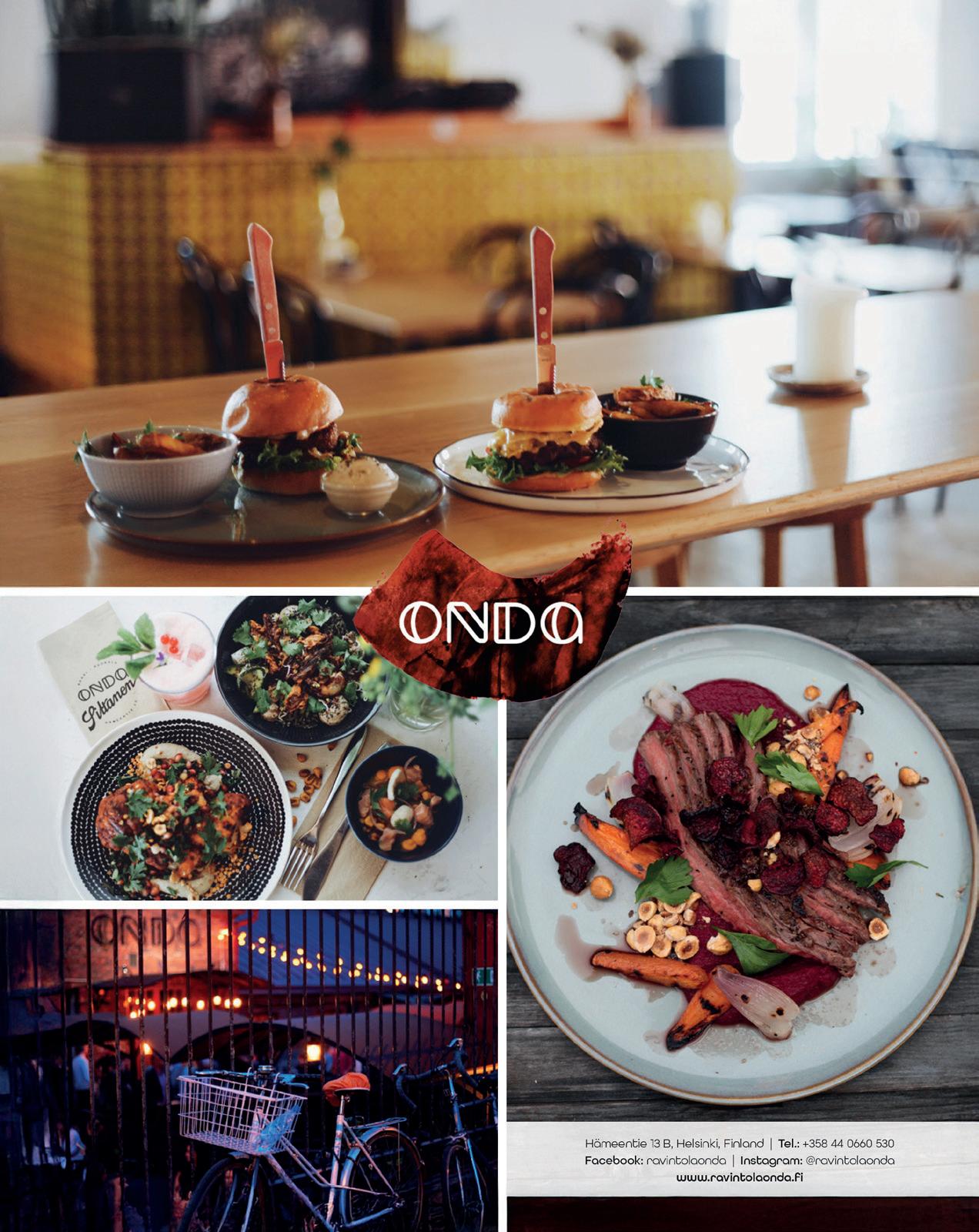
DESIGN TREASURES MADE IN SWEDEN

A TASTE OF STOCKHOLM THE CITY’S BEST BEER BARS ON HER DECADE OF LIVING




A TASTE OF STOCKHOLM THE CITY’S BEST BEER BARS ON HER DECADE OF LIVING


Dear reader,
As the Nordic days grow longer and spring edges into summer, the region takes on a fresh energy – it’s the time to dream and celebrate the beauty of all things Scandinavian.
In this issue, we celebrate the beauty of Scandinavian design, in particular with a carefully selected presentation of Scandinavian design gems and secrets. From the tactile beauty of iconic chairs made in Danish Cord and the classic designs from the Finnish design master Yrjö Kukkapuro, to a Danish design duo interpreting the ancient past.
Further in, we turn our gaze to Sweden, with a design theme celebrating thoughtful craftsmanship from brands like Moz Sweden, Richtmann and MAEN Watches. Staying in the nation, our inhouse beer expert gives us a walk-through of the best spots to enjoy a taste of Stockholm’s ever-evolving beer scene.
Beautiful design and beer are just some of the things Scandinavia is known for, and in this issue, we catch up with someone who has become quite the expert on Scandinavia’s many quirks and passions. British author Helen Russell, who spent a decade discovering the secrets of Danish happiness, is now back in the UK. In our
cover feature, she tells us all about how her life in Denmark turned her into an ambassador for Danishness.
Meanwhile, in our theme on Norwegian cabins, you can carry on dreaming about life in the mountains as we highlight the quiet richness of cabin life and the service providers and cabin builders who help make it possible.
As ever, you’ll also find small delights throughout the issue: our pick of grills for the season, delightful culinary experiences, and oh so tempting getaways.
So, if you're ready to immerse yourself in the beauty of Scandinavian design, the dreamlike nature of mountain getaways, and the deliciousness of its food and drink, just turn the page.
We hope you enjoy reading this issue as much as we enjoyed creating it.

Signe Hansen, Editor
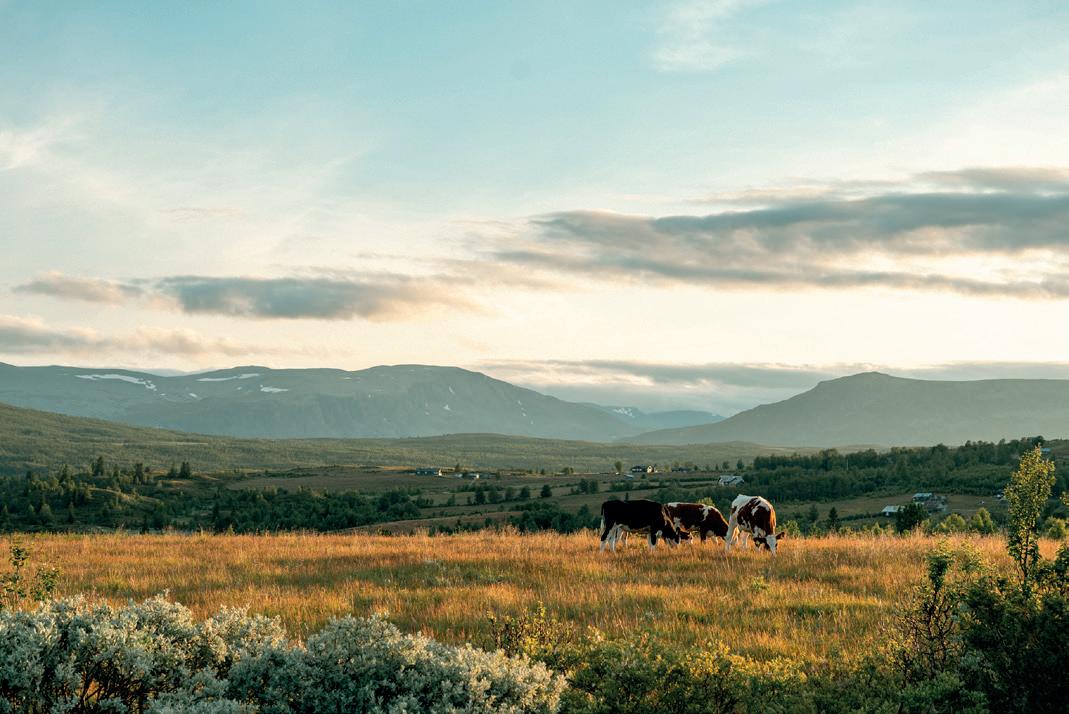
6 Helen Russell’s decade of living Danishly
An ambassador for Danishness, British author and journalist Helen Russel has published no less than six books, including her bestseller The Year of Living Danishly. In this interview, she elaborates on her hygge-obsessed former home country and why the Nordics top happiness indexes year after year.
10 Summer outfits and clever design solutions
On our design pages, we celebrate the arrival of summer with fun, frills and fantastic outfits. We also feature outstanding design companies, including a Danish duo inspired by ancient sculptural traditions, and a Finnish business crafting auditorium furniture.
24 Oven-baked oatmeal and hop water
In this issue, food writer Sofia Nordgren serves up a new breakfast favourite: oven-baked oatmeal. And beer sommelier and beer judge Malin Norman uncovers the mysterious hop water trend.
26 Stockholm’s best beer bars
In this guide, we recommend some of the best beer bars in Stockholm, from cool hotspots to classic hangouts, and where to best enjoy your beer with a view.
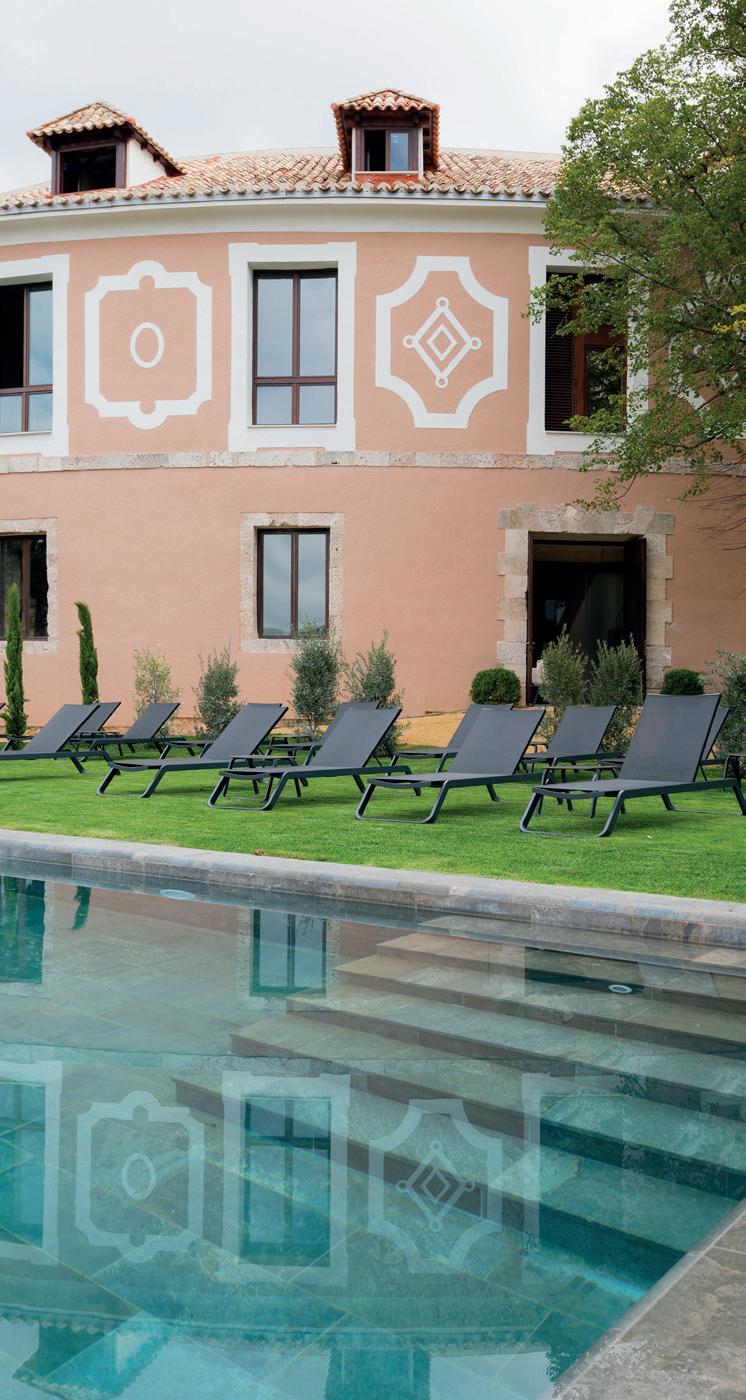
62
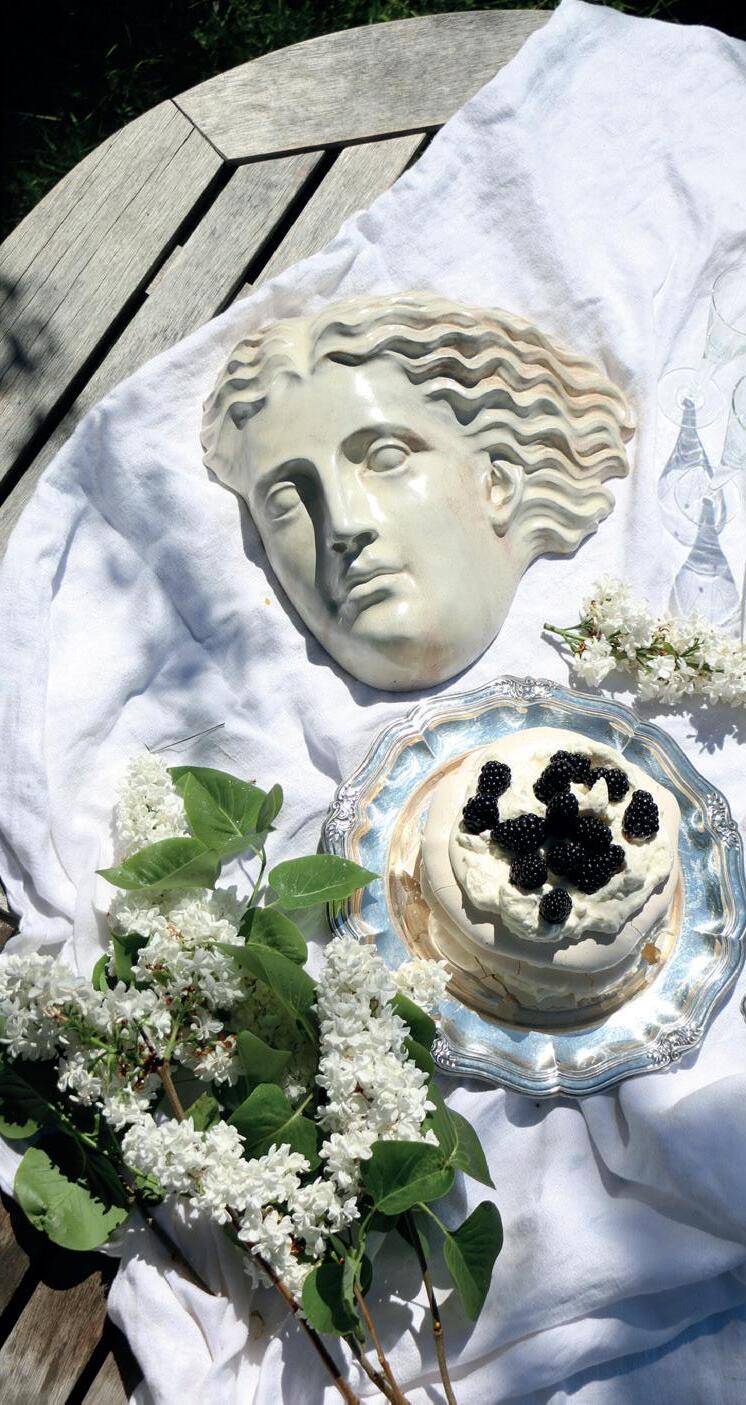
30 Made in Sweden
Sweden is known for its innovative design. In this theme, we discover a playful elk that is taking over the world, retro-inspired watches, handmade leather bags and plant-based fragrance products, and small-scale art with a bigger purpose.
42 Norway’s premier cabin products and services
Highlighting the ever so popular Norwegian cabin culture, we take a closer look at some of the country’s foremost producers and service providers – for a winning combination of cosy charm and modern comforts in your hytte.
68 The best new events and music in Scandinavia
In this month’s Culture Calendar, music columnist Karl Batterbee tempts with fresh finds to soundtrack our June, film enthusiast Anders Lorenzen reflects on the health of the Nordic film industry, and illustrator Gabi Froden contemplates sunbathing in roundabouts.
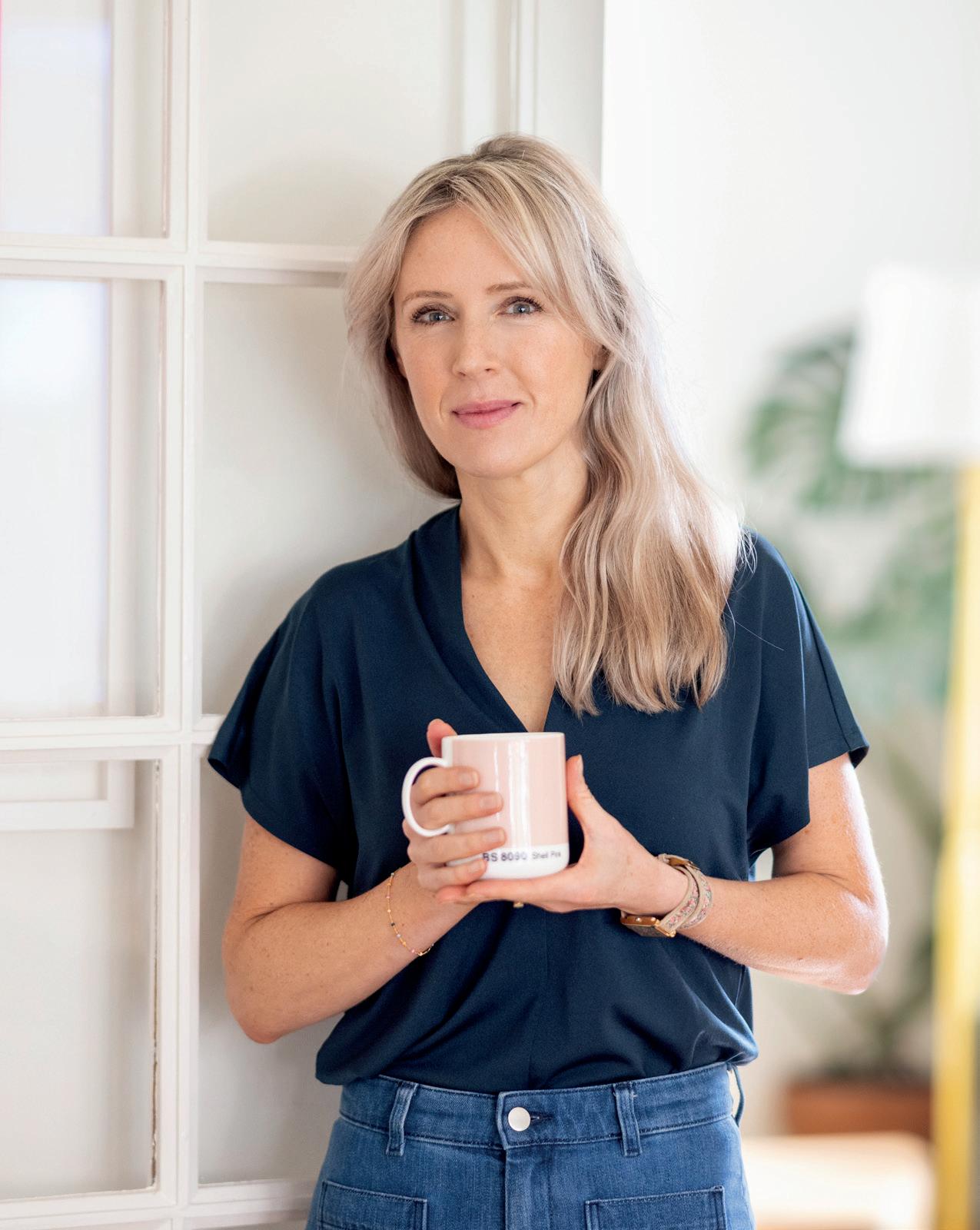

Helen Russell has become an ambassador for Danishness. In 2013, her husband took a job at LEGO’s headquarters in Denmark, and the couple left London for rural Jutland’s ‘Sticksville-on-Sea’. Six books and three children later, she and her husband returned to the UK last year.
By Xander Brett
Russell chronicled her international experiences in a bestselling book, The Year of Living Danishly: Uncovering the Secrets of the World’s Happiest Country It was a year, of course, that soon became a decade and a bit.
“It felt strange to come back,” says Russell. “My kids were sad to leave, but although there was so much that I loved in Denmark, it’s starting to feel like home here. I go back quite a lot for work, and in April I returned for the first time with my kids and my husband.”
A former editor of marieclaire.co.uk, swapping stilettos for ‘Sticksville’ required a certain change of mindset.
“We were in Jutland,” Russell explains. “It’s not Copenhagen, the jazzy bit of Denmark that everyone has heard of. I call the first place we lived ‘Sticksvilleon-Sea’ because it was so remote and there were so few people. We were there for four years, then we moved to Vejle, which is a beautiful town.”
Born in Denmark, Russell’s children all speak Danish. Russell, however, admits there is work to do when it comes to her and her husband’s proficiency.
“When we went back recently, I was worried about how my children would get along speaking Danish with their
friends,” she says. “Actually, it was fine. My daughter barely turned round to wave goodbye before disappearing on a 26-hour playdate with someone she has been friends with since nursery.”
A hygge-obsessed home country
With The Year of Living Danishly flying off the shelves, Russell knuckled down as The Guardian’s Scandinavian correspondent. She was also called on by a host of other outlets. The UK was deep in its hygge craze – an obsession with the Danish word that encapsulates all things cosy and convivial – and, as her book’s full title points out, back then Russell’s adopted country sat atop the World Happiness Report’s annual national rankings.
“I think most Danes were baffled by it,” says Russell of the UK’s hygge fascination. “Hygge is so normal for them. It’s not a fad, but a way of life… something they’ve been living with for hundreds of years. Some Danes were a little frustrated to see it co-opted for marketing purposes. Hygge shouldn’t be an extra expense. You don’t need a special mug or candle.”
As a (now former) Brit abroad, British readers are a pillar of Russell’s readership. The Year of Living Danishly has been followed by a steady stream of successors. First, there was Leap Year: How Small Steps Can Make a Giant Difference. Then came Gone Viking, her debut novel.
The Atlas of Happiness: The Global Secrets of How to Be Happy was next, before How to Be Sad: Everything I’ve Learned About Getting Happier, By Being Sad, Better, and How to Raise a Viking: The Secrets of Parenting the World’s Happiest Children, which was released in
paperback in February. Her seventh book – a novel, scheduled for publication next year – is in the works.
“My readership is largely in the UK and US,” shares Russell, “but there’s an interest in the Nordic way of life from countries you
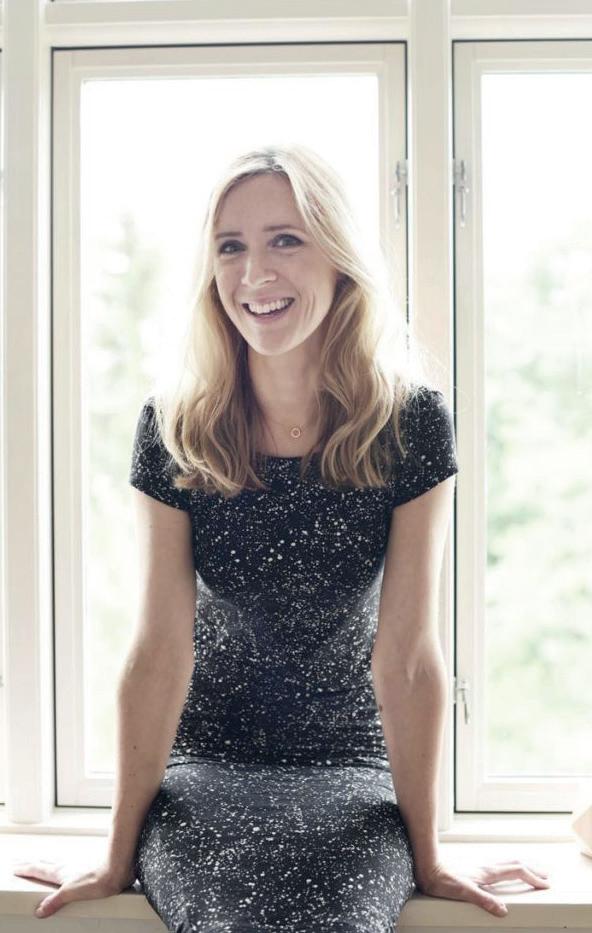
wouldn’t necessarily expect. I think many people are looking for something different. Scandinavia can offer them that.”
Growing up the Nordic way Russell says that Danes have happiness instilled in them from an early age. This is thanks to, she thinks, high levels of trust, something that gives children freedom to engage in play which might seem risky but is often considered healthy and adventurous.
“ In The Atlas of Happiness , I looked at happiness concepts around the world,” she explains. “And in How to Raise a Viking , I wanted to find out why the Nordic countries are doing so well, because it’s no coincidence that they top happiness indexes year after year. They have a good work/life balance. People fight for more time, rather than for extra money.”
Spending time outdoors, Russell adds, is vital. That begins at an even younger age, with many Danes parking prams with sleeping babies outside shops and cafés.
“When I arrived, I thought that was madness,” she recalls. “But I did it with my

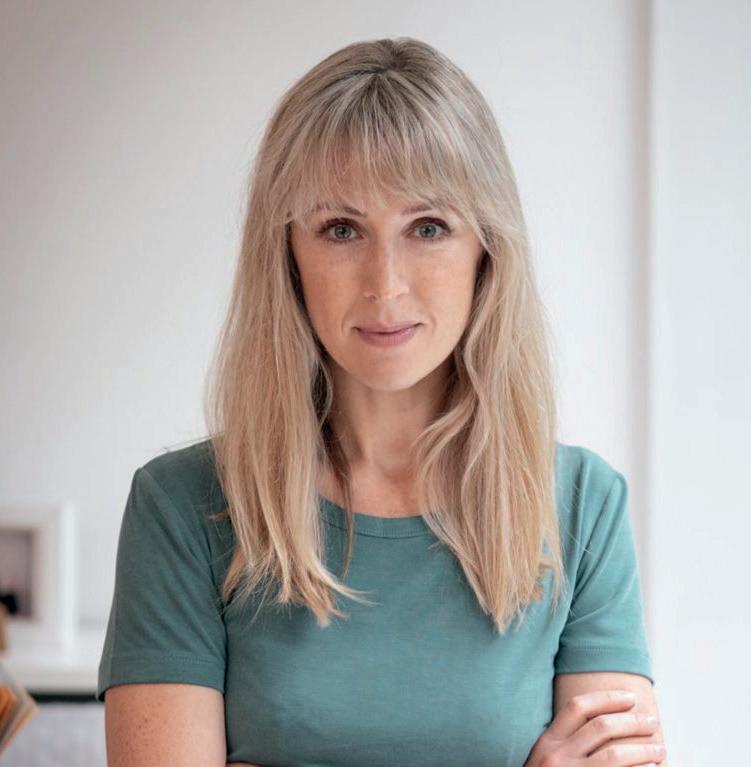
first child, and when I had twins, I discovered that you couldn’t fit a double stroller in most places, so leaving it outside became perfectly normal. Tillid means trust and faith in Danish. Most Danes say they have tillid in their community. Friluftsliv – a belief that fresh air is good for you – is another core philosophy in the Nordic countries. Children spend hours outside in all weathers. In winter they wear flyverdragter or snowsuits that they can zip up themselves by the time they’re about two.”
Contentment away from southern sunshine
Alongside her writing, Russell’s research has formed the basis of a podcast (How to Be Sad with Helen Russell) and a number of talks and lectures.
“I was a researcher at The Sunday Times, then I worked for Marie Claire, so I’d written about lifestyle and culture, but not about happiness specifically,” says Russell. “Something about moving
to a cold, dark country that topped happiness polls intrigued me. My interest in happiness was born purely from living in Denmark and looking at what was around me.”
She may have wound up back in Britain, but Russell’s Scandinavian stint has left an indelible mark on her global outlook.
“I didn’t learn much about the region at school, so I was pretty ignorant before I moved there,” she concludes. “Living in Denmark, though, has transformed the way I think about many things. I feel I’ve spent much of my adult life there. My children have always had a bit of a dual identity. They met people in Denmark who I hope they’ll be friends with forever. But there’s lots of Danishness left in me too.”
Instagram: @mshelenrussell
Substack: @mshelenrussell
Website: www.helenrussell.co.uk
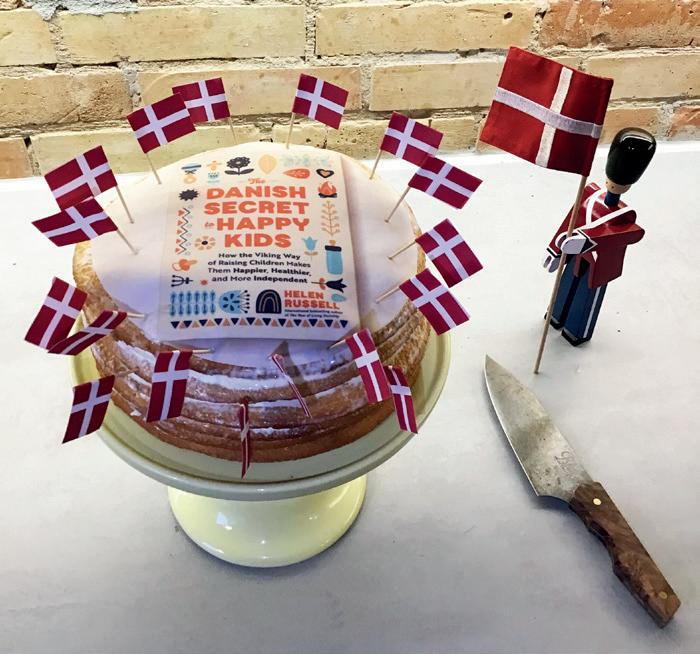
With June’s much-anticipated arrival, the full promise of summer begins. Celebrate this warm, eternal season with fun, frills, and of course, fantastic outfits!
By Celina Tran | Press photos

Anny Nord – MATRIX 35 slingback in chocolate brown
These brown leather slingbacks are bound to catch people’s attention as you stroll along the streets. Though their sharp and pointy design might seem intimidating, they have a comfortable kitten heel, making them perfect for work, parties, or date nights!
MATRIX 35 slingback in chocolate brown, USD 395 www.annynord.com
byTiMo – Viscose halter neck dress in Tea Garden
Early summer is the time to get those pretty summer dresses out again. Whether for a casual stroll through a Mediterranean coastal town or for a garden party, this light viscose dress from Oslo-based byTiMo is perfect for a range of occasions. Should the temperatures rise, the halter neck, no sleeves, and dreamy flounce will keep you comfortable while looking great.
Viscose halter neck dress in Tea Garden, EUR 390 www.bytimo.com ww.ganni.com

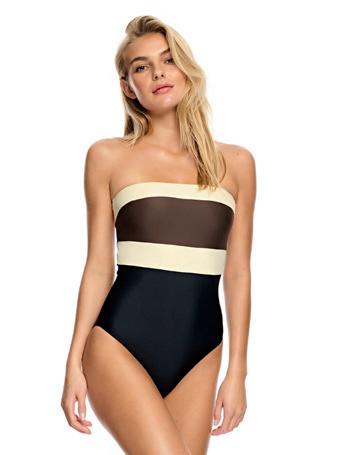
SCAMPI – Jamaica swimsuit in cocoa
Sunny June sees our return to the sea, so make sure to pack SCAMPI’s stunning strapless swimsuit. The design is minimalistic but charming, with natural colours to compliment that bronzy complexion you will doubtlessly catch any day now!
Jamaica swimsuit in cocoa, SEK 1,695 www.scampi.se
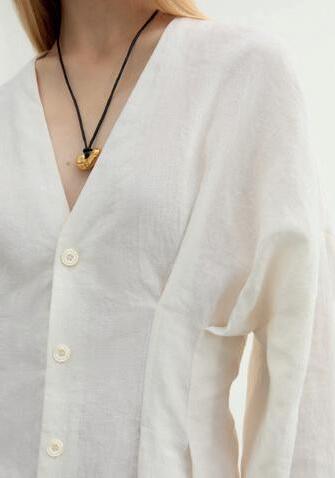
Rodebjer – Horst linen blouse
While welcoming summer with open arms, we must acknowledge it also has its downsides. In particular, the hot days might leave you clammy and sweaty, so make sure to wear fabrics that breathe. From Swedish brand Rodebjer, the Horst linen blouse is not only light and loose, but expressive. Shaped with a cinched waist and a relaxed V-neck silhouette, it adds a touch of elegance and femininity to any outfit. Why not try a matching pair of linen trousers for a monochromatic, Nordic look?
Horst linen blouse, EUR 345 www.rodebjer.com
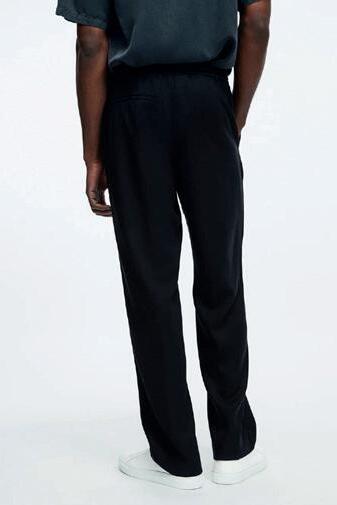
A Day’s March – Tamiat drawstring Lyocell trousers in black
Made from 100 per cent TENCEL™ Lyocell, A Day’s March has made the perfect relaxed drawstring trousers. While loose and slightly dropped at the crotch, they look good enough for any evening cocktail party. In fact, the minimalistic, breezy style works with a range of pieces depending on whether you want to dress it up or down, and will continue to serve you well through both summer and into early fall.
Tamiat drawstring Lyocell trousers in black, USD 160 www.adaysmarch.com

Arket – Striped swim shorts
The classics are considered classic for a reason, which could certainly be said for men’s stripey swim shorts. White and a beautiful Mediterranean blue, these swim shorts have an elasticated waist, side pockets, as well as back pockets with a zip. Whether sipping cocktails by the beach bar or snorkelling, the holiday photos will catch you looking timeless in these Arket shorts! Striped swim shorts, EUR 39 www.arket.com
Tiger of Sweden – Tweedy wool rugby shirt
Tiger of Sweden’s Tweedy is a classic-fit rugby-style shirt made from merino wool and cotton. Light, breathable, and earthy with its brown and cream stripes, it can be worn all yearround. Throw it on when the evenings get chilly or tie it around your shoulders to elevate the rest of your outfit.
Tweedy wool rugby shirt, SEK 2,499 www.tigerofsweden.com
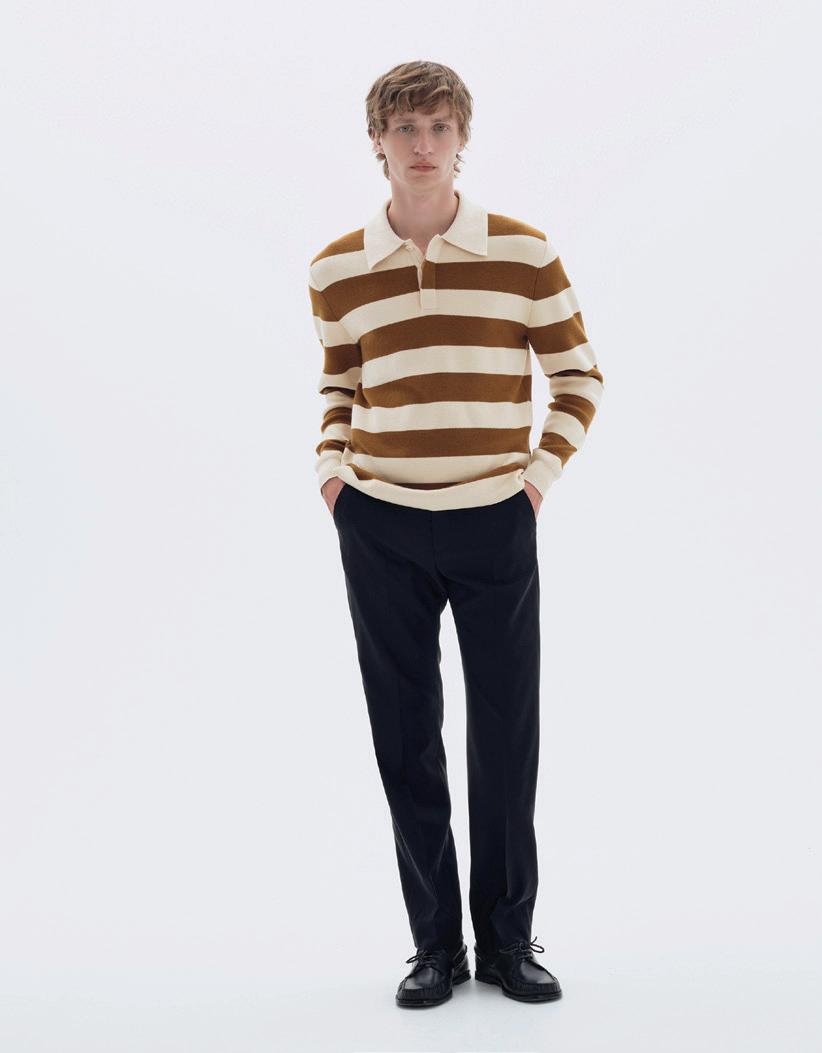
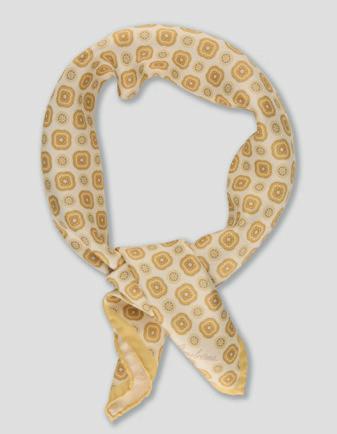
Stenströms – Yellow patterned silk bandana
While the Scandinavian palette tends to lean towards minimalism, summer is all about colour and fun. If not one to stray too far from the basic palette but still want something playful, why not try to accessorize with a pop of colour? Swedish Stenströms’ silk bandana can be worn around your neck, but also in your hair or tied to your bag. Also available in pink and green. Yellow patterned silk bandana, EUR 159 www.stenströms.com

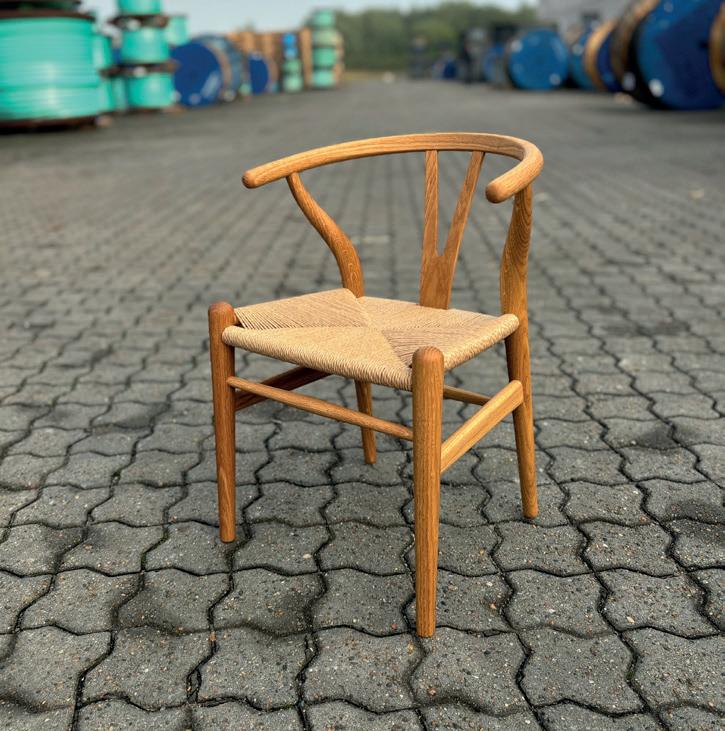
If you have ever admired a Danish design classic like Hans J. Wegner’s Wishbone chair or Børge Mogensen’s timeless People's chair, chances are you have also admired the subtle beauty of the Danish Cord. Hand-braided into each seat is the quiet craftsmanship of Randers Reb, whose signature paper cord has become a hallmark of Scandinavian furniture design.
By Signe Hansen | Photos: Randers Reb
Created in the 1950s, the Danish Cord quickly became a favourite material of Danish design masters, and to this day, the cord is still renowned for its natural aesthetic, durability, and sustainability.
"This is the original paper cord," explains Jesper M. Povlsen, sales and development. "There are other options on the market, but nothing matches the quality that Randers produces to this day."
With its tactile warmth, the Danish Cord blends beautifully with natural materials such as wood, making it the material of choice not just for mid-century masters but also for a new generation of designers.
Founded in 1840, Randers Reb began as a manufacturer of maritime ropes, producing cords from natural fibres and, later, steel wire. The company’s nearly two centuries of experience in rope production laid the groundwork for its later
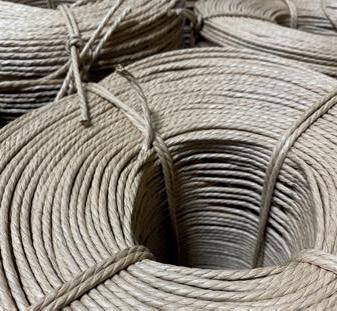
expansions into playgrounds and parks, and rope for furniture.
The venture into furniture began in the late 1940s and early 1950s, a time when Europe was recovering from war, and access to traditional seating materials like seagrass and rattan was limited. "Paper became the obvious alternative," says Povlsen. "It could be produced in large quantities, its properties could be controlled, and its quality was uniform – something you can’t always count on with naturally grown materials."
The woven paper cord offered a clean, uniform look that perfectly suited the minimalist ethos of Danish modern design. "It played very well into the strict design from Wegner and Mogensen," explains Povlsen. "Maybe partly due to Wegner's success, a long tail of new designers was looking to him for inspiration, which is why so many Danish design chairs carry this particular form of seat."
Creating a Randers Reb paper cord seat is a meticulous process. A single dining chair seat takes about an hour to braid by hand, more for lounge chairs. The craftsmanship involved is characteristic of the quality of the product, and, on its end, Randers Reb makes sure to never compromise on that quality. That, for instance, means that the company avoids making changes and stays with long-term partners.
“We supply cord to large companies that produce thousands of chairs each month, and that means the risk of making changes to gain a little or be able to lower the price is just too big,” stresses Povlsen. “If you put 1,000 or 2,000 chairs on the market each month expecting them to last ten years, and then find the new material can’t handle the challenge, you’ve already placed thousands of chairs before you find out. That’s why we don’t make changes to the production, the material we use, or the paper. We stick to the quality we know, the quality our clients know, and the quality everyone trusts to do what it’s supposed to do.”
This commitment to quality runs through every division of Randers Reb – whether crafting nets for playgrounds, ropes for maritime use, or cords for enduring design classics.

While sustainability is one of the big buzz words in design, it is not an afterthought for Randers Reb – it is woven into every fibre. The company uses FSC® certified paper sourced exclusively from European suppliers and does not add any chemicals apart from wax during the production process, which gives it natural resistance to stains and fluids.
This means that the paper cord is not just biodegradable, it is compostable. "Clients have told us that they’ve removed old seats and thrown them into compost heaps. After a year or two, they’re completely gone," says Povlsen and continues; “Despite this, we see seats that last for 20, 30, even 40 years. It really is an

inherently sustainable product.” On top of this, all production is powered by renewable electricity.
Staying rooted in its tradition of quality and craftsmanship, Randers Reb continues to evolve and expand its portfolio. One of the furniture division’s recently relaunched products is Flagline, a thicker, braided cord available in multiple colours. The cord was originally used in designs by Hans J. Wegner and Poul Kjærholm, and has stayed relevant in various designs over the years, most recently used by contemporary designer Kasper Throup, who won acclaim with a Flagline-seated chair on Danish TV series Danmarks Næste Klassiker.
Most recently, the company has launched a synthetic fibre line designed specifically for outdoor furniture – a fast-growing market. "Ropes and cords are really seeing a resurgence," says Povlsen. "At Milan Furniture Fair, ropes were everywhere. We’re gaining traction, especially in outdoor furniture. That’s the next thing we want to go for."
www.randers-reb.com
LinkedIn: randers-reb-international-a-s Instagram: @randersreb_furniture
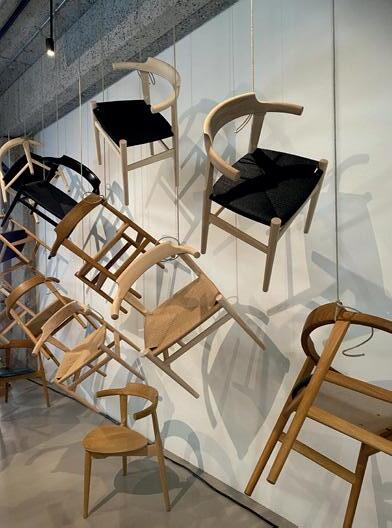
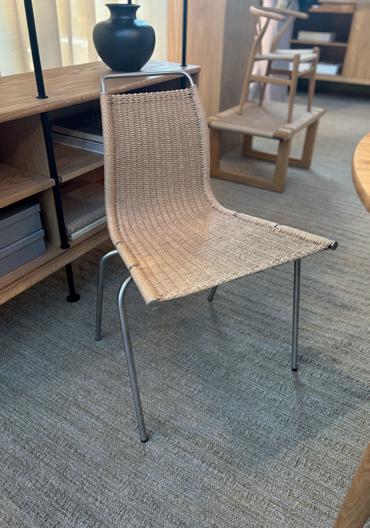

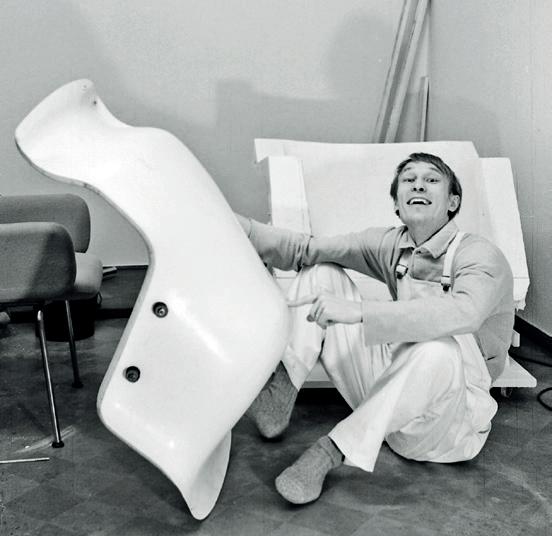
For more than six decades, Yrjö Kukkapuro shaped Finland’s furniture design scene. His chairs did not just offer comfort – they sparked conversation, brought joy and embodied an enduring belief: that beauty and ergonomics need never be at odds.
By Ndéla Faye
Kukkapuro began his design journey in the late 1950s, paving the way for Finnish design on a world stage. But while many of his contemporaries leaned into the clean austerity of Nordic minimalism, Kukkapuro took a more human-centric path, focusing on user experience while embracing playful forms and experimental materials.
A true visionary Kukkapuro’s most iconic piece, the Karuselli chair (1964), became a symbol of his ingeniousness. With its futuristic fibreglass shell, swivelling base and enveloping leather seat, the chair was a radical departure from traditional forms and was quickly recognised as a modern classic. The New York Times once declared it “the most comfortable chair in the world,” and today the chairs have found their way to the permanent collections at Museum of Modern Art in New York and Victoria & Albert Museum in London.
In 1983, Kukkapuro designed the boldly angular Experiment. The chair was relaunched to critical acclaim in 2024, embraced by a new generation of design lovers drawn to its avant-garde sensibility.
Studio Kukkapuro: a creative sanctuary
At the heart of Kukkapuro’s practice was a place that held a deep importance both personally and professionally. In 1969, Kukkapuro and his wife, graphic artist Irmeli Kukkapuro, designed and built Studio Kukkapuro – a striking concrete, steel and glass structure – in Kauniainen. For decades, it served as their home and shared creative sanctuary: part residence, part workshop, part living archive of one of Finland’s most influential design partnerships.
At the age of 91, Yrjö Kukkapuro died in February 2025, and now the baton has been passed to the next generation.
Studio Kukkapuro is being turned into a home museum and a centre for design by Isa Kukkapuro-Enbom and Ida Kukkapuro, Yrjö’s daughter and granddaughter, who are now the proud custodians of the Kukkapuro legacy. “We’re not just preserving my father’s work –we’re also ensuring that his ideas and vision continue to evolve and resonate with people,” Kukkapuro-Enbom says.
www.studiokukkapuro.com www.yrjokukkapuro.com Instagram: @yrjokukkapurocollection @studiokukkapuro @livelikeakukkapuro
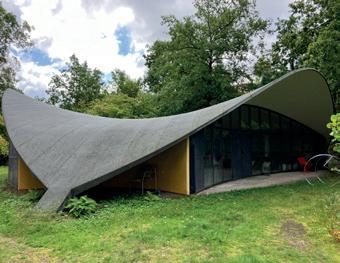
The Remmi Chair offers full-body support and invites deep relaxation.Thanks to its modular design, the lounge chair can easily evolve into a sofa of virtually any length, adapting to different spaces and needs with ease.
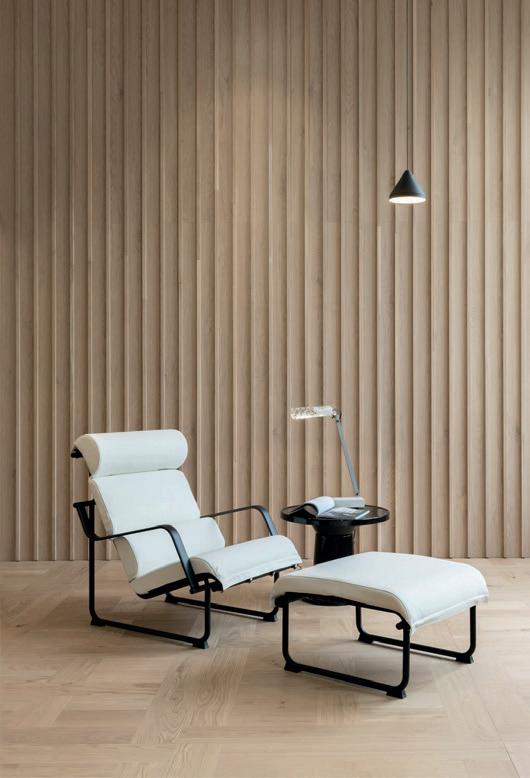
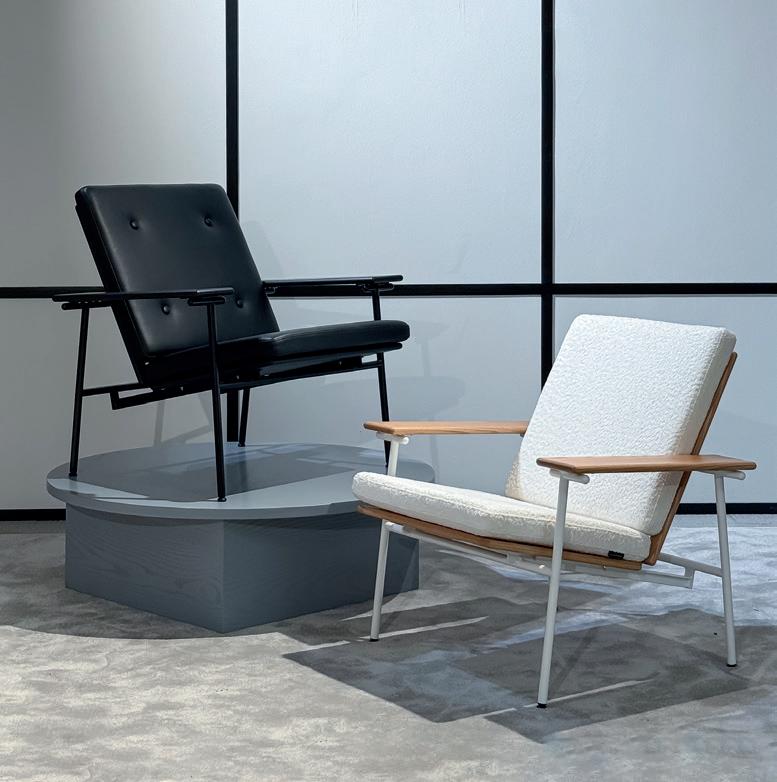
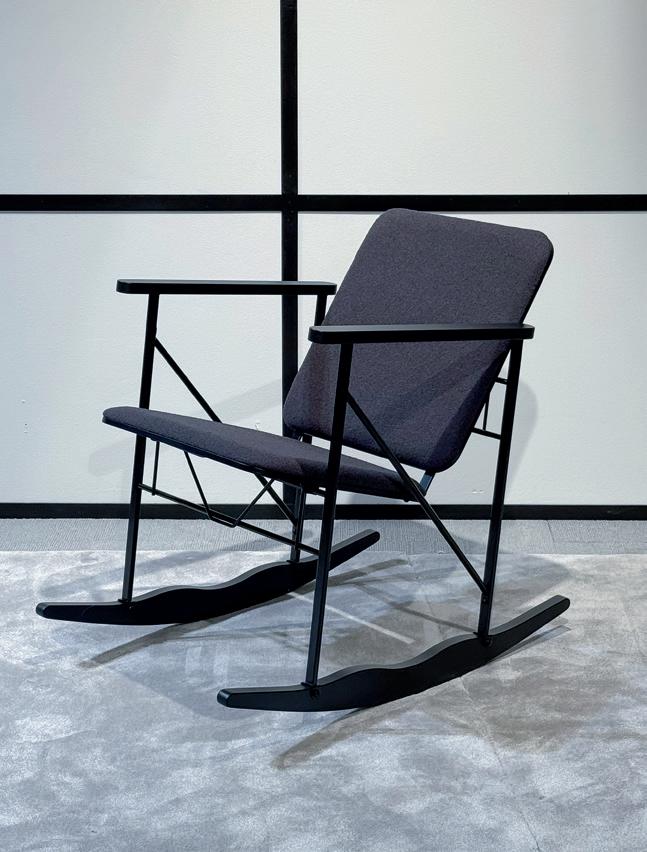
The Triennale Chair, originally designed by Yrjö Kukkapuro for the Milan Triennale in 1960, is back in production. With its minimalist metal frame, wooden elements, and separate cushions, the chair is a timeless classic.

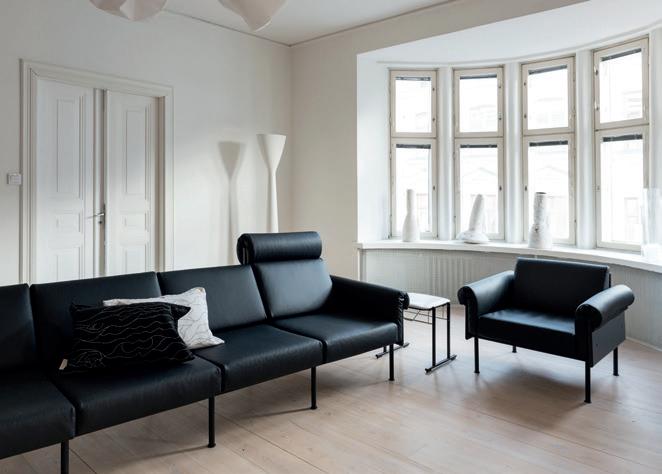
Ateljee’s strength lies in its modular structure, which allows it to transform from a single seat into a sofa of virtually any length. This modularity is not only about flexibility in form—it also ensures exceptional durability and reparability, making the Ateljee a truly sustainable design choice.
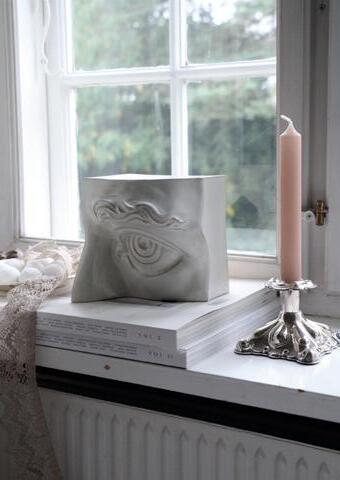
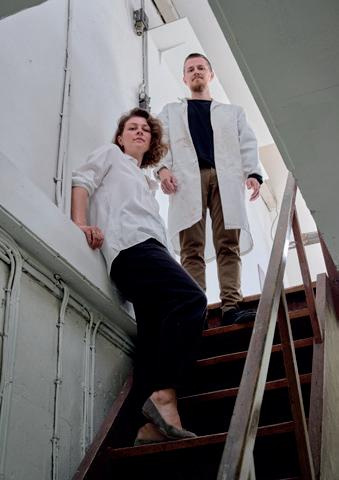
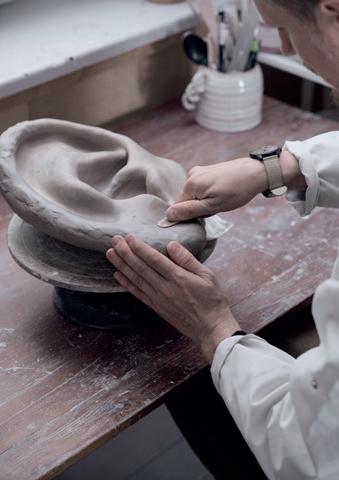
Inspired by the sculptural traditions of the ancient Greek and Roman empires, the Danish design and sculpture duo Laoru Laoru brings a touch of the stoic calmness to modern-day homes. With details of the human face, handmade and cast in ceramic earthenware, the works of the duo demand a level of craftsmanship rarely seen in the world of interior design.
By Signe Hansen | Photos: Laoru Laoru
Having practised sculpture for more than 16 years, Jacob Laoru has always been inspired by the ancient traditions of craftsmanship. Together with his wife Katrine Laoru, who has a background in interior design, he strives to reshape these traditions to complement the world of modern interior design. “The idea for our business is to approach sculpture foremostly as sculptors and secondarily as artists,” he explains. “Of course, we focus on the artistic value and on reimagining old sculptural traditions in a more modern setting, and that takes a lot of artistic choices along the way, which is equally important – but our foundation is in the traditional craftsmanship.”
The handmade, cast, and glazed ceramic works are based on the duo’s vision of the naturalistic treatment of the human figure in ancient sculpture, but with signifi-
cant input from his work and life partner. “We’ve always been in dialogue about what I make,” Jacob says. “And, now, she also works with producing the pieces and shaping the line we’re developing.”
Each new piece begins with a concrete source of inspiration, often a specific sculpture or architectural element. From there, the process becomes less straightforward. “It takes a lot of sidesteps and dead ends,” Katrine explains. “We experiment with translating the inspiration into new forms. It involves directly manipulating the clay, drawing on experience, and thinking through each iteration until it becomes what it’s meant to be.”
However, once in someone’s home, the artwork may become something else again – pieces by Laoru Laoru are often modular, allowing buyers to assemble
them in different ways and, in that way, take part in the artistic process. At the core of all works, however, is a shared aim to reintroduce a presence of calmness into people’s lives. “There is an aspect of the Greek and Roman sculptures that is very stoic and that’s a quality we strive to keep in our reinterpretation – providing a sense of groundedness, which is something I think is valuable in our society today,” concludes Jacob.
www.laorulaoru.dk
Instagram: @laoru.laoru



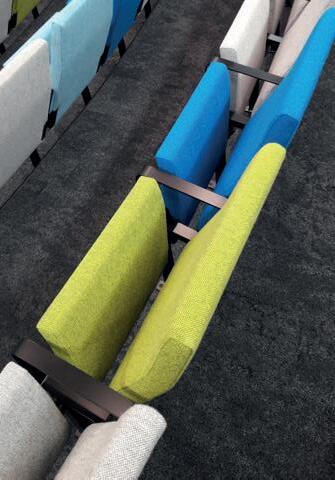
As a design-led company, Hamari has over 30 years of experience in crafting auditorium furniture. Each chair, bench and fixture tells a story of dedication to Finnish craftsmanship, acoustic precision, and timeless quality.
By Ndéla Faye | Photos: Hamari
Founded in 2014, Hamari delivers bespoke auditorium furniture solutions worldwide, in close collaboration with architects and designers. Each Hamari piece is tailored to suit the unique demands of each space, and no two auditoriums are the same.
With roots in the coastal village of Hamari near Porvoo in southern Finland, the company draws inspiration from traditional Finnish woodworking and has built a strong international reputation, with clients across the globe, particularly throughout Europe.
“Our work is not just about making seats. It’s about creating an environment where people gather, perform, listen and make memories. The furniture is part of the experience,” says Jari Jääskelä, CEO of Hamari.
Built with care and attention
The company’s furniture is designed to stand the test of time. Each piece is the
result of close collaboration between carpenters, designers, and engineers. “The choice of material is critical, not just for the look and feel, but also for sound,” Jääskelä explains. Theatre and concert hall seats, for instance, must support the acoustics of the room even when unoccupied and the wrong fabric or wood can distort sound.
Hamari’s all-time bestseller, the Primo chair, was designed nearly 30 years ago, and over the years it has been adapted into virtually every possible variation. Hamari is launching new chairs in the near future, and the company’s goal is to
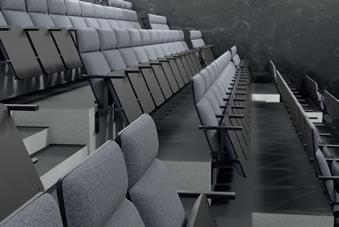
reach carbon neutrality in product design within the next year.
One thing remains unchanged: Hamari continues to prioritise simplicity and refinement in its designs, typically using just three core materials – wood, upholstery and metal – which makes the chairs easy to service and recycle at the end of their lifecycle. Over the years, this quiet, considered approach has resulted in work that is quietly iconic – though the team remains disarmingly humble about it. “In an auditorium, the best kind of furniture is usually the one you don’t notice – it supports, rather than distracts. Our job is not to be flashy. We’re trying to be precise and purposeful in what we do. Invisible in the best way,” the CEO concludes.
www.hamari.pro Instagram: @hamari_auditorium

A fun fact that not a lot of people know about Scandinavians is that we are one of the most BBQ-loving people on the planet. What’s more, grilling is not just a summer activity in Scandinavia. Thanks to robust, weather-resistant grills, Scandinavians are known to grill year-round, even in cold or rainy weather. We take a look at some of the region's most popular, stylish and versatile BBQs, and we promise they will elevate your BBQ experience to a new level.
By Signe Hansen | Press photos

Essentials Grill from Röshults
Röshults may be best known for its luxury outdoor kitchens, but the Essentials grill truly distils the brand’s Scandinavian ethos. With its clean lines, minimalist silhouette, and timeless design, Essentials is a celebration of simplicity, with just a touch of summery decadence. For charcoal traditionalists or gas converts, this freestanding grill adapts to your style and space. Available in brushed stainless steel or a striking powder-coated Beluga Black, it’s designed to impress without ever shouting for attention.
Price: EUR 4,990 www.roshults.com
Modern Grill - Burgundy Red from Culnaro
Looking to add bold character and top-tier performance to your terrace? The Culnaro Modern Grill is the one to watch. Combining Danish design's clean lines and durability with Italian craftsmanship, this luxury grill is impressive in build and in style.
The sleek modern cabinet is not just eye-catching – it ’s weather-resistant and built to last. Inside, advanced technology gives you full control, with flexible heat zones and precise ignition that deliver perfect results every time, whether searing steaks or slow-roasting vegetables. The grill comes in six different colours – we are in love with the striking rich burgundy red.
Price: DKK 57,495 www.culnaro.dk

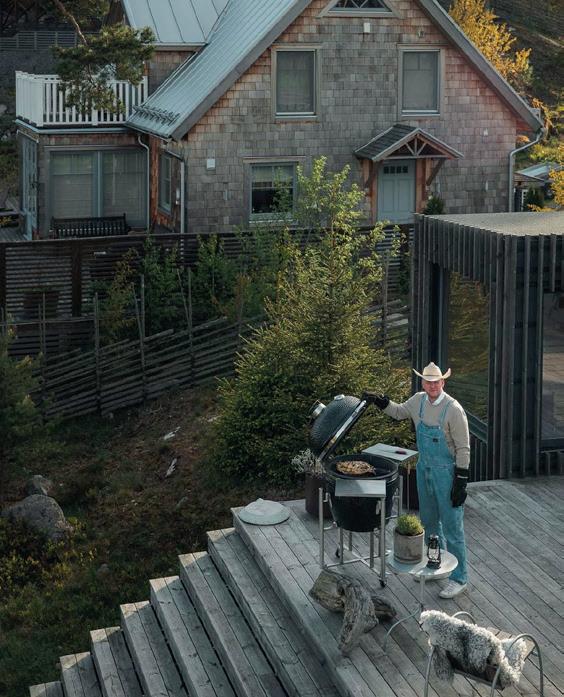
Kamado Sumo Maxi from Kamado Sumo
For those who take their barbecuing seriously, Kamado Sumo’s Classic Sumo is the ultimate outdoor companion. This Swedish-designed ceramic grill blends ancient Asian tradition with Scandinavian precision, delivering a versatile and powerful grilling experience. Whether cooking for the family or feeding a party of ten, this grill is built to handle it all. Made from thick, insulating ceramic, the Classic Sumo excels at holding steady temperatures – high or low – while locking in moisture and flavour. Perfect for year-round use, even in frosty Nordic winters, Kamado Sumo proves that outdoor cooking doesn’t stop when the season changes, and with the largest Classic Sumo, you can cook up a true feast for the whole family.
Price: DKK 10,999 www.kamadosumo.se

IKEA may be best known for flat-pack sofas and meatballs, but the GRILLSKÄR outdoor kitchen proves they know their way around a BBQ, too. True to form, IKEA delivers a budget-friendly BBQ setup that’s practical, clean-lined, and ready to handle everything from weeknight burgers to full-blown garden parties.
With four independently controlled burners and a generous cooking area, GRILLSKÄR gives you space and flexibility – whether you’re searing, slow-cooking, or just trying not to burn the corn. The cooking grate is made from high-grade, rustproof stainless steel, while the heat-insulated handles keep your fingers safe from accidental ‘chef’s kiss’ moments. There’s even a built-in thermometer on the hood, so you can check your temps without lifting the lid (because nobody likes heat-loss drama).
Price: SEK 4,795
www.ikea.com

The traditional Danish foundry business Morsø has a long-standing talent for turning cast iron into things you never knew you needed – until now. Take the Grill ’17, for instance: part sculptural statement, part culinary multitasker, and part bonfire buddy. This is the kind of piece that quietly transforms your terrace into the most popular gathering spot in the neighbourhood (whether you planned for guests or not).
With a rotating grill grate and plancha that adjust to different heights, the grill provides plenty of options while the cast iron soaks up all the good stuff (flavour, fat, flair), to make sure nothing goes to waste in the taste department. And when dinner’s done? Swing the grill elements aside, toss in a few logs, and you’ve got yourself a proper fire pit – just the thing for marshmallows, storytelling, or pretending to be the kind of person who always lights a perfect fire on the first try.
Price: DKK 10,999 www.morso.dk
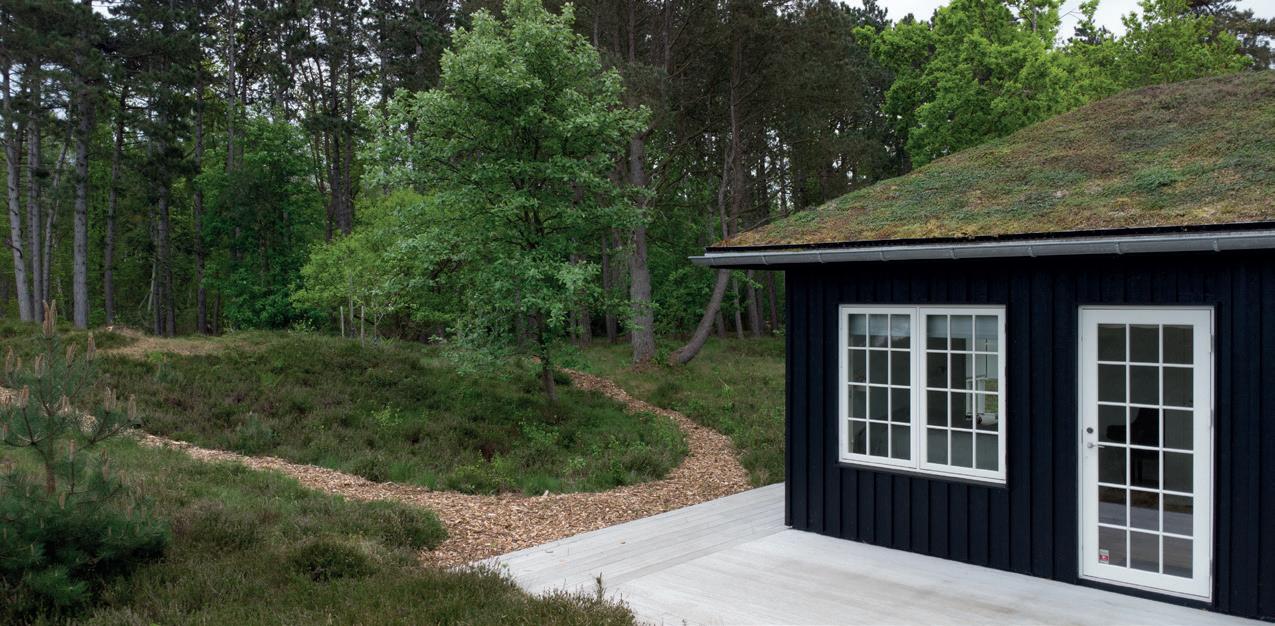
With a focus on simplicity, sustainability, and local collaboration, Anne-Louise Varming Kastbjerg, founder of Kalk Koncept, creates buildings that respect the landscape they inhabit. Grounded in dialogue and a thorough assessment of the plot, she designs from the inside out, helping her clients not only through the design and construction of their homes, but also with the final interior design touches.
By Signe Hansen | Photos: Birgitta Wolfgang
Anne-Louise Varming Kastbjerg spends much of her time helping families realise their dream holiday home. Whether her clients are young couples, families with kids or retirees, Kastbjerg helps them create a space that makes them feel at home.
“It’s not about being flashy or pretentious. A home in a forest or natural setting shouldn’t stand out – it should blend in,” she says. “We believe in going back to better building practices. Keep it simple, and never build at nature’s expense.”
Kastbjerg’s nature-first philosophy runs deep. Her great-grandfather, the re-
nowned architect Kristoffer Warming, was the co-founder of the organisation Bedre Byggeskik, and campaigned amongst other things against constructions that would harm natural landscapes.
Although formally educated as a construction engineer, today, Kastbjerg has been designing homes for over 15 years.
As a construction engineer, Kastbjerg’s first professional experience was with listed properties. Later, she spent several years working in the IT sector, managing
large-scale international projects. But nearly two decades ago, she returned to her architectural roots. “Originally, I had this idea that I wanted to create housing that was for everyone,” she recalls.
After establishing her business, a renovation project in the south of France sparked a wave of new client interest. “As soon as we finished the house, someone knocked on the door asking to buy it,” she explains. “After that, I received a steady flow of requests from others who wanted similar help and, eventually, someone asked if I could design a home from scratch – and I did.”
Today, Kastbjerg has a small team to help her, but she is deeply hands-on and personally involved in each project, and meeting clients, visiting plots, and reviewing wish lists are at the core of her work. “Each project begins with in-depth conversations with the client to get to
the core of their dream and wishes. We create each house specifically for the plot it will sit on and the family who will inhabit it, and that is why our houses cannot simply be copied and put on another plot for another family,” explains Kastbjerg. “They are designed, for instance, to make the most of the sun and the views, and to protect outdoor spaces from the wind. It’s never about building something grand or flashy – it’s about light, space, and feeling at home.”
This also means that Kastbjerg guides her clients through every step, from architectural planning and construction to lighting, interior design, and the placement of furniture.
Local materials and skills
While Kastbjerg aims to make her projects price competitively with type-cast houses, her approach could not be more different. She emphasises the importance of working with local teams and prioritises local materials and labour where possible.
Demonstrating this commitment, one of her recently completed projects, a thatched-roof house, was built using straw harvested locally in Odsherred. The surrounding landscape was framed with Danish fieldstones, and the roof was laid by a local thatcher. “We try to keep things as local as we can, all the way through,” she explains. “It creates a positive process
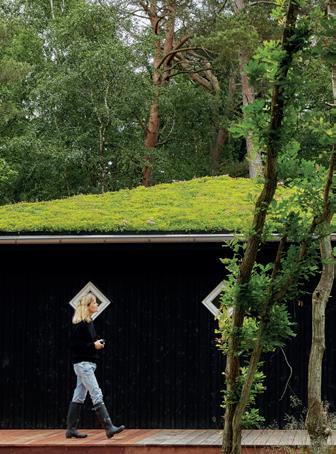
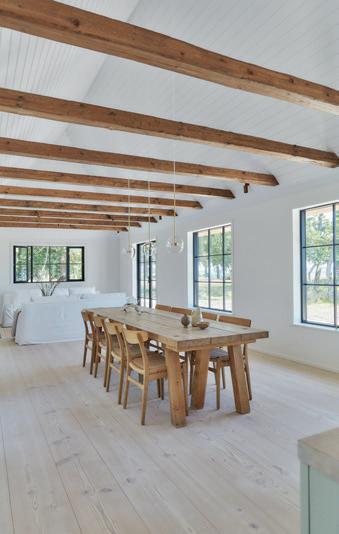
where everyone involved takes pride in the work. A big part of what I do is making sure everything is done in a good spirit.”
Currently, Kastbjerg is working on a small village of 30 holiday homes based on the same core principles, with thatched roofs, nestled into a natural landscape. The land will be recontoured to mirror its surroundings, and native vegetation and trees will be planted to create a natural and diverse landscape. “It’s about letting nature be present,” she says. “No hedges or trampolines – there are rules to protect the shared environment.”
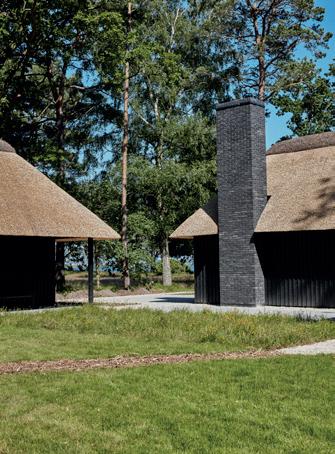
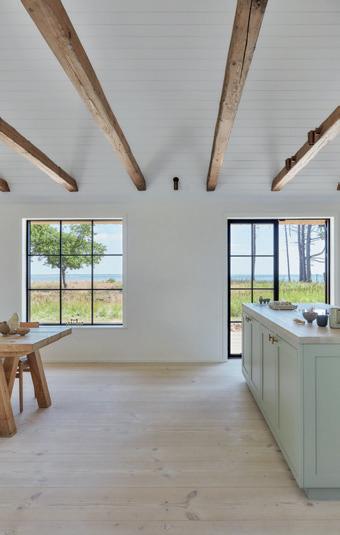
Another part of her work involves consulting for larger, institutional development companies, particularly on urban projects. “Many architectural companies design from the outside in. We always work from the inside out – we create spaces for living,” she stresses.
Restraint and economic sense
At its core, the aesthetic ideals of Kalk Koncept are grounded in restraint, and while much of her work may be considered high-end, Kastbjerg is committed to keeping her homes accessible. A recent project for a young couple with a tight budget proved that good architecture does not have to be expensive. “After following me on Instagram, they reached out and asked if I could help them design their dream house, even though their budget was tight. We made it work, and it turned out beautifully.”
The experience reaffirmed a key value for her: making sure that what clients pay reflects the value they receive. “If you spend a certain amount on a home, the value of the home should reflect that – it’s essential to me. As a consultant, I will always advise my client not to get carried away with solutions that won’t give value for money.”
info@kalkkoncept.dk
Instagram: @kalkkoncept
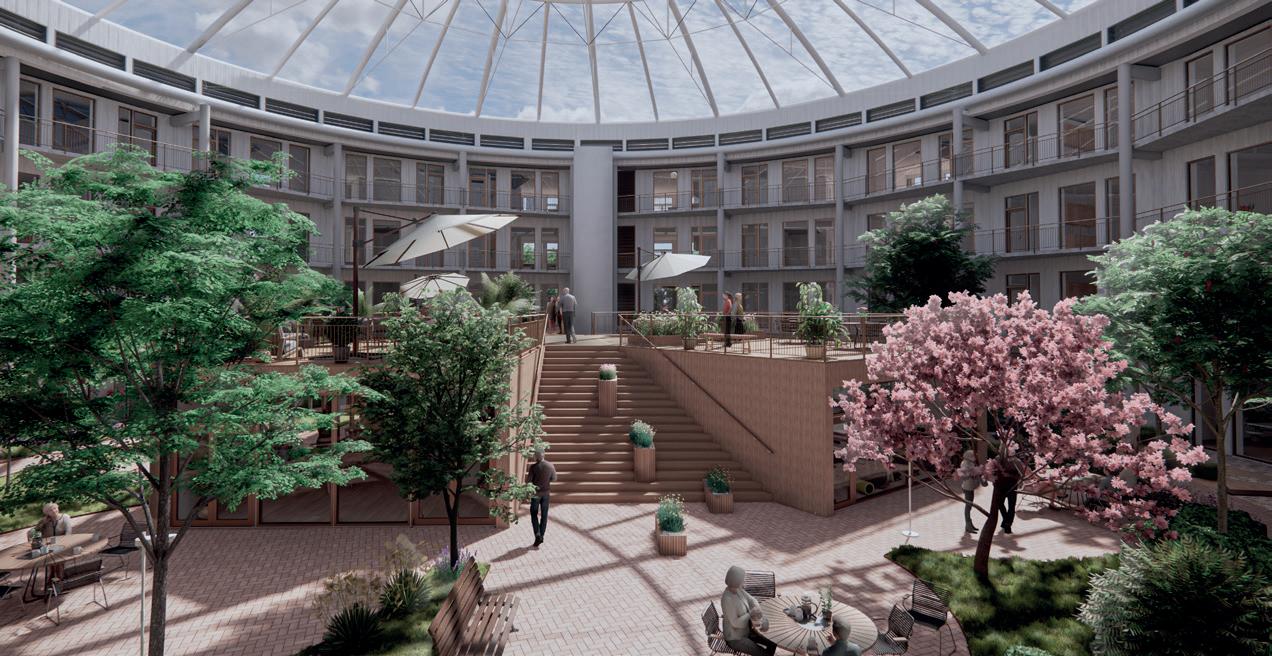
With the Uniq-Bo concept, CASA Arkitekter and its partner CG Jensen are redefining what life after 55 can look like – balancing comfort, community, and independence. Nothing like a retirement home, Uniq-Bo presents a striking circular living environment, combining the beneficial effects of greenery, community and recreational facilities to serve the evolving needs of seniors and empty-nesters.
By Signe Hansen | Renderings: CASA Arkitekter
The idea for Uniq-Bo began with a simple, highly relevant question: “What would we want when moving into a senior home?” That question, posed by initiative taker Finn Olsen and developed in close collaboration with Poul Qvist Hansen and Birgit Rasmussen, co-founders of CASA Arkitekter, resulted in a design where the needs and requests of modern-day empty nesters and seniors are at the core of everything. “The segment is developing rapidly,” explains Rasmussen. “The preferences for how one wants to live as a senior vary, but many express a desire for community, while also valuing privacy. And when the budget allows, there are also specific facilities people want access to.”
Central to the striking four-story circular design of Uniq-Bo is a large atrium at the heart of the building, allowing all residents to enjoy a protected outdoor environment all year round. From daily chats with neighbours to planned events like music nights, fitness classes, and communal cooking, the shared spaces invite participation without obligation. “Be yourself – and enjoy the community when you want to,” is a guiding principle.
By integrating shared experiences with private comfort, Uniq-Bo directly responds to a growing need: over 100,000 seniors in Denmark report experiencing unwanted loneliness, yet 93 per cent of those in community housing report im-
proved well-being. With long waiting lists and a significant gap in supply, the Uniq-Bo model offers a socially sustainable solution to a national challenge.
More than just a green space, Uniq-bo’s covered atrium provides a climate-controlled space for year-round outdoor-like living. “It was essential for Finn, who came to us with the idea, that people would not be stuck in their living rooms for all of winter,” adds Rasmussen.
At the atrium’s heart sits a pavilion with communal facilities and a large roof terrace. What exact facilities are to be included will be up to users and developers. “The design is flexible enough to accommodate different choices when it comes to amenities,” notes Rasmussen. “We’ve discussed the possibility of including amenities such as warm-water pools, fitness rooms, and shared kitchens, as well as a large TV lounge where residents can, for example, watch football together – creat-
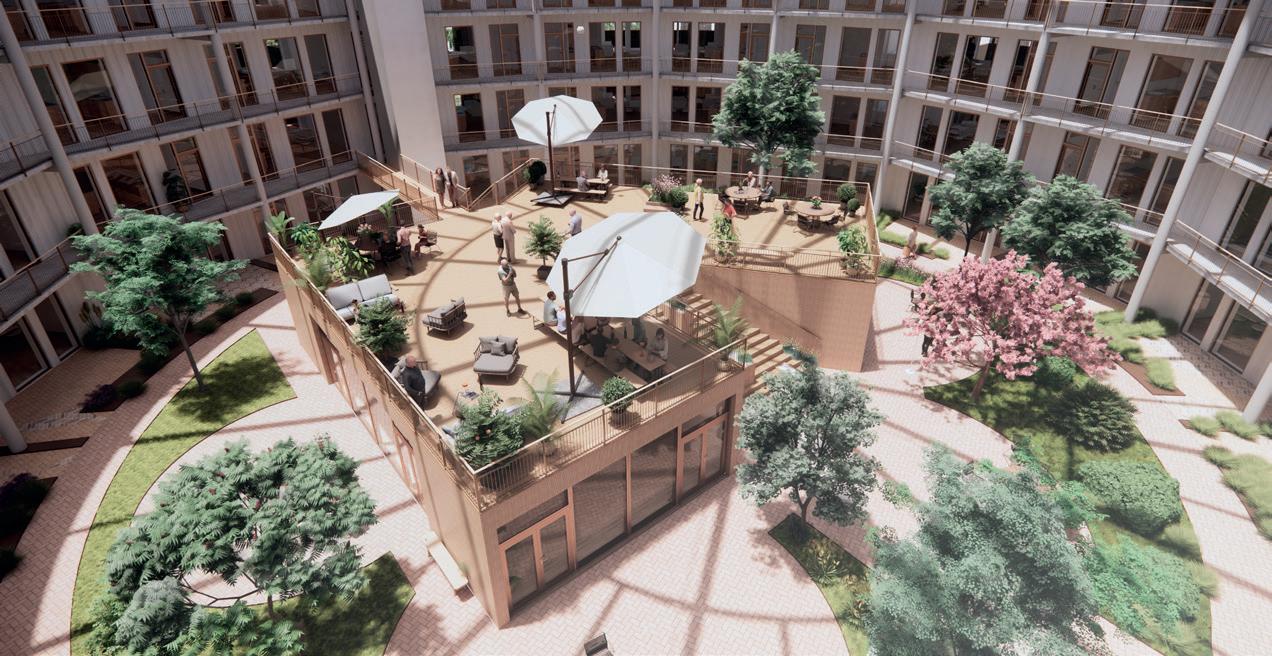
ing opportunities to take part in the community when they choose to.”
In the current model, there are 72 private units lining the atrium, making the most of the light from both the atrium and the external facade. All apartments include a spacious living room with an integrated kitchen, a bedroom, a bathroom, and a balcony. Larger units have an additional room, and some also offer the possibility of making special adaptations for residents with care needs, including wheelchair access and assistive bathroom layouts.
Due to the circular design of the building, all flats will enjoy the same distance to the shared facilities in the atrium.
CASA Arkitekter
CASA Arkitekter was founded in 1990. The architectural firm has offices in Næstved and Odense.
With a team of seven architects and building engineers, the company offers a full-service consultancy across all phases of construction.
The company works across all segments, from retirement homes and kindergartens to business centres and educational institutions.
Ready for the next chapter Featuring energy-efficient ventilation, decentralised heating, solar power integration, and Environmental Product Declarations (EPDs), Uniq-Bo has been designed not just for the comfort of its residents but with thought for future generations as well.
Essential to the design’s strong sustainability credentials is CASA Arkitekter’s partnership with CG Jensen A/S, a leading Danish contractor with more than 80 years of experience. CG Jensen has overseen the project’s buildability, Life Cycle Assessments, and DGNB screening, making sure that the Uniq-Bo concept is one step ahead of current regulatory requirements and ready for Denmark’s future standards. Moreover, the partnership ensures that Uniq-Bo stands ready as not just an idea but a fully-fledged, ready-tobe-constructed offer to investors.
Poul Qvist Hansen continues; “When we started the project, we quickly agreed that we needed a collaboration partner, and CG Jensen offered the strongest package. One that enabled us to present not just the architect’s vision, but a fully executable project, including the financials, and at the right price.”
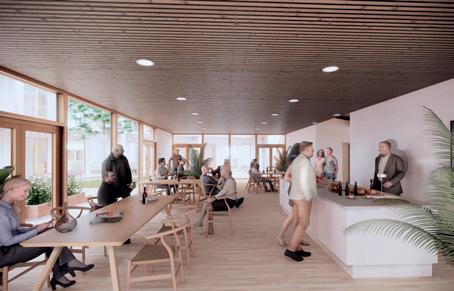
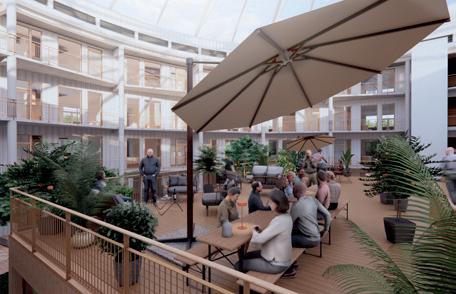
The only remaining step is realisation. CASA Arkitekter and CG Jensen are actively seeking an investor or developer to take the project from concept to construction.
www.casa.dk www.cgjensen.dk
I have had the same breakfast for 20 years. Oatmeal. Of course, I have tried other things from time to time, but I have always come back to the good old bowl of oatmeal. Nothing else keeps me full for hours or gives me energy until lunch. And since you can change the toppings endlessly, it’s almost like having different breakfasts anyway. My husband is the same. Our kids, on the other hand, are not into oatmeal, at all. Let’s just say that breakfasts have been an issue in our house. But since I started to make oven-baked oatmeal, it’s not an issue anymore. I bake a new batch every day, and everyone loves it. Our favourite flavours are strawberry/cardamom and cocoa. I look forward to trying other seasonal fruits and berries over the coming months. Hopefully you’ll like them too.
By Sofia Nordgren
Makes about 15 squares
Ingredients:
6 dl oats
1/2 dl coconut sugar
1 tsp ground cardamom
200 g strawberries, diced
300 ml oat milk
1 egg (optional)
Instructions:
1. Preheat the oven to 200°C.
2. Combine oats, coconut sugar and cardamom.
3. Add the strawberries.
4. Add oat milk and the egg, stir together.
5. Pour the batter into an ovenproof pan (about 15x30 cm).
6. Bake in the middle of the oven for about 25 minutes.
7. Let cool and cut into squares.
8. Store in the fridge.
Tip! It’s super delicious to serve them with warm raspberries like pictured here.

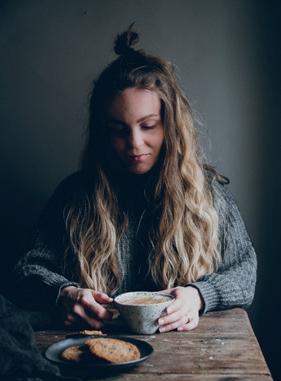
Winner of the best Regional Cookbook at the Guild of Food Writers Awards 2022, Sofia Nordgren lives with her family in a small town in Sweden, working as a photographer, content creator and plant-based cookbook author. Cooking and baking have always been a hobby of hers and on top of that, she has a passion for nature, gardening and slow, seasonal living. Foggy mornings, cinnamon buns, and playing with her kids are among her favourite things in life. Sofia Nordgren also runs the successful blog, The Nordic Kitchen.
One of the big surprises during a recent visit in Denver, Colorado was hop water. I had never heard of it. What even is hop water?
By Malin Norman
In April, I was lucky to be on the panel of judges at World Beer Cup in Louisville, Colorado. A few days before the judging started, I checked out some taprooms in RiNo (River North Art District) in Denver. To my surprise, I saw hop water mentioned on the big board at Ratio Beerworks. I had to try it, of course.
So, what is hop water? Basically, it’s sparkling water infused with hop flavour. Alcohol-free and calorie-free, hop water is described as refreshing, crisp and clean. A way for breweries to diversify their range, hop water is seen as an alternative to no and low alcohol beers, and the go-to for anyone who wants a splash of hops in their carbonated water.
Brewers use a dry-hopping technique in the water tank, which gives a fresh hops character. Similar to hops in American Pale Ales or IPAs, but without
excess bitterness or astringency. Or booze. “Hydrate with hops,” I read somewhere, and it sure is a premium approach to ordinary sparkling water with a corresponding price tag, as adding hops such as Citra, Amarillo, Mosaic and Simcoe is not for free.
The hop water at Ratio Beerworks was, as promised, refreshing, crisp and clean – a healthy alternative en route to the next taproom in RiNo. “Not for me. I like malt and yeast too in my water,” said a fellow beer colleague later when I shared my new discovery.
The future will tell whether the American trend will catch elsewhere. Some European breweries already have hop water in the line-up, such as Siren Craft Brew in the UK and Jämtlands Bryggeri in Sweden, in case you’re curious – and want to stay hydrated with hops.

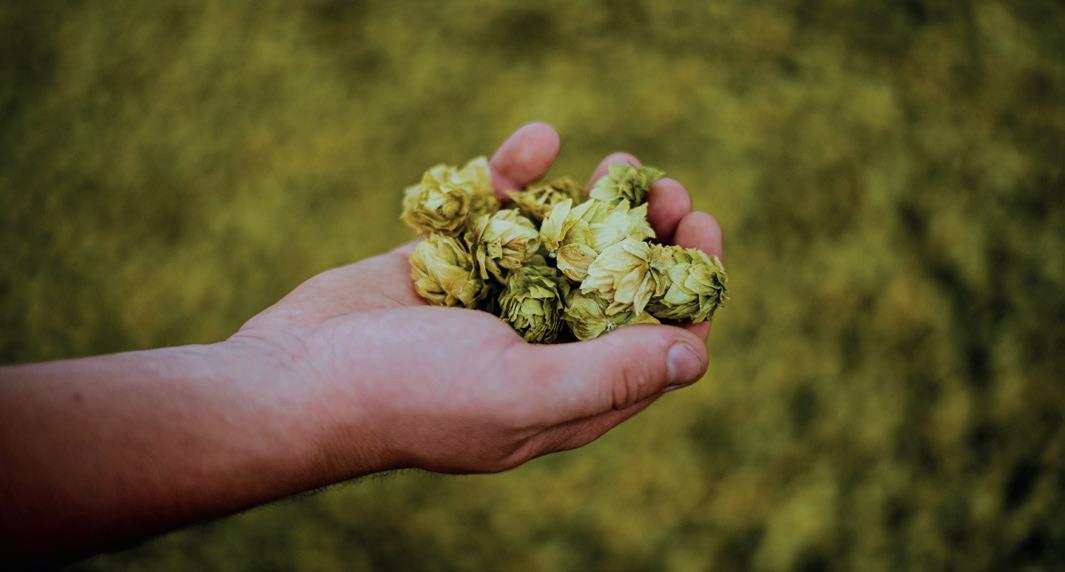
With its long light days and buzzing atmosphere, there is no better time to explore Stockholm’s beer scene than summer. In this guide, we highlight some of the best places to check out when visiting the Swedish capital.
By Malin Norman


To kick off the exploration of Stockholm’s beer scene, we start with the cool craft beer bars. In the area Södermalm, where the trendy crowd hangs out, there are quite a few. One of the first you will stumble upon is probably Stigbergets Fot, as it is located at the beginning of the hip street Götgatan, close to the underground station Slussen.
Opened in 2020, Stigbergets Fot is run by Stigbergets Bryggeri, with the brewery itself based in Gothenburg, together with Barrels Burger & Beer. You will find mostly Stigbergets’ own beers on tap, but also tasty options from other Swedish and international breweries. With DJs amping up the vibe on Fridays and Saturdays, this bar sure is a hot spot. Apparently, this is also where you can find one of the city’s best burgers.
Just around the corner, on Hökens gata, is Omnipollos Hatt. The praised brewery Omnipollo has three locations in Stockholm; the brewery and taproom Omnipollos Kyrka in a former church in Sundbyberg, the mentioned pizzeria and bar Omnipollos Hatt in Södermalm, as well as the beer garden Omnipollos Flora in the city park Humlegården. Known mostly for its delicious and elaborate pastry stouts, Omnipollo also makes an excellent pilsner, the perfect thirst-quencher for warm summer days.


After a brisk walk down Götgatan, you will find Katarina Ölkafé on Katarina Bangata. This tiny place serves local beers and mouth-watering bar food, with an undeniably cosy atmosphere. With its living room ambiance, it is no surprise that this bar attracts hipsters from near and afar.
On Bergsunds strand, in the buzzing area Hornstull, you will find PangPang Festaurang. Since 2021, this bar and restaurant is run by the brewery PangPang, which is recognised for its unconventional beers and playful branding, The brewery and taproom resides in Hökarängen, in southern Stockholm, in case you want to check that out too.
Another trendy place for craft beer lovers is Omaka, a brewery and restaurant on Uggleviksgatan in the central area Östermalm. Here, brewmaster Hedda Spendrup creates magic in the brewery whilst the kitchen team invents tasty food to match the beer.
Classic hangouts with impressive range
The cool kids are irresistible, but perhaps you want to mix it up with something more classic. Often referred to as one of the best beer bars in the world, Akkurat is a must. Located on Hornsgatan, a short walk from Stigbergets Fot, Akkurat has around 28 beers on tap and an impressive number in the cellar. This year, Akkurat celebrates its 30th anniversary with lots of fun activities in the pipeline, such as a joint tasting with Oppigårds Bryggeri and Närke Kulturbryggeri on 11 June, and an exclusive tasting with Geuezerie Tilquin on 12 June.
When here, you are not far from another classic beer bar, Zum Franziskaner in Gamla Stan, the picturesque Old Town. This beer hall is one of Stockholm’s oldest restaurants, first opened in 1889 and housed in its current location since 1910. With a great selection of beer, some of which has been brewed especially for Zum Franziskaner, you can also devour Swedish and German home cooking
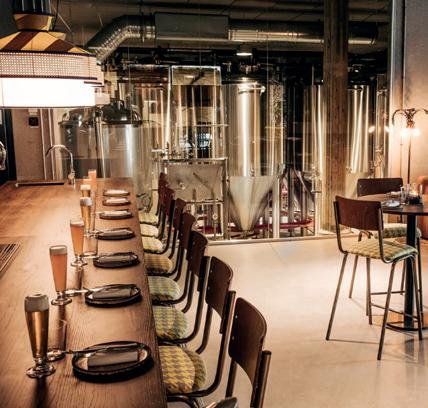
such as port knuckle, Wiener Schnitzel, stuffed cabbage rolls, and more.
Whilst we are on the German theme, also check out Bierhaus on Tegnérgatan in Vasastan. With a history dating back to the 1940s, this beer hall serves fabulous German beer and tasty food such as Wiener Schnitzel and homemade sausages.
Naturally, this is also the place to be if you happen to find yourself in Stockholm during Oktoberfest, the iconic German beer festival.
Popular gastro pub Man in the Moon is also a must, not far from Bierhaus. Opened in 1994, Man in the Moon claims to have one of Stockholm’s best assortments, with 30 beers on tap and some 650 beers in total. The bar is also famous for its range of whiskey, with around 120 single malt varieties, and classic Swedish home cooking.
Enjoy a spectacular view with your beer Stockholm is a city built on 14 islands, which are connected by 57 bridges, and it would be a shame not to see some of the spectacular views. Nya Carnegiebryggeriet has a fantastic location in Hammarby Sjöstad, and is accessible by bus, tram or boat. The brewery and restaurant opened in 2014, as a collaboration between Carlsberg and Brooklyn Brewery. The old lightbulb factory has an unbeatable terrace, where you can fully enjoy the waterfront view with your beer.

Also a boat ride away is Fjäderholmarnas Bryggeri, situated on an island in the Stockholm archipelago. The brewpub opened on Stora Fjäderholmen in 2014, whilst the production is based in Bro, just outside Stockholm. Promising a complete craft beer experience, the brewpub offers a range of beers and food, as well as workshops and tastings. Try Sunscreen Session IPA, a ‘lagom’ beer with hints of grapefruit, passion fruit, pineapple, sponge cake and lemon. The island brewpub is open during summer only, from May to middle of September, so now is your chance.
For one of Stockholm’s best views, head back to the area where we started. Mosebacketerassen is the outdoor space of Södra Teatern, located on Mosebacke Torg, and a top hangout spot for locals during summer. Meet up with your friends at this spacious beer garden, quench your thirst with a few beers, soak up the vibe at the communal tables, perhaps play a game of boules, and be amazed by the beautiful city.
For tips on what to see and do in Stockholm, see visitstockholm.se and visitsweden.com.
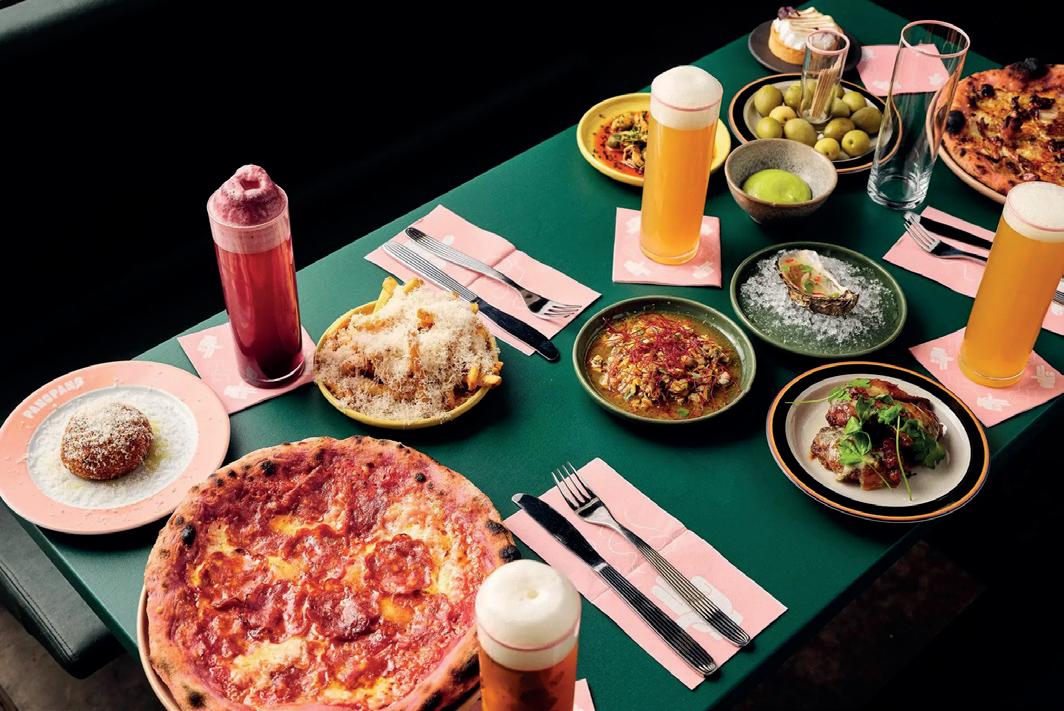
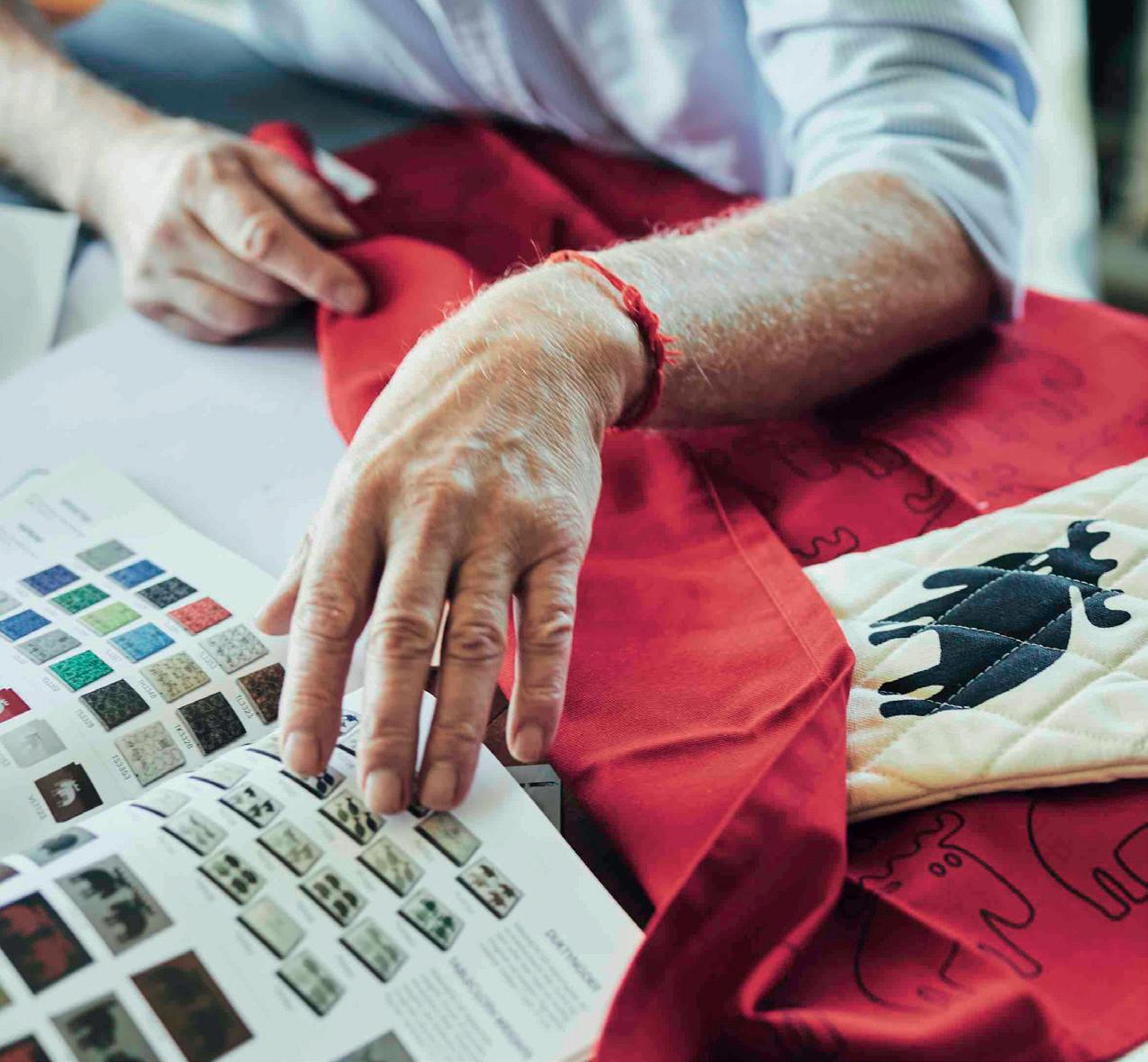
Rooted in the Swedish way of life, Moz Sweden is the lifestyle brand that gave birth to the beloved elk, or moose, design. Massively popular across the world, in particular in Asia, this charming figure can be seen in design shops and souvenir boutiques, and has a massive following online.
By Malin Norman | Photos: Moz Sweden
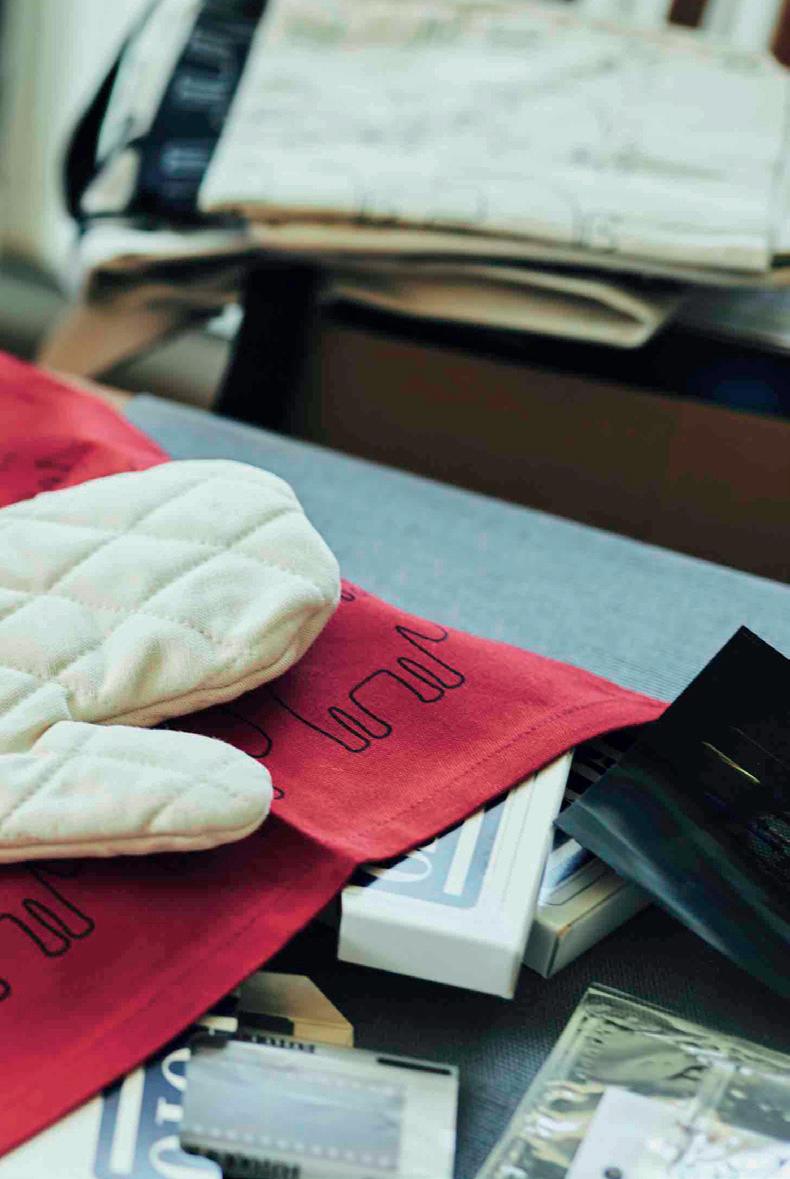
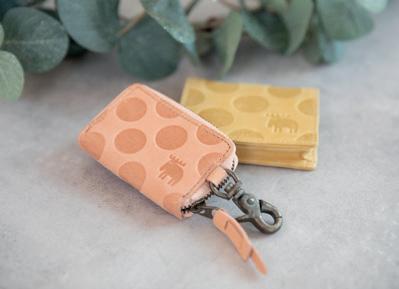
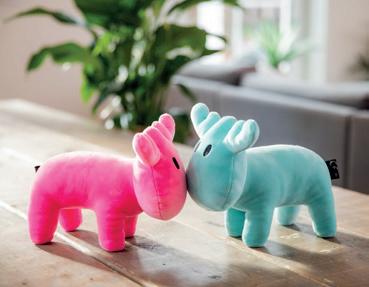
The story of Moz Sweden is nothing but spectacular. Born from the idea of a playful elk design, the Swedish brand is now as well-known as Moomin and Hello Kitty in some parts of the world. But let us start from the beginning.
In 1996, entrepreneur Anders Bylin founded Färg & Form, a design company offering interior décor details and gift items. Two years later, he came up with the elk design, initially just intended as a logotype, which gave birth to Moz Sweden.
Products such as coffee mugs, kitchen towels, napkins and fridge magnets were added to the range, and immediate success followed. Nowadays, annual retail sales of the Swedish brand’s products reaches around 1 billion SEK world-wide.

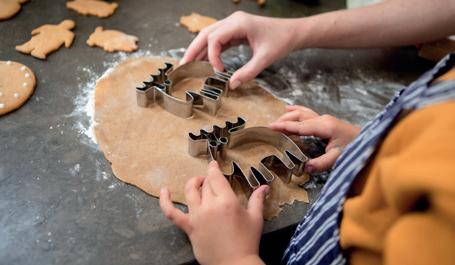
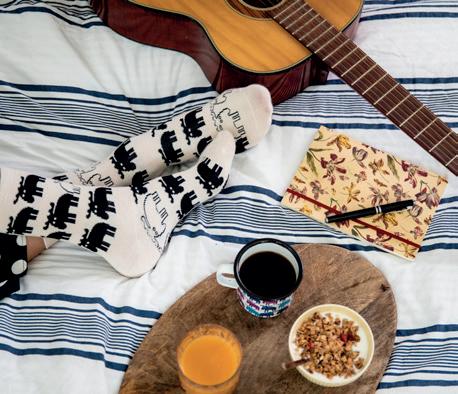
A creative spirit, Bylin has always nurtured a love for nature, as also reflected in his designs with animal themes. “The Swedish way of life tends to be close to nature, with our right to public access to nature being an important part of culture,” he says. “Ever since I was a child, I have spent a lot of time in nature and created things by hand. Moz was inspired by the memory of meeting an elk one day – the king of the forest.”
The simple, clean Scandinavian design reflects the idea of being close to nature, and close to each other. “Swedes love spending time in nature, and many of us enjoy holidays in the countryside, in close proximity to the wind, the birds and the water,” says Bylin. “But we also love feeling the buzz of the city, meeting friends at restaurants and cafés, enjoying the pulse of something bigger. It’s the perfect balance between the quiet outdoors and the vibrant city life.”
The Japanese market showed a keen interest in the brand early on, in particular following the Ambiente consumer goods trade fair in Frankfurt, Germany – the world’s largest fair for interior design with over 100,000 visitors from around the world. Moz Sweden is as well-known
in Japan these days as Moomin and Marimekko, if not more.
“The playful elk figure has a positive connotation and, overall, Japan has a positive view of Scandinavia,” means Bylin. “In many ways, I think Sweden and Japan go hand in hand. When I visited Japan, I realised that things went so smoothly and people were calm, similarly to Sweden.”
Even though the elk is not a character as such, like for instance Hello Kitty –true to the Japanese kawaii style, which emphasises cuteness – or Tove Jansson’s
Moomin, there is something adorable about the innocent playfulness of the figure that catches people’s attention. The designer reflects; “Sweden has a lot of elkinspired souvenir products, but our elk is




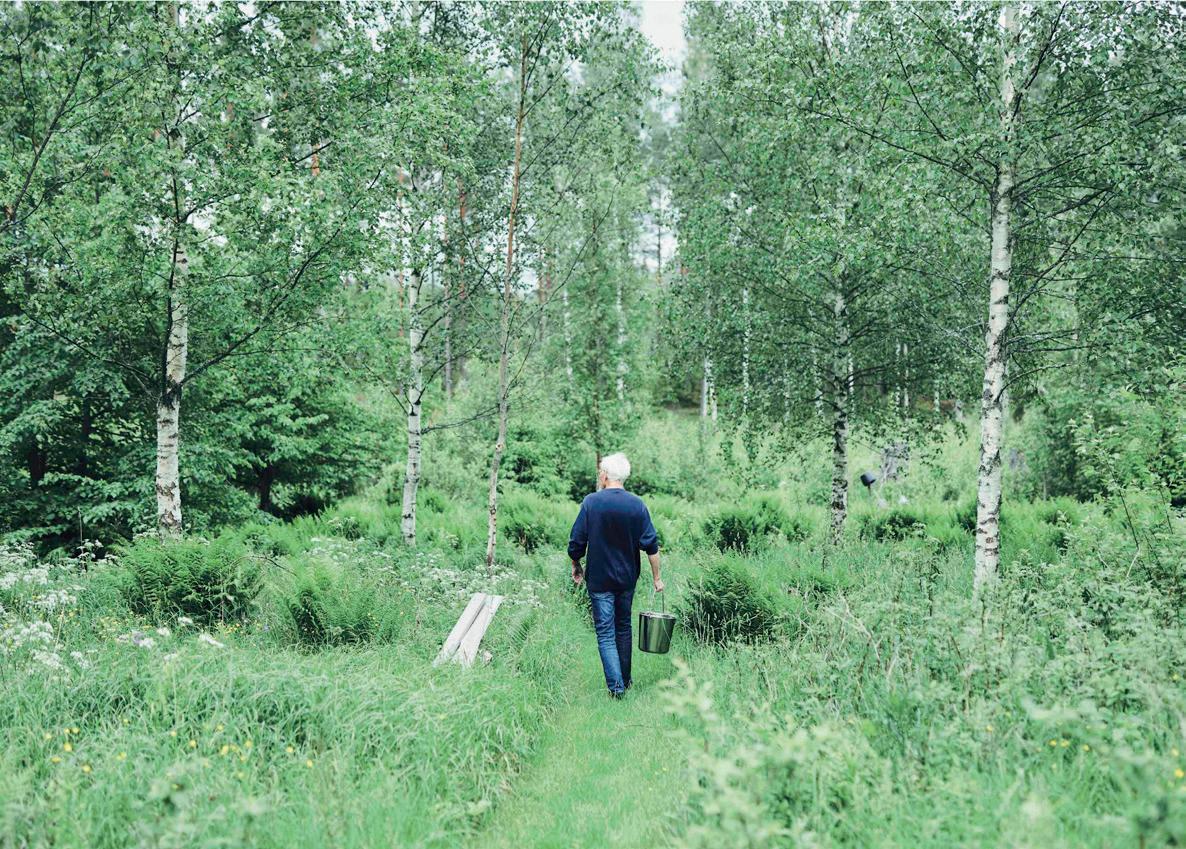
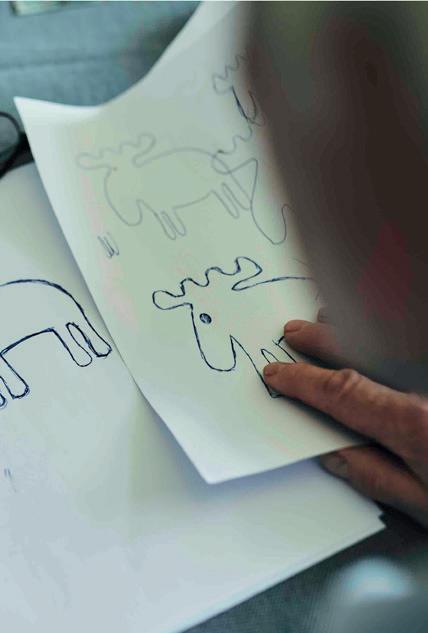
a bit different. It has a cleaner expression that stands out in the market, more designfocused.”
In Asia, the popularity has spread also to Taiwan, South Korea and Hong Kong, and Moz Sweden is in the process of establishing itself in China. “Our business in Asia exceeds the rest of the world by far, and the brand is constantly growing


overall,” says Bylin. “What an amazing journey it has been so far, and I’m excited that Moz Sweden continues to grow with more products, more markets, and more licensees around the world.”
Moz Sweden continues to offers products for a joyful life, from interior décor to clothing and outdoor essentials, with a green vision at heart. “We are on a constant journey to make our products sustainable and green, and to make it easy for you to make sustainable choices,” concludes Bylin.
www.mozsweden.com
Instagram: @mozsweden
Facebook: moz sweden

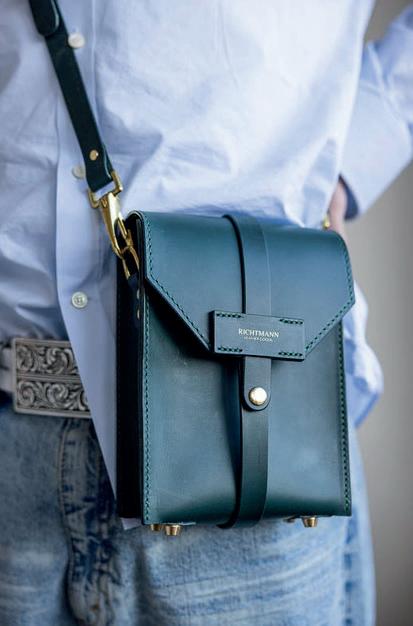
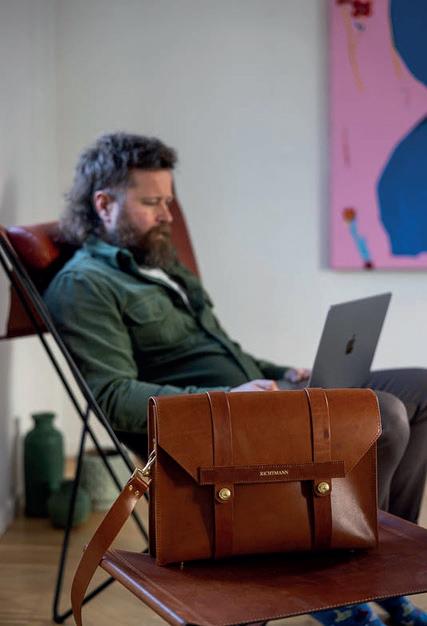
New Swedish brand Richtmann designs premium leather bags, each handmade with careful consideration for craftsmanship, style and functionality. Nominated as one of the Formex Design Talents earlier this year, Richtmann’s bags will soon also be available at Artipelag in Stockholm.
By Malin Norman | Photos: Patrick Degerman
In just over a year, Markus Richtmann has achieved fantastic success with his new brand of premium leather bags. With a background as a restaurateur, currently one of three co-owners of Stadskällaren Brewpub in Skellefteå, Richtmann also has a passion for true craftsmanship.
“Arts and crafts have always interested me, but the idea of making bags was pure coincidence,” reflects the designer. “I was working on some hunting gear for myself when my wife asked if I could make her a bag – this was the first Everyday Carrie bag.”
Selected for Formex Design Talents
In his first year of business, Markus was selected as one of the nominees for

Formex Design Talents. The largest trade event for design and interior design in the Nordics, the fair presents products, the latest trends, exciting speakers and influential exhibitions. A jury also selects promising designers and artists who get the chance to show their creations and build a network.
“Design Talents is an exciting part of Formex, enabling exhibitors, visitors and media to spot new talent,” says Richtmann. “I could never have imagined this in my wildest dreams. It was such an honour to be one of the design talents and have the opportunity to show my bags to people in the industry so early on,” he beams.
Reflecting the soul of the North Richtmann’s bags do not follow trends. Instead, they are classic and timeless – a winning combination of style and function. The bags can be described as rare pieces of craftsmanship, reflecting the soul of the North. “In my designs, I take
inspiration from shapes in nature, for instance when out fishing,” muses the designer. “And I find the simplicity in Asian craftsmanship to be amazing. This is how I feel when creating; I don’t want to mess up a clean look.”
Everyday Carrie is the first bag and the bestseller so far. A staple that echoes ocean waves and sculptured stones scatted across untamed meadows, this model is available in a range of different colours and types of leather, including embossed crocodile.
Mailman is the unisex messenger bag, small but with a big heart. ”This bag is inspired by my childhood memories when I was often waiting for the local mailman – a mysterious figure with a bag full of secrets,” says Richtmann. “It’s both nostalgic and practical.” Mailman is available in a large version as well, suitable for laptops. Other products in the line-up include card holders and accessories such as dog collars.
Artipelag and studio in Skellefteå
All bags are meticulously handmade with around 2,000 stitches for a premium look and feel. Richtmann creates the bags in his studio in Skellefteå, using vegetable-tanned Swedish leather, resulting in a beautiful patina over time, and details in solid brass that give an elegant expression. Sustainability is key, as the

bags should last for years and, if possible, generations.
The journey for Richtmann has just started, but the achievements so far are impressive. A large amount of bags has been ordered by Artipelag. Comprising an art gallery, a shop for design products, and a large space for events, this is an international destination for art, located in the Stockholm Archipelago. “I’m so excited to be working with Artipelag,” the talented designer adds. “My bags will be available in its shop, which is a fantastic opportunity. To be able to make some-
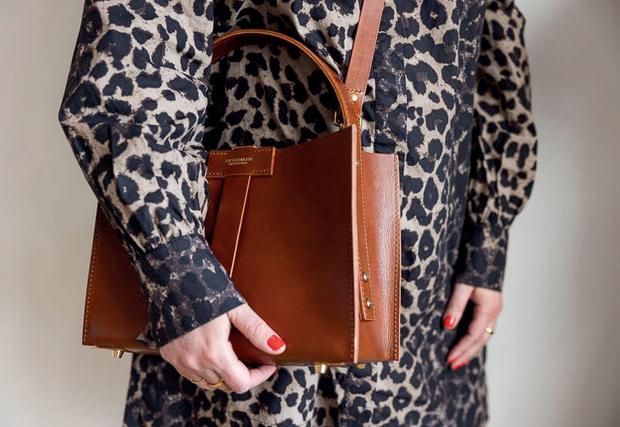
thing that people are interested in, what a privilege!”
Richtmann’s bags are available in the brand’s web shop in limited numbers, with an expected waiting time of up to six months.
www.richtmann.se
Instagram: @richtmann_leather_goods
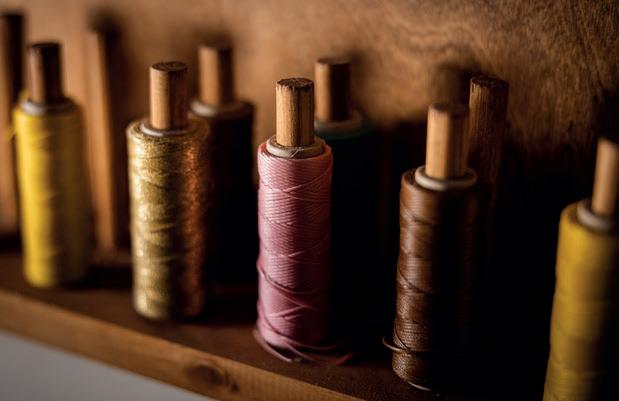
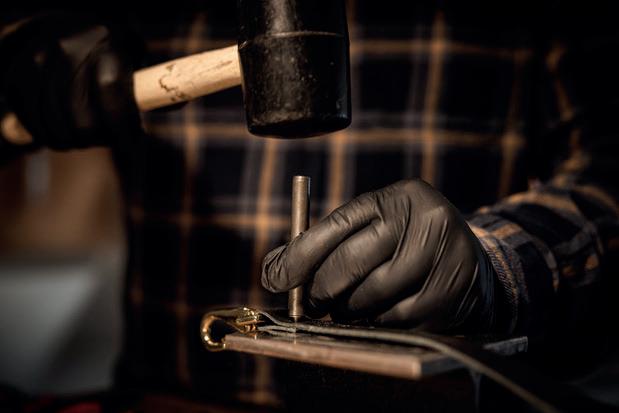
One of Sweden’s foremost brands for premium watches, MAEN Watches offers the highest quality with exquisite details and irresistible retro-inspired designs.
By Malin Norman | Photos: MAEN Watches
MAEN Watches was founded by Sebastiaan Cortjaens and Jules van Helvoort in 2017. The two Dutchmen crossed paths in Stockholm and realised a shared passion for watches and collecting watches. Their brand MAEN has grown steadily over the years and is now one of Sweden’s leaders in premium watches with customers in over 90 countries, including Germany, France, the Netherlands, Hong Kong, the UK and the US.
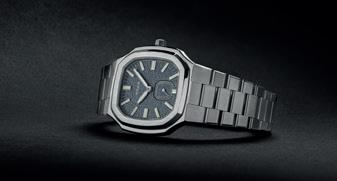
The brand’s name is the old Dutch spelling of the word moon, which is the ultimate symbol of time, and at the same time a hint to the vintage inspiration. With MAEN, the duo creates highquality timepieces with classic designs and a contemporary touch. “The vision was simple; to offer the best quality for reasonable prices,” says Cortjaens. “Our watches are designed to last for many years. We will never release something that we’re not happy with.”
The Manhattan series with its 1970s inspired retro design is among the bestsellers, available in sizes 37, 39 Ultra Thin, and 40. In a few months, a new model in the series will be released. “On popular demand, we’ve been asked to also create the 37 Ultra Thin. It will come with

www.cosytimesceramics.dk
Instagram: @cosytimesceramics.kerteminde
a slightly different face, dial configuration, and texture.”
MAEN is praised by loyal customers around the world as well as international media. For instance watch specialist WatchFinder writes in a review; “How do you make a watch that blends in with classical grace yet catches the eye? Watch company Maen just might have the answer.”
The entire MAEN range of premium watches is on display at the showroom in Stockholm, and available in the online shop.
www.maenwatches.com
Facebook: MAEN Watches
Instagram: @maenwatches
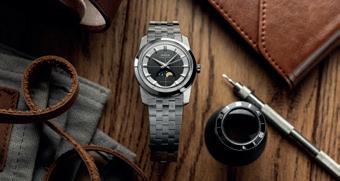


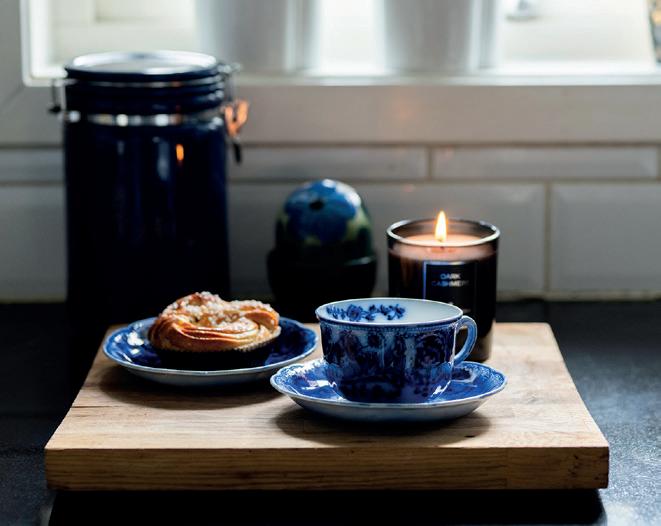

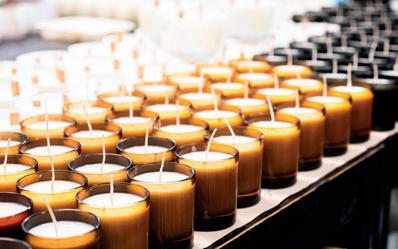
Handcrafted, plant-based fragrance products from The Friendly Home Stockholm celebrate nature and support the local community. For everyday luxury, immerse your home in a premium collection of scents reminiscent of freshly washed linens, freshly cut fir, citrus notes, and lovely peonies.
By Malin Norman | Photos: The Friendly Home Stockholm
Family business The Friendly Home Stockholm is based in Värmdö, in Stockholm’s archipelago. “After long careers in international corporations, we both wanted to build our own brand,” says Catharina Kallmert, who runs the company with her husband Mats. ”We all need to escape from the craziness in life sometimes. Fragrances can help to relieve stress and take you to a place of rest and peace. Our fragrance products capture the essence of the archipelago’s beauty.”
Since its foundation in 2014, the company has seen a steady growth. “Early on, we became the first fragrance partner to a Scandinavian retail chain and distributed our collection in all its stores in Sweden and Finland.” Over the years, the team has also created fragrance products for exclusive Swedish brands available internationally.
Sensory experience beyond the ordinary Each product is handmade in Värmdö, with love and respect for nature, ensuring that customers get something that not only smells wonderful but is also kind to the environment. “Our line-up offers a sensory experience beyond the ordinary,” promises Catharina.
With a collection of 20 fragrances for scented candles, fragrance sticks and room sprays, the long-time bestseller is called Fresh – with notes of mandarin, lime and pink grapefruit. Other popular scents that are ideal for summer include for instance Blossom, Meadow Lily, and Bamboo.
Connection to nature is key in this family business, as is sustainability. The Friendly Home Stockholm uses only plantbased waxes such as soy wax, rapeseed wax and coconut wax – to ensure that
products are good for the environment and for consumers. Catharina adds; “We strive for zero waste, and take responsibility for the waste of production materials, packaging and wrapping, whilst meeting the highest quality.”
www.thefriendlyhome.se
Instagram: @thefriendlyhome

Take advantage of exclusive savings of 15% in the webshop with our special discount code scanmagazine.
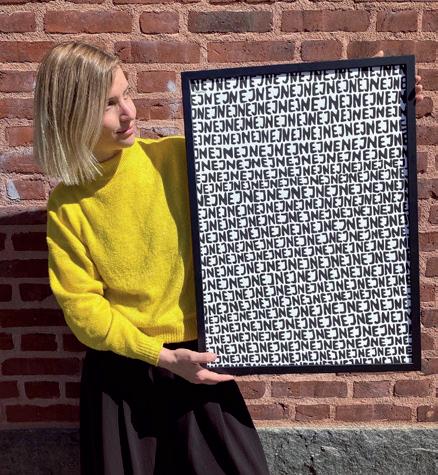
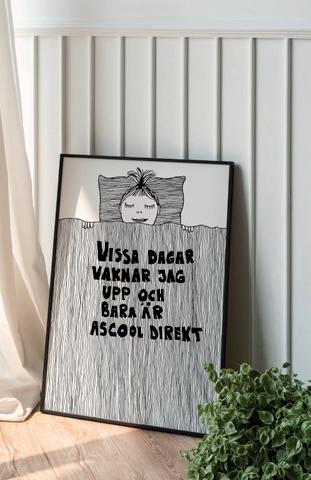
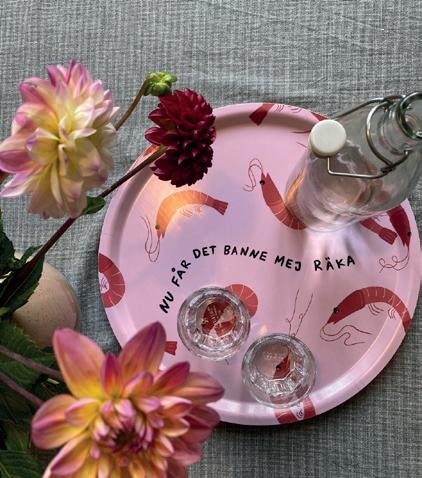
It might look quirky at first glance, but take a closer look and you will see something more. Perhaps a print that makes you recall a certain moment, or a word that reminds you to breathe. Skaperian’s designs are inspired by everyday thoughts and feelings, like simply saying no when life gets too much – all wrapped up in original artwork that brings a gentle spark to your life and a smile to your face.
By Emma Roedin | Photos: Skaperian
Skaperian, which translates to a place for creativity, is the lovechild of graphic designer Linda Ljunggren Norberg. Her business took off after she began sharing her drawings on Instagram, where followers started asking if they could buy them. Said and done, Skaperian is now the home to various clothing and interior products, which are brought to life in a sustainable way. Something which not only entails choosing sustainable materials and partnering with Swedish suppliers, but also a small-scale approach. In fact, Ljunggren Norberg is also the co-founder of Småskaligt (aptly translating to small-scale) together with Marlene Boke and Miro Elgeholm, which is a Gothenburg-based retailer and community built for like-minded creators.
“People will always shop and consume, so to get away from mass production, the
alternative needs to be out there front and centre. Our way of pitching in is to run shops and be visible on digital channels as much as possible,” explains Ljunggren Norberg.
And when it comes to the creative process behind Skaperian, a similar, organic approach can be seen. Usually, Ljunggren Norberg will jot down observa-

tions from her everyday life, and later, when her creative juices are flowing, she will draw a fitting illustration to match. Usually, these observations come from personal feelings, like being stressed or overwhelmed. And perhaps that is why the illustrations resonate so well, especially when they are paired with a more humorous design.
“I want people to feel like they’re not alone with their thoughts and that all thoughts are okay. I’ve actually had people tell me that my designs have helped them manage stress-related issues, which is so rewarding. You should never underestimate the joy that a simple illustration can bring,” says Ljunggren Norberg.
Skaperian’s products are also popular gifts. Whether a children’s t-shirt reading “some days I instantly wake up cool,” a breakfast tray with a wordplay on the Swedish word for prawn, or a cap that simply says “no” – with Skaperian, owning your well-being is not only necessary, but fun.
www.skaperian.com
Instagram: @skaperian
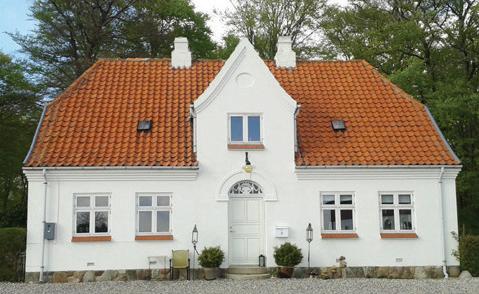
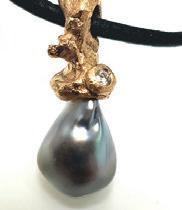

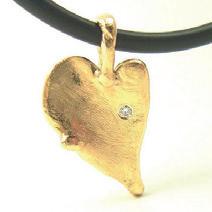
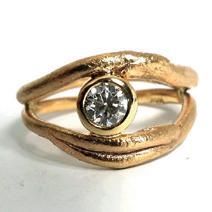
Guld omsmeltes

- Lisbeth Warming er guldsmed med særlig flair for at skabe smykker, der udstråler stor personlighed.
Lisbeth Warming is a goldsmith with a flair for creating jewellery that exudes personality. Through her handiwork, a fascinating universe of golden organic shapes and glistening organisms opens up. She uses precious stones and plays with diamonds and pearls in all shapes and sizes.
smykker, der udstråler stor personlighed.
- Lisbeth Warming er guldsmed med særlig flair for at skabe smykker, der udstråler stor personlighed.
I hendes hænder udfolder der sig et fascinerende univers af gyldne, organiske former og strålende organismer.
I hendes hænder udfolder der sig et fascinerende univers af gyldne, organiske former og strålende organismer.
Materialerne er ædle og hun leger med brillanter og barokke perler i alle farve og størrelser. Men i Lisbeth Warmings design bliver resultatet hverken prangende eller prætentiøst.
Lisbeth Warming’s designs are, however, never flamboyant or pretentious. The jewellery instead appears as natural and charming pieces of art, which will continue to surprise and fascinate throughout the use of them. All pieces created are one of a kind.
I hendes hænder udfolder der sig et fascinerende univers af gyldne, organiske former og strålende organismer. Materialerne er ædle og hun leger med brillanter og barokke perler i alle farve og størrelser. Men i Lisbeth Warmings design bliver resultatet hverken prangende eller prætentiøst. Smykkerne fremtræder som små naturlige og charmerende kunstværker, så eventyrlig iscenesat, at man kan blive ved med at gå på opdagelse i dem. Alle smykker er unikastykker.
Materialerne er ædle og hun leger med brillanter og barokke perler i alle farve og størrelser. Men i Lisbeth Warmings design bliver resultatet hverken prangende eller prætentiøst. Smykkerne fremtræder som små naturlige og charmerende kunstværker, så eventyrlig iscenesat, at man kan blive ved med at gå på opdagelse i dem. Alle smykker er unikastykker.
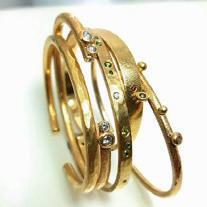
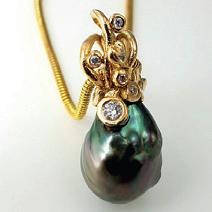
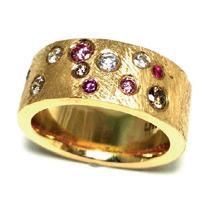
Lisbeth Warming also melts down old gold jewellery to create new, modern pieces, which retain their history.

Guld omsmeltes Mindphoto.dk
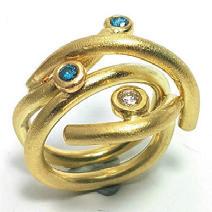

OPENING HOURS:
fre. 12-18
Smykkerne fremtræder som små naturlige og charmerende kunstværker, så eventyrlig iscenesat, at man kan blive ved med at gå på opdagelse i dem. Alle smykker er unikastykker. Ons.-tors.- fre. 12-18 Lørdag 10-13
10-13
WED - THU - FRI: 12-18 SAT: 10-13
fre. 12-18
10-13


For centuries, guests have retreated to Loka Brunn, now one of Sweden’s foremost contemporary spas – a place for leisure, adventure and recreation. Pay a visit this summer and try Loka On Lake; your own, private raft with panorama views of the lake.
By Malin Norman | Photos: Loka Brunn
Loka Brunn has been a popular spa destination for hundreds of years. People have ventured to Bergslagen’s fairytale-like surroundings, where Loka Brunn is located, to enjoy the spa and experience the mighty lakes and magic forests.
“Loka Brunn is still a place for meetings, relaxation and recreation,” says Mia Spendrup, manager of Loka Brunn Hotel and Spa. “Visitors unwind at the spa, take part in activities, and savour wonderful food made from local produce – our culinary offering is an important part of the experience.”
The hotel and spa is constantly evolving, with newly renovated rooms and more

activities such as stand up paddle, mountain biking, and wilderness cooking with one of the chefs. Loka Brunn is also home to Sweden’s only spa museum, illustrating the Swedish and the broader global history of spas. And with its own church on the estate, this is a beautiful venue for weddings.
Midsummer celebrations and Loka On Lake
For those who want to enjoy peace and quiet, Loka On Lake offers the ultimate experience. “You get to stay on a luxurious raft located at Södra Loken, one of our most idyllic locations, with panorama views of the lake,” says Spendrup. “You will have the raft to yourself during the
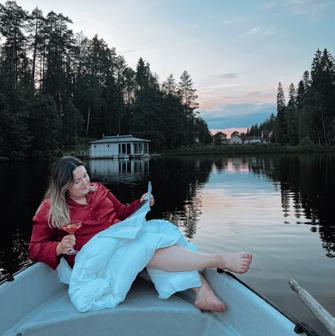
stay as well as a private part of the lake with a rowing boat.” Introduced last summer, not surprisingly this exclusive raft has been a massive success.
Another highlight at Loka Brunn is the traditional Midsummer celebrations on 20 June. “The atmosphere is magical, with music, dance, and entertainment in our church,” smiles Spendrup. “And as usual, we will serve up a delicious buffet with all things Midsummer in our restaurant.”
Loka Brunn is also a popular destination for Christmas and New Years, offering the chance to enjoy the holidays without the stress of doing all the work yourself. “We will take care of you, so that you can just relax and spend time with loved ones or on your own,” Spendrup concludes.
www.lokabrunn.se
Facebook: Loka Brunn
Instagram: @lokabrunn.se
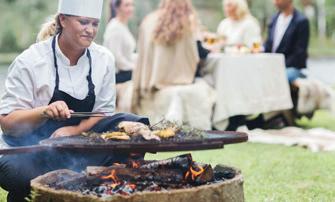
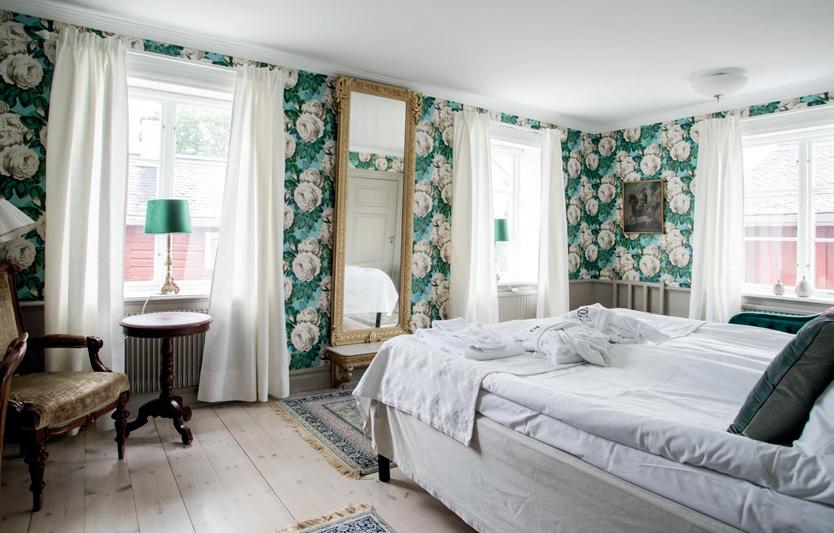
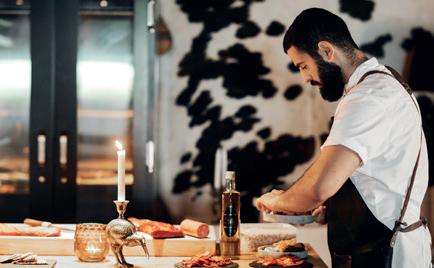

Just a kilometre from Loka Brunn, its sister hideaway Grythyttans Gästgivaregård entices guests with one of the most sensational wine cellars in the Nordics. Here, exciting summer activities and an outstanding culinary journey await.
By Malin Norman | Photos: Grythyttans Gästgivaregård
Charming wine and boutique hotel Grythyttans Gästgivaregård is quite something. Located in the Bergslagen region, it is surrounded by nature reserves, golf courses, adventurous mountain bike trails, and delightful farm shops – all within easy reach.
This is a destination for those who love history while also seeking an experience with modern gastronomy. The inn has a rich heritage and exciting stories from olden times, but guests will also encounter the present and the future – in the food that the talented chefs create, and in the excellent bar.
“Wake up in one of our charismatic rooms, enjoy breakfast with local delicacies, and spend the day exploring the surroundings,” says Mia Spendrup, manager of Grythyttans Gästgivaregård. “Stroll through the picturesque village, go for a hike in the forest or just sit back in our courtyard with a lovely glass of wine. In
the evening, devour dinner where classic Swedish flavours meet modern finesse.”
The team takes great pride in preserving the centuries-old traditions of relaxation and calm. All 54 guest rooms are individually decorated, telling their own story. And the old stable dating back to the 1600s is a popular venue for weddings and other celebrations, and houses pub quiz nights and live music in summer.
Exclusive wine cellar and summer activities
Grythyttan’s wine cellar houses one of Sweden's oldest collections of wines, with a variety that impresses most. Adjacent to the former prison vault, where unfortunate criminals awaited trial 350 years ago, several thousand bottles from around the world are stored. “During a visit, you can go on a journey in the history of wine in our extraordinary cellar, starting several thousand years ago,” adds Spendrup.
On 14 June, Grythyttans hosts a not-tobe-missed Tuscany tasting, with delicious wines from Chianti, Montepulciano and Montalcino. Other events are in the pipeline, such as a Margaux tasting on 18 October. This summer, the inn also takes part in Art in Grythyttan, 14-15 June, where Swedish artists will display their works in the village.
For the ultimate summer getaway, enjoy culinary delights, art and a night at charming Grythyttans Gästgivaregård, followed by a relaxing spa experience and a night at Loka Brunn.
www.grythyttansgastgivaregard.se Facebook: Grythyttans Gästgivaregård Instagram: @grythyttansgastgivaregard
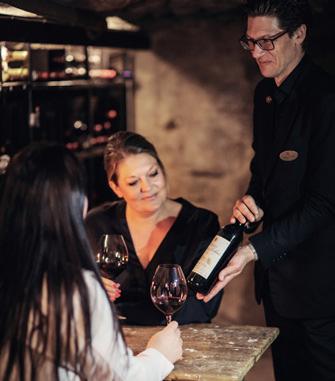

For over four decades, Norske Fjellhytter has helped bring the restorative effects of cabin and mountain life to Norwegians all over the nation. Based in Valdres, this family company has been building bespoke and traditional cabins since the early 1980s. Today, its projects look to the future, offering modern solutions built on timeless craft and tradition.
By Celina Tran | Photos: Norske Fjellhytter
In Norway, cabin life is more than weekend escapes and holidays; it is a concept deeply rooted in culture. For generations, Norwegians have sought out the peace and quiet of the mountains, returning year after year to the same familiar landscapes. Whether nestled in a pine forest or perched above a glassy lake, the cabin offers something uniquely Norwegian: a retreat from the everyday, as well as a place to slow down, breathe, and reconnect with nature.
Norske Fjellhytter is a name known to many in Valdres. For over four decades, the family-run company has delivered tailor-made cabins. Today, it is one of the oldest developers in the region.
“As one of the most experienced developers in Valdres, we offer a high level of expertise and quality. It’s important to us that our clients get the cabins they dream of, so we work with a local craftsmen and materials to create these bespoke spaces,” says Åshild Reien, manager at Norske Fjellhytter.
While Norske Fjellhytter has long been making traditional mountain cabins, it is now looking to the future of mountain living.
The traditional cabin retreat, reimagined It starts with stillness – the kind you only really notice when you have left the noise behind. It is when the lake
lies mirror-still, and the only sound is the wooshing of shoes through grassy landscapes. This is Vaset in the heart of Valdres, where Norske Fjellhytter is giving life to its new project, Frigarden.
“Frigarden is located right at the edge of Vasetvatnet, a scenic drive from Oslo that
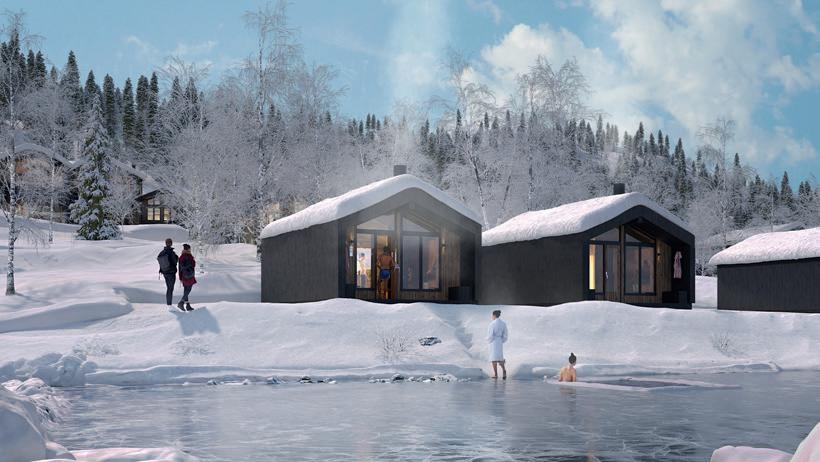


follows a river through the valley to the mountains of Valdres. The project will consist of 91 apartments, ranging from 67 to 149 square metres,” says Reien.
The buildings are inspired by traditional Norwegian architectural forms, with pitched roofs, natural materials, and warm, earthy tones, but the interiors will be bright, open-plan, and built for modern living.
Frigarden is a chance to set a new standard for mountain living, one that reflects the values of the people who want to live there. The project is being built with emphasis on sustainability and local value creation. Every detail, from the materials used to the subcontractors chosen, actively involves local tradespeople, helping support jobs and maintain traditional craftsmanship in a rural area where various industries such as tourism and construction contribute to the development.
“Furthermore, the space should not only reflect the values, but also the wants of
our customers. It should feel like your space, which is why we involve clients by letting them leave their own mark,” stresses Reien.
Between the still water and open sky “What makes Frigarden different is that it’s not just for weekends and holidays,” Reien says. “Often, many cabins stand empty throughout the year, but people
can live here full-time, if they want. That creates a completely different kind of rhythm.”
Frigarden will provide homes where residents can wake up to panoramic mountain views and walk straight out the cross-country trails. They are low-maintenance, high-comfort spaces designed for both everyday use and relaxed holidays.

“All the hassle of owning a cabin is taken out of the equation. Emptying that old outdoor toilet? Painting the fence? Shovelling snow? All taken care of. You only have so many hours to spend at the cabin over a weekend, so why not spend them doing what you want rather than what you have to?” asks Reien.
Vaset is the perfect setting for that balance. Tucked away in the heart of Valdres, between the rolling foothills and the sharper teeth of Jotunheimen, it is the perfect escape from the hustle and
bustle of the city. Just beyond your front door, trails disappear into forests across open plateaus, and alongside mirrored mountain lakes.
This is Norwegian stølslandskap at its most authentic: a patchwork of traditional summer farms, ancient grazing routes, and winding gravel roads made for slow cycling and thoughtful walks. The water in Vasetvatnet is so clear that you can drink from it. Perhaps you will even catch trout rising in the evening light or families paddling out in canoes from the shore.

Only a stone’s throw away from Mjølkevegen, one of Norway’s most beloved bike routes, and plenty of hiking trails, it is an active person’s paradise in summer. Similarly, in winter, fresh snow transforms the landscape into a vast network of cross-country trails: over 120 kilometres of tracks that crisscross meadows and forest, connecting cabins, cafés, and quiet viewpoints. There is also a small family ski resort nearby and untouched peaks for those drawn to backcountry adventures.
“And while it’s a quiet and tucked-away space, you still have everything you need. There are grocery stores and even a renowned yoga retreat not far away,” explains Reien.
The space will also include shared boathouses, saunas on the lakeshore, a swimming dock, a playground, and even a public fishing trail. While developed as part of the project, it will also be open for the local community.
“When you come here, you’re already exactly where you need to be,” Reien says.
www.norskefjellhytter.no www.frigarden.no Instagram: @norske_fjellhytter
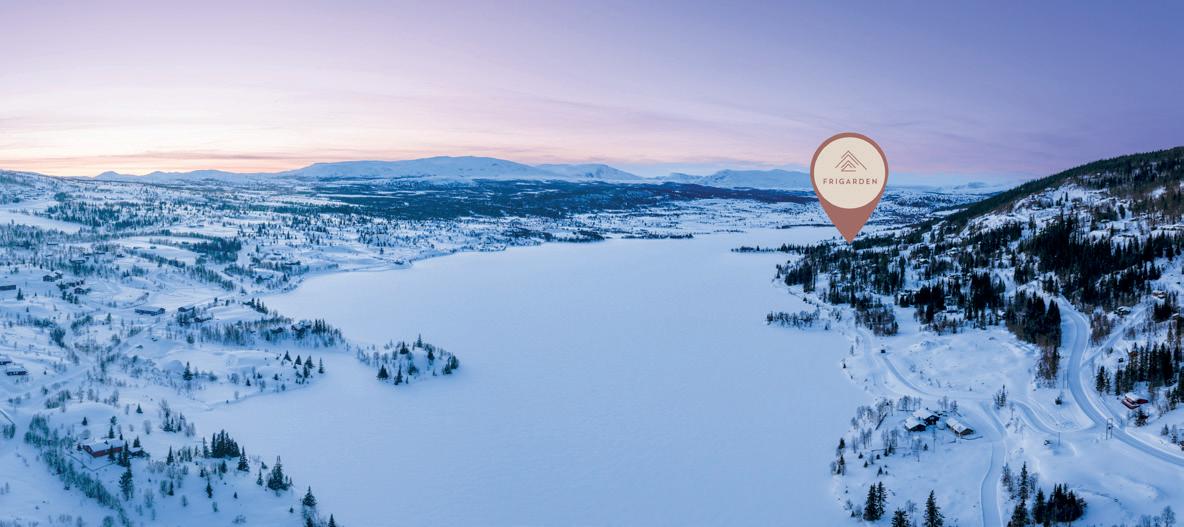
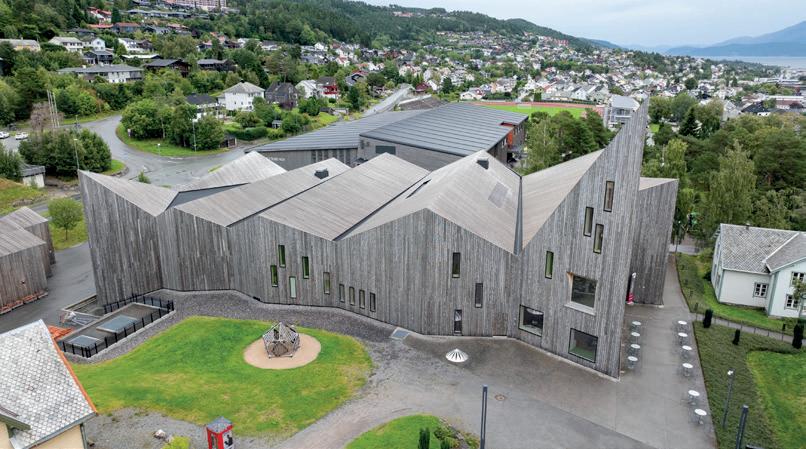

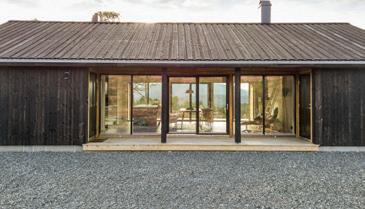
A family-run company set in Todalen, a picturesque village in western Norway, Talgø has immersed itself in wood since it was founded by Thore and Thora Talgø in 1899. Today, Talgø supplies pre-treated, ready-to-use timber to both the construction industry and private buyers. Especially popular is its impregnated wood, MøreRoyal, which is – with its modern architectural lines, smooth edges, and sleek look – ideal for contemporary building.
By Molly McPharlin
Originally a furniture company, Talgø created the first power station in its region and has a history of valuing innovation and product development. “From small, private cottages to large public buildings, Talgø is involved in many different projects. The Nordic tradition of building with wood has been preserved using modern materials like MøreRoyal, a royal impregnated wood that gives an exclusive look to our finished products,” says Janne Rangnes, head of marketing at Talgø. Talgø’s MøreRoyal is used for cladding, roofing, terraces and decorative work.
Lasting beauty
Wood impregnation is an indispensable way of protecting construction from external influences. It significantly extends the life and pristine appearance of wood. It keeps moisture from penetrating wooden structures and protects
it against insects and other microorganisms. Talgø’s MøreRoyal has been used in building projects all over Norway. “It’s popular in areas that have particularly harsh weather along the coast,” says Rangnes. “This underlines the quality of the product. With climate change, we believe that the need for cutting edge materials will increase over time.”
From buying timber, through the production process and to the finished product, one of Talgø’s goals is sustainability. MøreRoyal is sustainable because it has an extremely long lifetime with extended intervals between maintenance.
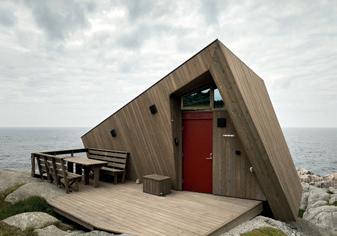
Award-winning architecture and TV fame
Talgø does not have in-house architects. Instead, the company works with a variety of people to see a project to fruition. With MøreRoyal seen as a preferred material in the building industry, architects look forward to working with Talgø and often invite them to collaborate on specific projects. Talgø has also worked closely with the Norwegian television design programme Eventyrlig Oppussing (Adventurous Renovation), which uses MøreRoyal in all their outside space design.
Talgø likes to involve itself in lots of different types of activities. “We like to say that no project is too small or too big,” says Rangnes. Some have brought a genuine element of excitement with them.
“An example of this is Romsdalsmuseet Krona, an award-winning architect-designed building in Molde on the west coast of Norway. It’s fantastic, and Talgø MøreRoyal delivered the entire facade.”
www.talgø.no
Facebook: Talgø
Instagram: @talgosiden
LinkedIn: Talgø
YouTube: Talgokonsernet

ALL OUR PRODUCTS ARE NOW VEGAN


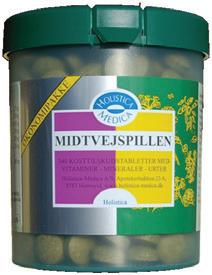

VITAMUN og BØRNEVITAMUN:
• Bidrager til en normal funktion af immunforsvaret (Folat, Jern, Kobber, Vitamin A, Vitamin B6, Vitamin B12, Vitamin C, Vitamin D, Selen, Zink)
• Bidrager til et normalt energistofskifte
(Biotin, Calcium, Jern, Jod, Kobber, Magnesium, Mangan, Niacin, Pantothensyre, Thiamin, Riboflavin, Vitamin B6, Vitamin B12, Vitamin C)
MIDTVEJSPILLEN:
• Bidrager til at mindske træthed og udmattelse
(Folat, Jern, Magnesium, Niacin, Pantothensyre, Riboflavin, Vitamin B6, Vitamin B12, Vitamin C)
• Bidrager til at vedligeholde normale slimhinder (Biotin, Niacin, Vitamin A, Riboflavin)
VITAMINS & CHILDREN’S VITAMINS:
• Contributes to a normal function of the immune system
(Folate, Iron, Copper, Vitamin A, Vitamin B6, Vitamin B12, Vitamin C, Vitamin D, Selenium, Zinc)
• Contributes to a normal metabolism
(Biotin, Calcium, Iron, Iodine, Copper, Magnesium, Manganese,Niacin, Pantothenic Acid, Thiamin, Riboflavin, Vitamin B6, Vitamin B12, Vitamin C)
THE MID-LIFE TABLET:
• Contributes to minimised tiredness and exhaustion
(Folate, Iron, Magnesium, Niacin, Pantothenic Acid, Riboflavin, Vitamin B6, Vitamin B12, Vitamin C)
• Contributes to the maintenance of normal mucous membranes (Biotin, Niacin, Vitamin A, Riboflavin)
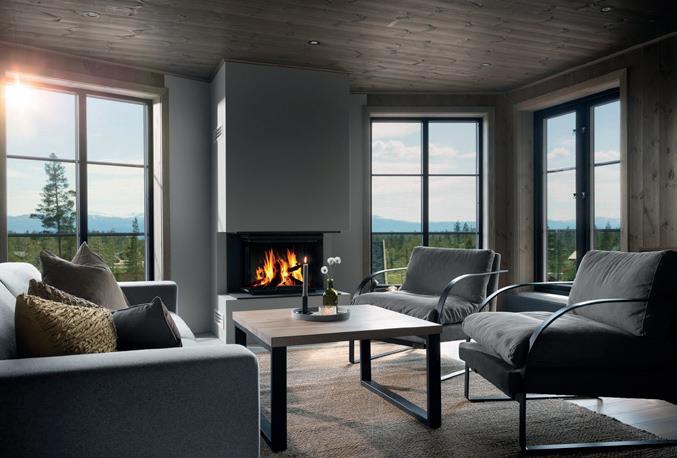
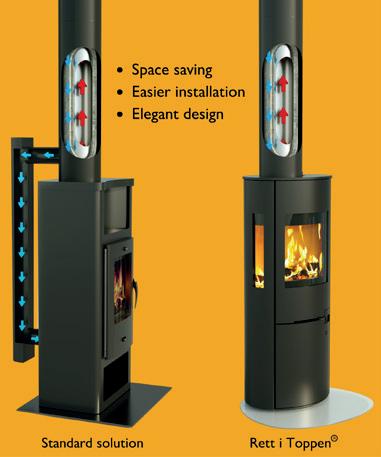
Schiedel Skorsteiner, Europe's leading manufacturer of chimney and flue systems, has spent over two decades helping shape the way Norwegians think about fireplaces and chimneys. As homes change and develop with time, Schiedel Skorsteiner has developed solutions designed to meet the realities of modern construction and the aesthetic demands of contemporary living.
By Celina Tran | Photos: Schiedel Skorsteiner
Schiedel's story began in 1946, when founder Friedrich Schiedel introduced precast chimney elements as an alternative to traditional brick systems. Nearly 80 years later, the company continues to build on that legacy with a focus on practical innovations and solutions that work well, install easily, and fit the needs of today's builders and homeowners.
In new houses and cabins (especially in Norway), energy efficiency is key and as a result, the buildings are airtight and equipped with a balanced ventilation system. This poses a challenge for traditional fireplaces, as there is not enough air in the room to operate the fireplace.
More than 80 per cent of today's fireplaces require an external air supply routed through visible ducts, often placed behind the fireplace or through a nearby wall.
This can be visually intrusive, particularly in the landscape of clean, Scandinavian lines and minimalism.
Construction logistics are important, but so are aesthetics. Playing on and reflecting the practicality of the Norwegian ready-to-go Rett i koppen meals, the Rett i Toppen system offers a similar solution in the world of fireplaces. This system eliminates the need for an external duct, which makes the installation easier and
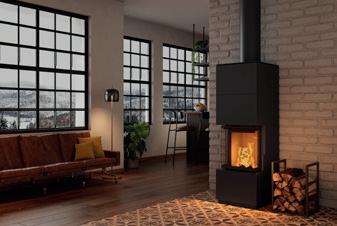
more efficient. "It's not just about how it works, but how it looks," says Geir Vernan, manager at Schiedel Skorsteiner. "Rett i Toppen allows you to maintain a visual focus on the fireplace, without the distractions of extra components."
The combustion air is drawn directly from the chimney system and into the stove through a concealed connection at the top, keeping installations clean and simple. "To minimise the risk of leakage, builders want to get the roof ready and sealed quickly," says Vernan. "Our ceiling box makes that possible without compromising the integrity of the building envelope."
Instead of waiting until later, the ceiling box allows installation of the chimney early in the construction process, before the roof and walls are sealed. This reduces the risk of leakage and simplifies the installation of the fireplace later on. Once the rest of the house is complete and the floor is ready, the fireplace can be installed without dismantling the chimney, thanks to the adjustable telescopic ceiling box pipe.
www.schiedel.no
Facebook: Schiedel Skorsteiner AS
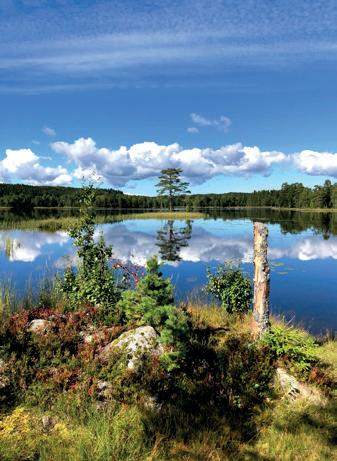
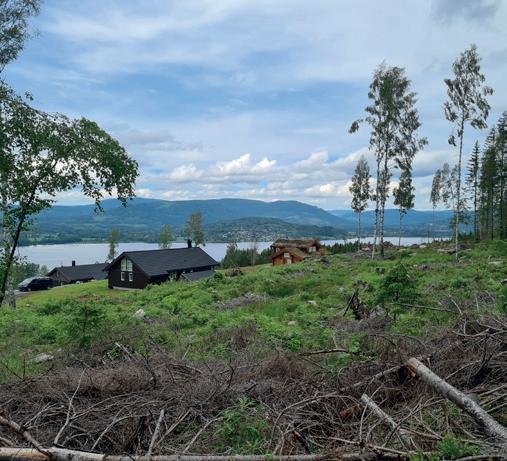
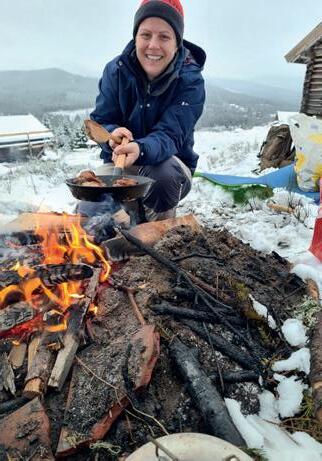
Imagine waking up to panoramic views of a sparkling lake, forested hills rolling in the distance, and the sun rising over the treetops. With a cabin at Hurdalslia Hyttegrend, just a short drive north of Oslo, this dream could become reality.
By Celina Tran | Photos: Hurdalslia Hyttegrend
Tucked away in one of Eastern Norway’s hidden gems, Hurdalslia Hyttegrend offers a rare combination of nature, easy accessibility, and endless possibilities for outdoor adventure. “Hurdalslia Hyttegrend is located in northern Akershus, only about fifty minutes from Oslo and 25 minutes from Oslo Airport Gardermoen, which allows you to escape the city hustle without spending hours in traffic,” says Thomas Sørlien, who runs Hurdalslia Hyttegrend.
The vision behind Hurdalslia Hyttegrend is clear: to create not just a holiday spot but a second home – a place where you can unwind, explore, and connect with nature. With plots free of build requirements, a strong support system for cabin planning, and a wealth of activities at your doorstep, Hurdalslia gives you the freedom to shape your own version of cabin life.
“We collaborate with experienced builders like Faun Gruppen, meaning that you can design a cabin that fits your style and needs regardless of whether you want a more contemporary or classic timber lodge,” says Sørlien. “We do our utmost to offer support with everything from planning and choosing your cabin supplier to groundwork and foundations.”
All plots are equipped with water, sewage, electricity, and fiber-optic internet

to the boundary, making your retreat away from the city hassle-free.
An active escape
Step outside your cabin door, and you will immediately be immersed in nature. Set on west-facing plots, the cabins in Hurdalslia enjoy long hours of sun and sweeping 180-degree views over Hurdalsjøen, the region’s glittering lake. “A peaceful morning hike to Brenntoppen or a challenging bike ride through the rolling hills, the landscape invites yearround activity,” Sørlien says.
With lake access, boat docks, and swimming areas just minutes away, Hurdalslia is perfect for warm summer days. The local boat association has even installed guest piers and rest facilities to make days on the lake even easier. In winter, cross-country ski trails are just outside the front door, and you are only 10 minutes from SkiHurdal, Akershus’ largest ski resort.
www.hurdalslia.com
Facebook: Hurdalslia Hyttegrend
Instagram: @hurdalslia


Eco Water AS is a Norwegian company that provides safe, globally tested drinking water filters both for your home and your cabin.
By Eva-Kristin U. Pedersen
As Norwegians retreat to their mountain cabins or seaside lodges for the summer, the prospect of spending time in a remote location, surrounded by nature, is enthusing. Yet, spending a lot of time in a remote location comes with its challenges. One of them is drinking water. Accustomed to tap water, many ask themselves if the water from the well by their cabin is actually safe.
That is where Eco Water comes into the picture. “Our cleaning technology CW42 has been used for more than 25 years –all over the world,” Morten Engen, CEO of Eco Water, explains.
Eco Water installs filters both at the point of entry (POE) and point of use (POU), that is, directly in the kitchen tap, but according to Engen, POU filters are the most common. “Most people need to cleanse their drinking water, not the water used for taking showers,” Engen clarifies, adding that Eco Water can offer several different types of taps to fit aesthetic demands as well as technical.
and environmental benefits
While filtering drinking water may seem unnecessary to many, Engen explains that more and more Norwegians are actually concerned with the quality of their drinking water – particularly families with small children or elderly.
“Norwegians are used to having good drinking water in their taps, but the truth is that many water pipes are not in great shape. Incidents due to contaminated water supplies have led people to pay more attention to their drinking water, including at home,” Engen says.
He points out that while bottled water only arrived in Norwegian stores in 1994, Norway is now among the countries in the world that consumes most bottled water, making environmental concerns another compelling reason to opt for filtered, not bottled, water. “Buying bottled is not only expensive, it also produces a lot of plastic waste, and the transport of the water is a source of pollution,” Engen points out.
Another area of focus for Eco Water is water for preparedness in the event of interrupted water and electricity supplies. The Norwegian authorities have recently upped their guidelines for how much water Norwegians should keep at their house.
“Do you really want to drink water that has been in a barrel for 10 years?” Engen asks, explaining that Eco Water’s cleaning technology filters can purify water from different sources, including lakes, rivers and rainwater without electricity –a perfect preparedness kit.
www.ecowater.no
Facebook: Ecowater.no
Instagram: @ecowaternorway
Pinterest: ecowaternorway
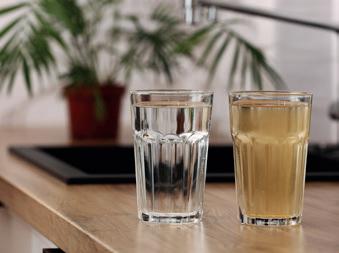
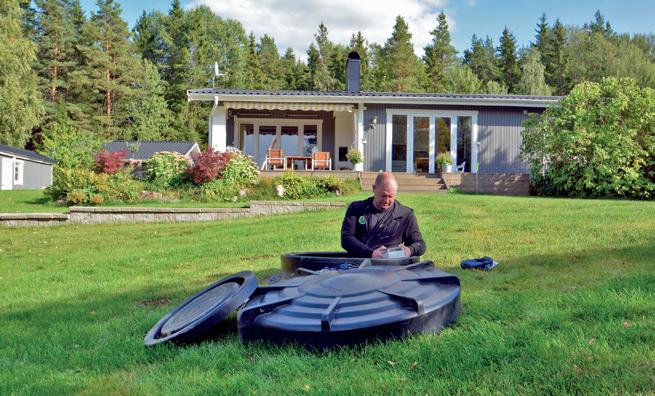
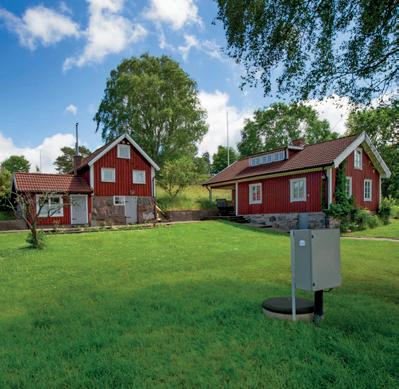
Like their Nordic neighbours, Norwegians cherish time spent in their hytte – a rustic cabin traditionally without electricity or indoor plumbing. Today, many seek to combine that back-to-nature charm with modern comforts, transforming their hytte into a cosy and functional home away from home. Biovac, a leading Norwegian provider of sewage systems and maintenance services, supports this shift by enabling sustainable upgrades for private cabins as well as residential and commercial developments.
By Molly McPharlin | Photos: Biovac
Since 1982, Biovac has been leading the way in Norwegian wastewater treatment and sewage service and maintenance. Though founded on technology originally brought over from the United States, the company is firmly built on Norwegian expertise and experience. From design to installation, Biovac delivers complete turnkey solutions for private individuals as well as larger projects, such as hyttefelt (planned cottage communities), multi-residential areas, and commercial developments.
During the initial client meeting, Biovac conducts a thorough needs analysis, taking into account requirements, preferences and site conditions, to ensure the final solution aligns with the client’s vision. A project might include the involvement of experts in design and drawing, electrical and automation systems, and installation. To ensure
that work is coordinated and managed smoothly, Biovac employs experts from all these areas. Vitally, Biovac also ensures that its work meets EU and Norwegian regulatory standards in terms of environmental impact and pollution. All Biovac’s work is carried out by certified technicians with a broad range of experience and expertise.
Of course, financing might be an area of concern, especially for private customers working within a budget. To assist

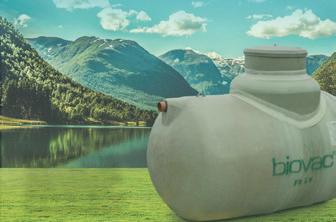
with this aspect, Biovac works with the financing company Svea and offers payment plans to suit individual needs, from monthly payments to postponing payments if needed. A simple application online will give you an answer in minutes.
Biovac offers its services throughout Norway. It also works alongside its sister company in Sweden, providing the same level of quality, competence and commitment to its Swedish customers.
In the future, the company will continue to expand its reach, collaborating with smaller communes or counties, ensuring that all areas can have their sewage and wastewater needs professionally met.
www.biovac.no
LinkedIn: Biovac Environmental Technology AS
YouTube: Biovac Environmental Technology AS
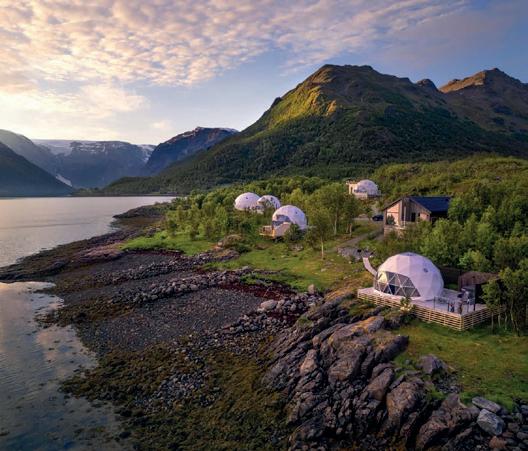

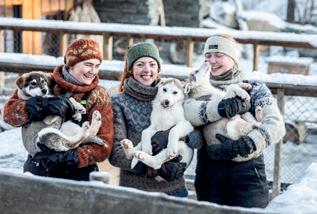
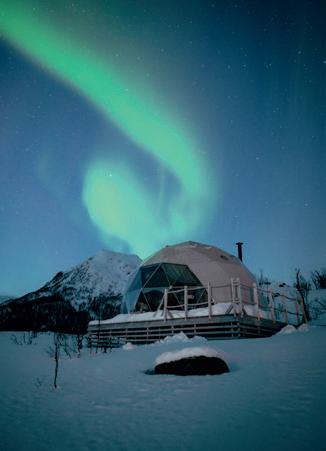
In Jøkelfjord, North of Norway, Isbreen the Glacier gives visitors an exclusive frontseat view of nature’s most dramatic performances: the blue and green sways of aurora borealis, silent snowfall, sunlit fjords, and the ethereal Arctic light.
By Celina Tran
Tucked beneath Øksfjordjøkelen, Isbreen the Glacier is a quiet retreat where luxury meets the very best of Norway’s majestic nature. “Isbreen was born from a desire to create a sanctuary that reflects the raw power and beauty of the Arctic while providing a luxurious and meaningful guest experience. Our sanctuary sits beneath Øksfjordjøkelen, mainland Europe’s only glacier that flows directly into the sea,” says owner Christine Cecilie Gaffney. “Here, nature moves at its own pace: mountains rise steeply from the fjord, seabirds wheel overhead, and Arctic light slips across the landscape in long, shifting hours.”
Guests stay in luxurious geodesic domes, each outfitted with heated interiors, ensuite bathrooms, and private outdoor hot tubs. No matter what nature has to offer, expansive skylights invite
the wilderness without sacrificing the comforts or luxuries of modern living. Every stay is bespoke, and guests are afforded the sort of personalised service that is hard to come across.
“We also tailor every stay - no two experiences are alike. From our extraordinary private chef and exclusive tours to curated excursions and cultural connections, everything is personalised,” Gaffney says.
To make meals that aim to create a deep connection to the region, the menus are refined and seasonal, utilising local ingredients such as wild-caught fish, reindeer, and arctic herbs. “We are deeply rooted in the region, hiring locally and collaborating closely with indigenous Sami communities and nearby suppliers. By sourcing nearly everything
from food ingredients to artisanal goods within the region, we support local economies and celebrate the culture and traditions of Northern Norway,” explains Gaffney.
The resort’s commitment to the local area and its nature also extends to the activities available. The staff at Isbreen encourage guests to explore everything from glacier hikes and snowshoeing across untracked terrain, to sledding with huskies or locally led Sami cultural exchanges.
However, if you prefer to just kick back and enjoy the nature on site, you might find yourself drawn to the wood-fired forest sauna or the infinity sky room, a simple, open-air space with a canopied four-poster bed, completely exposed to the sky. “No sounds. No walls. Just you, the horizon, and whatever the sky decides to bring,” says Gaffney.
www.isbreentheglacier.com
Facebook: Isbreen – The Glacier Instagram: @isbreentheglacier


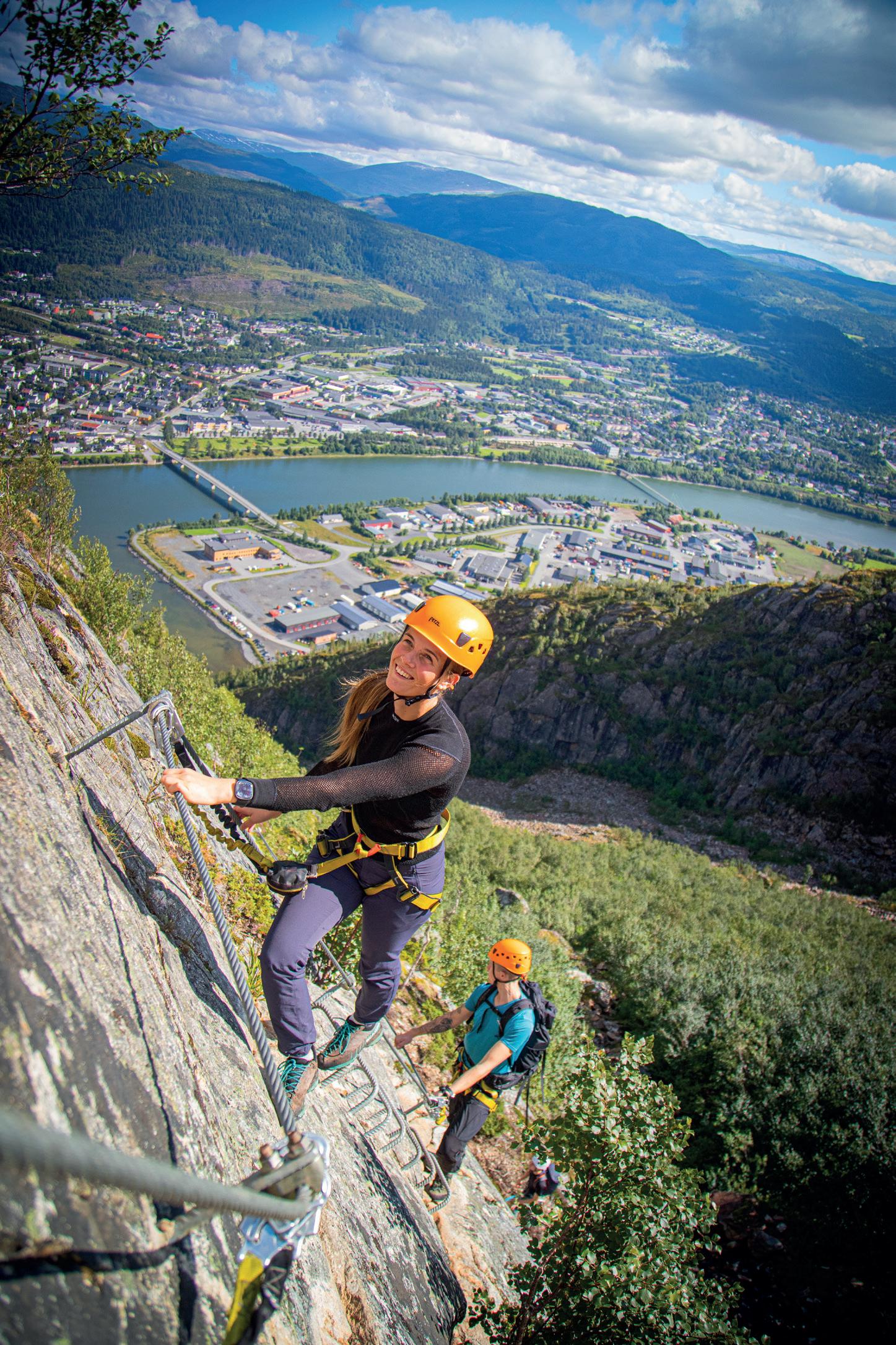








made a business out of her passion for art and her graphic design education.
By Eva-Kristin U. Pedersen
“It’s just so enjoyable to see that people like what I do – it’s like a dream,” Anita Sletten says, smiling.
Smiling, by the way, is something Anita does quite a bit; it is difficult not to get contaminated by her optimistic outlook. Perhaps it is this spirit that brought the graphic designer to where she is now. Anita has managed to carve out a special niche for herself in the world of art and decoration.
From large canvases to a tiny fox Smile at the world and it smiles back, you might say. Yet, as with many things in life, it was all triggered by a crisis.

Though a graphic designer by training, educated in Norway, the UK and France, Anita has always been fond of drawing and painting, a hobby of hers since she was 14.
To nurture her passion, she decided to take an art class and it turned out to be a good choice. Her work immediately received attention, and she started investing more time in her atelier, focusing mainly on large paintings on canvas. She also started teaching art classes for children, retirees and people suffering from dementia, something Anita says she benefits from almost as much as her students. “It’s something that brings a lot of joy, both to the students but also to me,” she underlines.
But then a family crisis forced her to change her habits. Her son went through


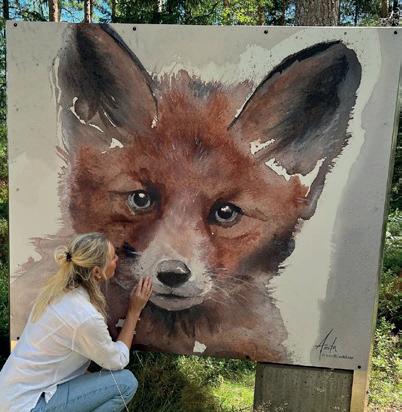
a difficult time and needed his mother close. To continue painting, she had to make do with a small storage room at her son’s primary school.
Confined to a small space, Anita imagined the animals out in the wild. In particular, she saw a fox – and it stared straight back at her. “I felt like I looked straight into its soul,” she says. That fox made its way into her aquarelle painting – and took Anita´s work in an entirely new direction.
After exhibiting the aquarelle at a fair along with other animal paintings, Anita was proposed a collaboration where her paintings would be used for interior decoration items. The striking animal paintings became so popular that they were featured in the television series Eventyrlig Oppussing several times, and, as one thing often leads to another, she started receiving requests from several design companies, from Bohus to Magnor, Trend Design and others. Together with renowned interior designer Halvor Bakke, she has also designed the dinnerware collection Nostalgi.
Nostalgic Norwegian culture
Today, her work is used for pillows, tablecloths, porcelain and other household items. The animals still dominate, but she also finds inspiration in nostalgic Norwegian culture. She also paints pets upon request. Moreover, Anita has
been joined in her endeavour by her father, who writes texts to accompany some of the illustrations. “The ultimate goal is to be able to live of this full time, because I know how to do this and it’s what I love to do,” Anita says.
While her market has so far been Norwegians, especially those looking to decorate mountain cabins, tourists eager to bring home a piece of Norwegian nature are increasingly interested in Nordicwild. Anita also operates a web shop where all her merchandise can be ordered in the desired size and on different types of material. Eventually, she hopes to bring her talent to the international market as well.
Although her commercial adventures have been successful, Anita’s artistic
career continues in parallel. Named Artist of the Year in Indre Østfold last year, her work was chosen for an exhibit called Dyrenes Vandreutstilling.
Once an artist… Anita also says that she tries to find time to work on the large canvases that she used to love, although she admits it can take up to a year to complete one single painting. In spite of the time required, she hopes to organise a solo exhibition in the coming years. “It’s about having long-term perspective,” she says and smiles again – a smile that does little to hide the passion and tenacity that drives her.
www.nordicwild.no Facebook: Nordicwild.no Instagram: @nordicwild.no


Are you looking for a night out that hits all the right notes? Look to Boho House, Oslo’s late-night playground, where bold flavours, banging cocktails, and deep house beats come together under one roof. Part restaurant, part cocktail bar and part vibe factory, Boho House is where the evening really begins.
By Celina Tran | Photos: Boho House
If you find yourself in Norway’s capital one evening, make your way to Frogner. With good food, drinks, and music, the night is yours to stretch out at Boho House.
“Boho House is a modern restaurant and social house in Oslo, where refined food and wine meet a vibrant, laid-back energy,” says Barney Blichfeldt, marketing manager and resident music curator at Boho House. “We offer a seasonal à la carte menu crafted with precision and creativity, an extensive and carefully curated wine list, and a hidden private
dining room called ATM, where guests can enjoy a more intimate and immersive tasting menu experience.”
Boho House opened at the end of last year with a clear ambition to create something different in Oslo’s dining scene. Chris Grøtvedt, the man behind the concept, and the Boho team wanted a space that could deliver excellent quality goods but stripped of a hoity-toity formality.
“We saw a clear gap in the market, inspired by our travels. We’re the kind
of people who love to eat out late – to share a bottle of wine and graze on small plates well into the night – something Oslo hasn’t traditionally offered,” says Blichfeldt. “At Boho House, we’re committed to creating a space where quality and comfort go hand in hand. Our goal is to offer something that feels sophisti-
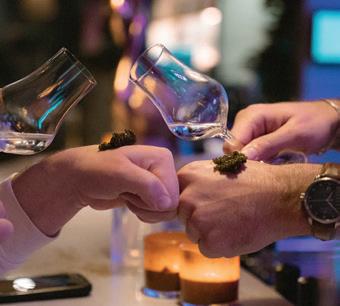
cated but never stiff – a kind of fine dining served in a casual way. We want our guests to feel welcome, whether they’re dressed up for a special occasion or just dropping by for a spontaneous night out.”
Eat, sip, and stay a while
Whatever you want your night to look like, Boho House is there to both serve and entertain. Why not start the evening with a dinner inspired by Asia and South America? Chefs Halvor Woll and Øyvind Dalelv plate up bold dishes like grilled langoustine with fermented chilli or croquettes with oxtail and Västerbotten cheese. Their dishes are global and gutsy yet grounded in Nordic ingredients.
“Our chefs come from a diverse background – everything from Michelin-starred South American kitchens to French, Asian, and steakhouse environments. Our front-of-house team is handpicked from some of the top venues in the city. Add to that our award-winning bar team and a thoughtfully curated musical identity, and you get what we like to call The Boho Experience. We don’t just want guests to eat – we want them to feel something.”
Have a swinging great time
Afterwards, step over to the Boho Bar, where a team of cocktail wizards has crafted a list full of playful, polished and prize-winning surprises. And, of course, because drinks go hand in hand with good music, Boho’s sound is as curated as its menus. Guests can expect good beats all the way from the dinner-time blues until the night’s lively conclusion.
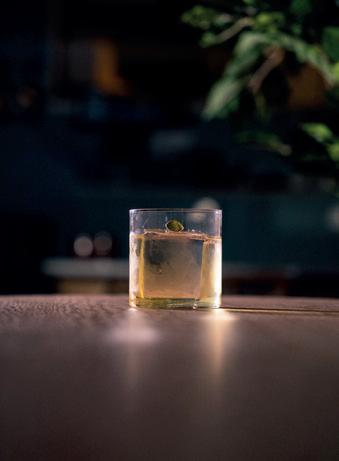
And should you find yourself craving after-hours well into the night? Don’t fret. The more compact late-night menu kicks in after 10.30pm – perfect for sharing, snacking, or pairing with that second bottle of wine (or third cocktail).
“Whether you’re in the mood for a proper dinner or just a few bites with your wine or cocktail, we’ve made space for those slower, longer evenings,” says Blichfeldt. “For the full experience, I always recommend booking a night in ATM, our private dining room – it’s curated, intimate, and truly memorable. And for cocktails, just ask the bar team for their latest competition-winning creation – they’re constantly innovating.”
If you want fine dining without a fuss and nights out without a curfew, look to Boho House in the heart of Oslo, where you’re bound to have a swinging great time!
www.bohohouse.no
Facebook: Boho House Oslo Instagram: @boho.oslo
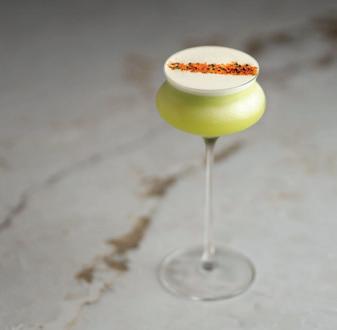



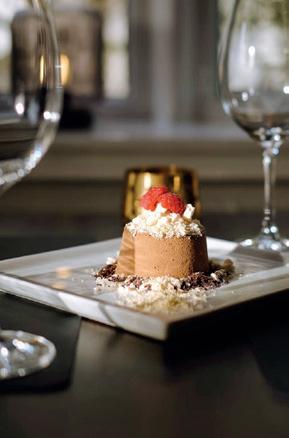
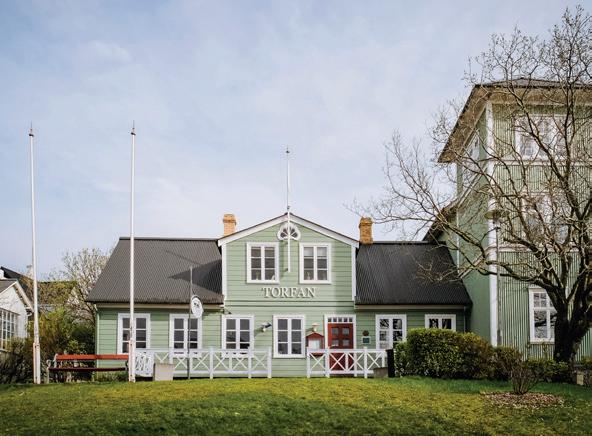
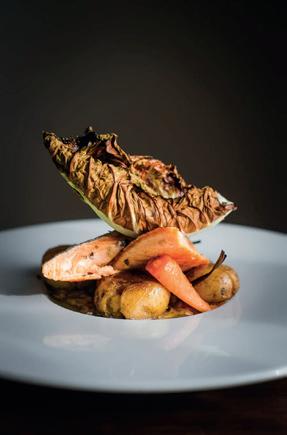
Restaurant Torfan is a new culinary delight in the heart of Reykjavík. Here, guests can expect delicious meals made from carefully selected ingredients, as well as a warm and welcoming atmosphere – in one of the city’s oldest buildings.
By Malin Norman
Located in a row of historic houses in the centre of Reykjavík, new restaurant Torfan opened up its doors in April. The old building in Bernhöftstorfa dates back to 1838 and has been the home to famous Icelandic poets such as Hannes Hafsteinn and Stefán Thorarensen.
Torfan is a long-term dream of restaurateurs Nik and Indrek, who wanted to bring their culinary skills and creative ideas to a larger audience in Reykjavík.
“After meeting a third partner, our ideas became reality and when we found the right location, everything fell into place,” smiles Nik.
With a focus on authentic Nordic cuisine, the team of skilled chefs takes pride in sourcing premium ingredients from trusted local producers, with a seasonal menu that changes depending on what is fresh and available. Think traditional
Icelandic cuisine but elevated and with a high-end twist.
“At Torfan, we are dedicated to supporting small businesses in Iceland and the Nordics,” says Nik. “Your meal is made from fresh ingredients and served in a wonderful setting, where you can experience part of Reykjavík´s history. Our menu evolves with the seasons to ensure that we always serve the freshest ingredients, no matter the time of year.”
Torfan’s sister restaurant in northern Iceland
In the picturesque fishing village Hjalteyri in northern Iceland, visitors can enjoy a curated dining experience at Torfan’s long-established sister Restaurant Eyri. “This is also a meeting place for the locals, who come to enjoy the food, the friendly atmosphere and the stunning views of fjord Eyjafjörður,” adds Nik.
The small fishing village, with a population of around 40, has played a fundamental role as one of the major fishing ports of the northern region. The old herring factory has been converted to an artisan hub, with artist studios as well as a whale watching station and a dive centre nearby. After a meal at Eyri, go for a stroll and explore the artist workshops, and unwind in the local hot tub – the perfect activity after a delicious meal.
www.torfan.is
Facebook: Torfan veitingahús Instagram: @torfanveitingahus
www.eyrirestaurant.is
Facebook: Eyri - Hjalteyri Instagram: @eyri_hjalteyri
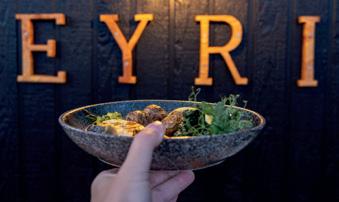






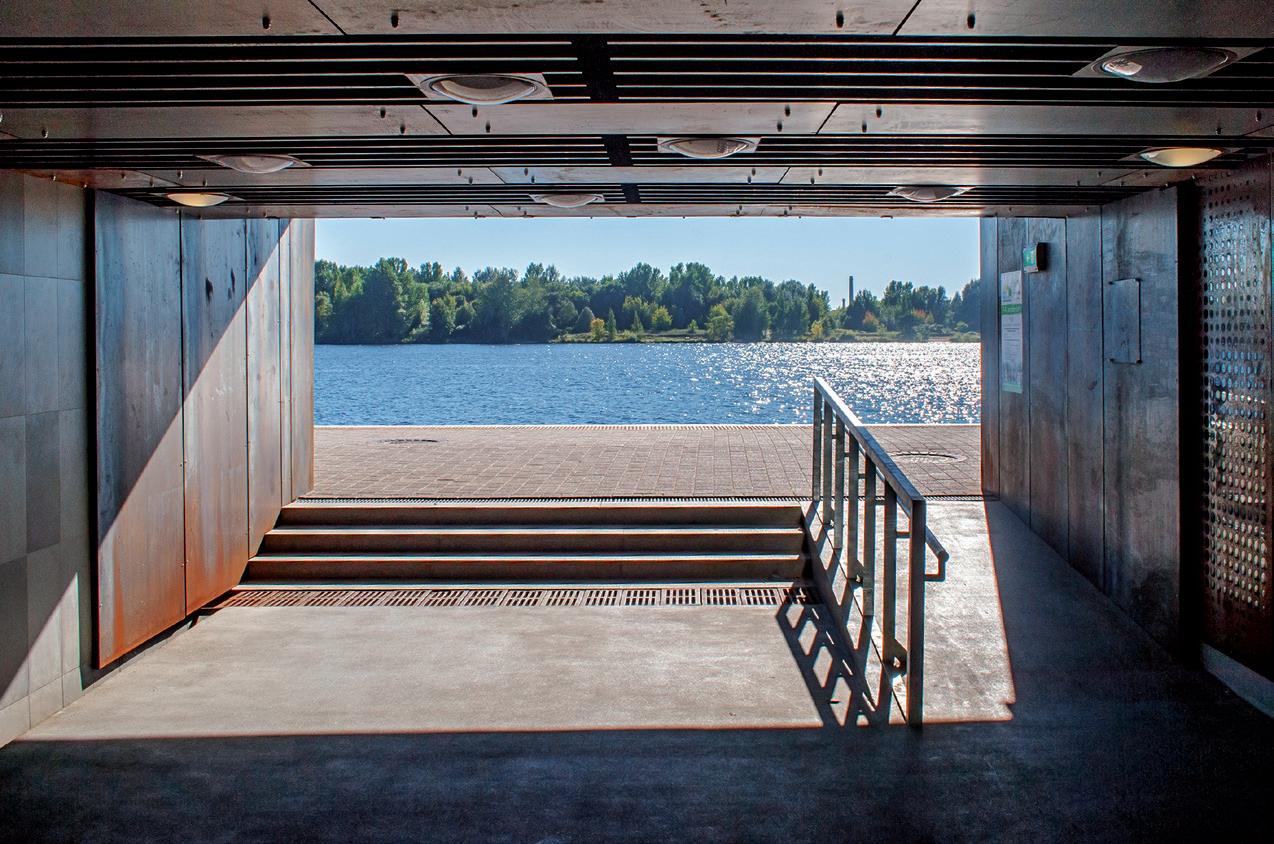
Riga-based architectural firm Arplan is mastering the art of meaningful simplicity, from revitalising a former warehouse district and adjacent waterfront, to designing a fire station at Riga airport.
By Malin Norman
Latvian architectural firm Arplan has many years of experience offering architectural services, managing building projects, and coordinating interdisciplinary collaborations. Established in 2001 by Rolands Bruzgulis, the team of architects plan and implement public, industrial, commercial and private projects of varying scale.
“We have a special focus on new construction and renovation of diverse commercial and urban projects. Our designs are sustainable and, in harmony with nature, we shape the fabric of the city and people's way of life,” says Bruzgulis, who describes this approach as meaningful simplicity. “In a way, you can say it’s about not over-designing. Architecture should be rational, a
shell that reflects the life that goes on inside a building or a city.”
Warehouse district and waterfront promenade
Arplan’s perhaps most praised project is the revitalisation of the former warehouse
district Spikeri and its adjacent waterfront promenade Daugava in Riga, which was completed in 2013. Commissioned by Riga City Council, the project has been awarded multiple prizes, including silver at The Americal Architecture Prize, 2016, in the category landscape architecture/ urban design.
The 58 historic warehouses in Spikeri, built in the late 19th century, were once used to store cargo from ships and train freights. Nowadays, the remaining
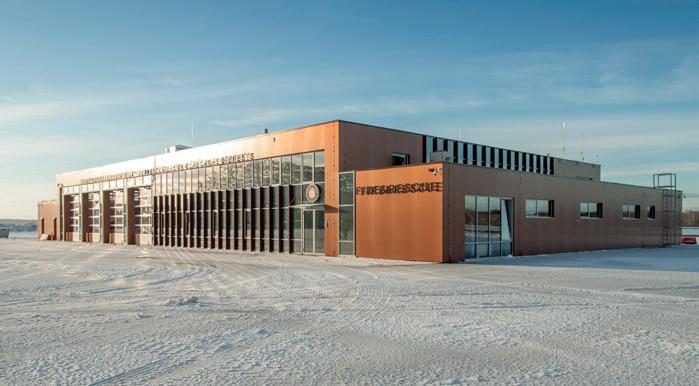
buildings house creative agencies, restaurants and offices, as well as the Riga Ghetto and Latvian Holocaust Museum.
A former pedestrian underpass connecting Spikeri with the Daugava waterfront was reconstructed and the promenade now stretches 1,6 km along the river with a bicycle lane, seating areas, a playground, quays for river boats, a skate park, and a square often used for events. “With this landscaping project, we were striving to remove barriers in the city centre and, instead, enhance people’s connection with the river,” says Bruzgulis.
Airport fire station and a building within a building
Arplan also designed the fire station at Riga Airport, opened in 2014. The two-storey building is integrated into the airport territory, near the runway, to ensure fast and efficient access for fire engines. In order not to obstruct visibility, the total height could not exceed 6.7 metres. The fire station includes a garage, individual rooms for duty shifts, a duty room with a kitchen, depot control rooms, technical and maintenance rooms, as well as a gym and showers.
A new concept currently undergoing public tender is the bus station in Preiļi town centre, in collaboration with Livland Group. The project includes redevelopment of the existing bus station premises as well as surrounding streets and a public square. “The challenge here was to keep the historic building intact, whilst also giving a new shelter to the bus station,” the architect explains.

Another interesting development is the reconstruction and restoration of the Latvian Soldiers Memorial Museum in Lestene, a joint project with Livland Group and Vizarh, with Arplan responsible for architecture. Its exhibit features the history of parishes Džūkste and Lestene, as well as the events and consequences of World War II. The plan includes building a new exhibition hall in a former barn, as well as remodelling the administration part of the museum, creating a new office and meeting rooms, a kitchen, restrooms, and an information centre in the lobby. “It’s basically a new building within an existing building,” says Bruzgulis. “All historical layers are preserved, integrating them into a modern architectural solution.”
A new urban residential development in Riga is undertaken in collaboration with
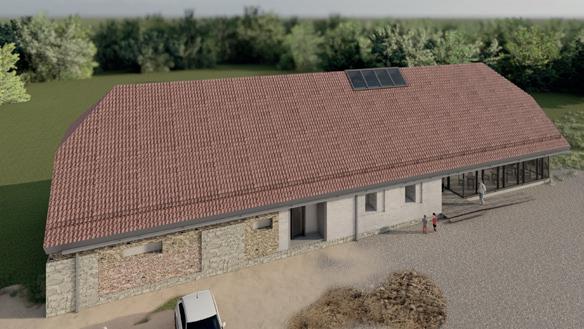
Italian architect Paolo Bodega, one of Arplan’s long-term international partners. City Oasis will be transformed into an inclusive and healthy green living environment. As the area is adjacent to a UNESCO World Heritage site, the project is currently undergoing numerous phases of approval before it can kick off.
The residential project includes five buildings, courtyards, and a semi-underground parking garage. “We wanted to create an area where people would feel truly great,“ adds Bruzgulis. “City Oasis will be an inclusive residential quarter, with well thoughtout planning and landscaping, aesthetic architecture, and high-quality materials for both the interiors and exteriors.”
www.arplan.lv
Facebook: SIA arplan
Instagram: @sia_arplan


This year marks the 275th anniversary of the royal textile factory in Brihuega. Nowadays, this historic building houses a 5-star hotel that is sure to impress guests with heaps of character, fantastic culinary experiences, and a stunning romantic garden.
By Malin Norman | Photos: Castilla Termal Brihuega
The 5-star hotel Castilla Termal Brihuega is located in a former 18th century royal textile factory in Brihuega, less than an hour from Madrid. The village is often given the poetic name El jardín de la Alcarria, the Spanish Provence, thanks to its stunning beauty.
“Castilla Termal Hotels is a group of exclusive hotels, often in landmark buildings, that strives to have a positive impact in rural areas,” says Andrés Mena, hotel director. “Brihuega is a small village with around 2,500 inhabitants. Here, Castilla Termal Brihuega ensures economic sus-
tainability for some 80 families, and our dedicated team attends to every need of our guests.”
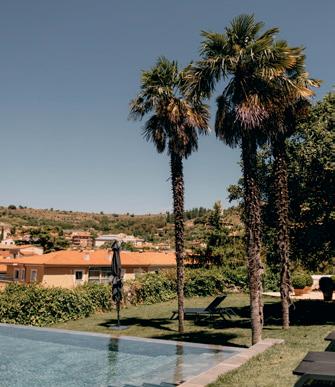
Opened in 2023, the hotel preserves the essence of the old factory, which dates back to 1750. The only round industrial building in Europe offers an extraordinary setting with characterful rooms, a thermal pool and spa treatments, a protected romantic garden, and a culinary journey that elevates the experience.
“The garden has a wonderful infinity pool; it looks just like a postcard. When entering the garden, you will feel as if you’re in a fairy tale,” smiles Mena.
Thermal pool and 1750 massage
Tranquillity, health and wellness are key concepts at Castilla Termal Hotels. In Brihuega, you can immerse yourself in the thermal pool, Jacuzzi and outdoor infinity pool, and enjoy a holistic wellness experience with exclusive massages, Vichy showers, rituals and treatments.
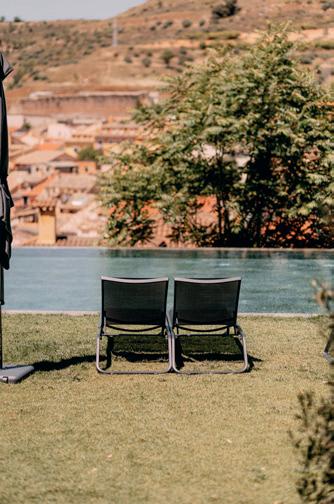
“Our wellness area offers peace and quiet, and disconnection from everyday life,” promises the hotel director. “Try our 1750 massage, inspired by the historic textile factory. The signature treatment is designed to release tension, relieve stress, and restore flexibility. We use harmonious movements and stretches with fabric, combined with an enveloping aroma, to create a unique and unforgettable experience.”
A gastronomic journey awaits
In the building’s central space, previously used to dry textiles, restaurant La Redonda tempts with culinary delights.
“The setting is incredible, with an impressive glass dome and a tree in the middle; it’s quite a special experience to dine here,” says Mena.

Guided by product and simplicity, the team at La Redonda uses local produce of the highest quality. “Promoting local suppliers is part of our DNA,” ensures Mena. This means sourcing bread, cheese and meat from the surrounding area. Honey is also considered one of the best in Spain, with an abundance of aromatic plants such as rosemary, lavender and thyme. And, of course, the hotel has fantastic wine at its fingertips, as La Mancha is the biggest wine region in Europe.
Experience the Spanish Provence
Brihuega has become increasingly popular, much thanks to its beautiful location and the chance to see the lavender fields in bloom – the village is even called the capital of lavender. The lavender festival
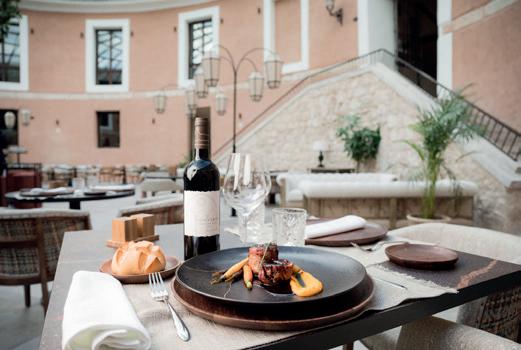
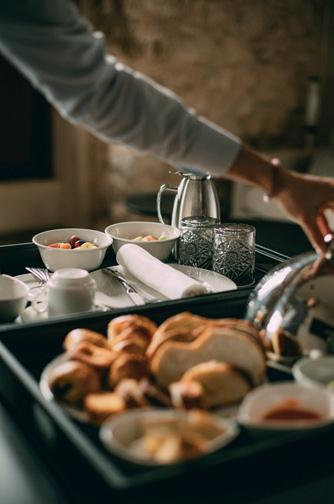
is a highlight, which takes place 11-12 and 18-19 July this year. During the festival, Brihuega attracts around 50,000 curious visitors, who enjoy events such as sunset concerts in the middle of the lavender fields.
With its rich history, there is much more to explore in the village, for example Peña Bermeja Castle, a Medieval fortress dating back to the 17th century, as well as the old bull ring and the historic city wall. Mena adds; “Brihuega is a captivating place, bursting with history and culture, and plenty of artisans to keep traditions alive.”
www.castillatermal.com
Facebook: Castilla Termal Hoteles
Instagram: @castillatermal
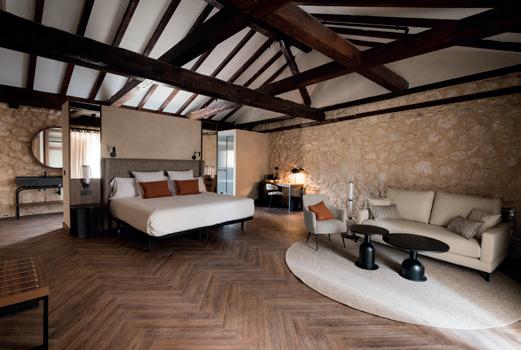
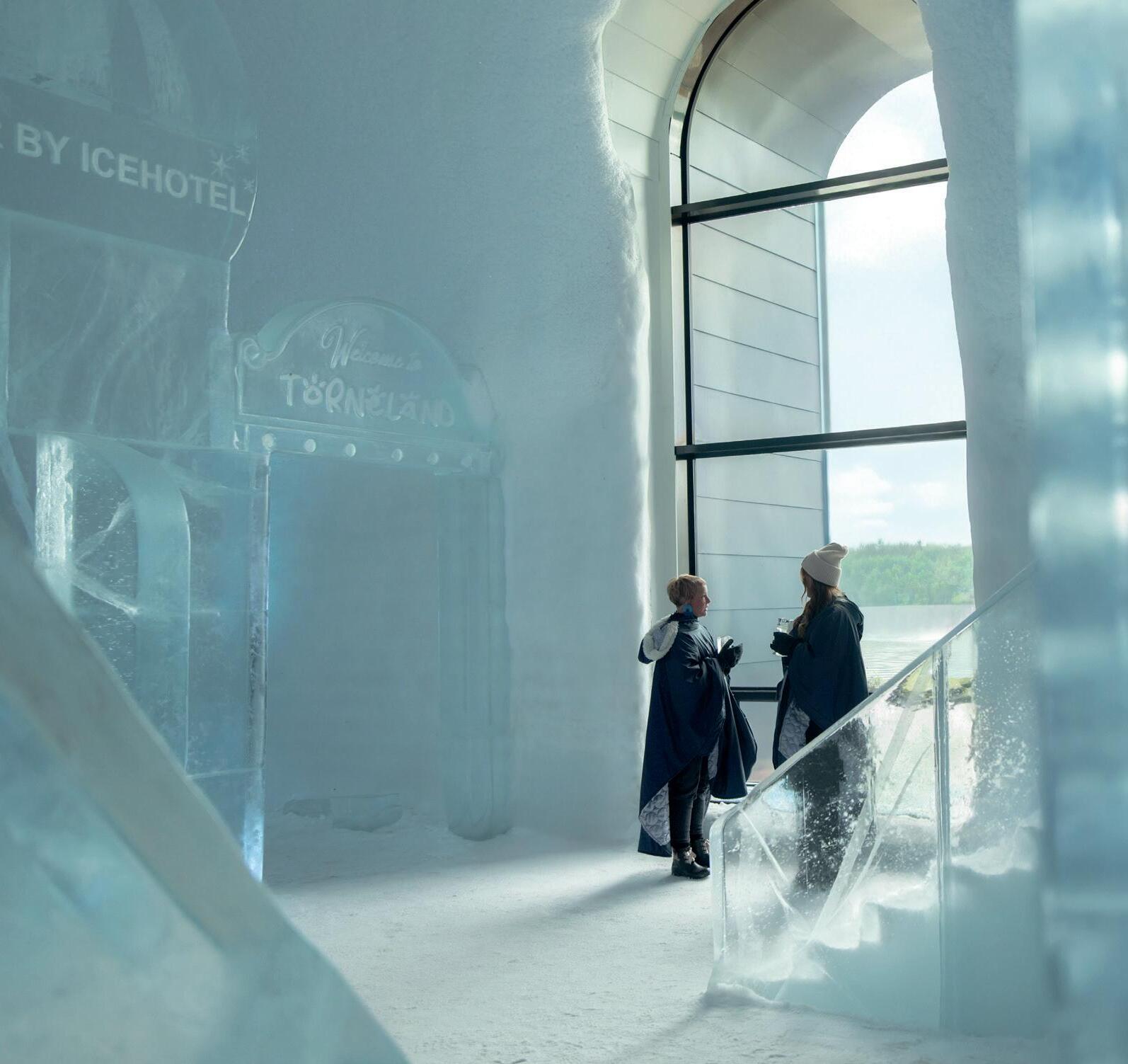
Switch crowds for open landscapes. City walks for fishing trips. Nightlife for days without end. Visit ICEHOTEL in Sweden and experience the Arctic summer with pristine rivers, the midnight sun that never sets and unique crystal-clear ice art in ICEHOTEL 365.
Welcome to ICEHOTEL for a night surrounded by ice art. www.icehotel.com




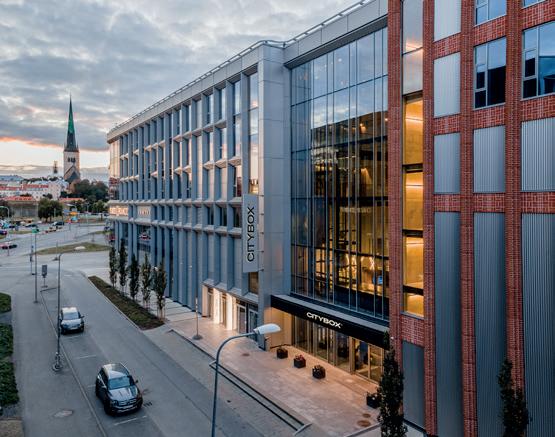

In Tallinn’s buzzing city centre, Citybox Hotels offers a fresh take on hospitality that blends comfort, minimalist design and modern tech – making it the perfect base for curious travellers looking for quality without clutter and fuss.
By Ndéla Faye | Photos: Citybox Hotels
Tallinn is a city of contrasts, where the medieval Old Town and its cobbled streets meet vibrant creative quarters and a thriving tech scene. Located just steps from the city centre and the Old Town, Citybox Tallinn offers guests a sleek, affordable stay that blends simplicity with ease.
Comfort and convenience
Citybox is a Norwegian-owned chain, with sister hotels in several European cities. This design-driven concept brings a smart and convenient approach to accommodation. At the heart of it all is a philosophy that less is more – without ever compromising on quality. As a result, Citybox Tallinn offers Scandinavian-designed rooms and free high-speed Wi-Fi. Instead of a traditional reception, guests self-check in at digital kiosks – but for those who would rather have human assistance, staff is available on the premises around the clock.
“We focus on providing a smooth service all-round. Although we’re an affordable
hotel, we absolutely do not scrimp on quality or style. Our beds are luxuriously comfortable and high-quality, and our customer reviews speak for themselves,” says Marlene Opstvedt, digital marketer at the company.
The rooms reflect the brand’s hallmark style: clean lines and a clever use of space. You will not find minibars or televisions in the rooms; instead, thoughtful design choices create a peaceful atmosphere that prioritises

rest and functionality. Guests can unwind in the communal TV lounge, prepare simple meals in the guest kitchen, or take advantage of meeting rooms and a co-working space, which is ideal for remote workers.
As Tallinn continues to grow as a hub for culture and innovation, this hotel concept fits right in: unfussy, forwardthinking and effortlessly cool. “With its central location, Citybox Tallinn is a great base for visitors who want to explore the city,” Opstvedt concludes.
www.cityboxhotels.com/hotels/tallinn/ Facebook: Cityboxhotels
Instagram: @cityboxtallinn
TikTok: @cityboxhotels

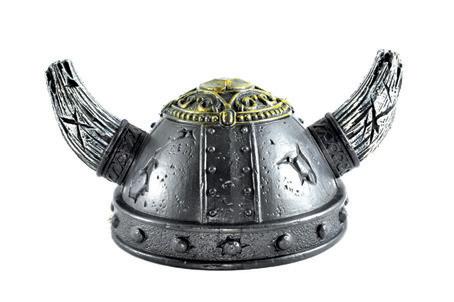
Frösåkers Brygga is a genuine attraction for the entire family that takes you back in time.

Anundshög – a forgotten time!
Anundshög is a real treasure for everyone, regardless of how interested in history you are. Anundshög is Sweden’s largest burial mound and is said to be the resting place of King Bröt-Anund although the grave has never been excavated. Alongside the burial mound there are five stone ships from the first millennium AD as well as other graves and a stately rune stone. Anundshög and the surrounding area of Badelunda are full of prehistoric finds and are believed to have been an important centre of power.

Seven places to check out in Västerås:
• Västerås Domkyrka: cathedral and resting place of King Erik XIV
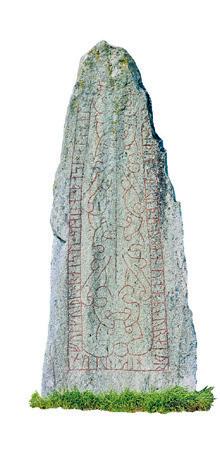
• Västmanland Läns Museum: tells the story of the city’s cultural heritage
Kokpunkten Actionbad: Sweden’s first action-filled water park
Anundshög: Sweden’s largest burial mound with rune stones
Skultuna Messingsbruk: producing brass products for over 400 years
Vallby Friluftsmuseum: one of Sweden’s largest open-air museums
Västerås Konstmuseum: a meeting place for art lovers of all ages
Check out visitvasteras.se for more inspiration on what to see and do.
This little piece of paradise is set in the middle of Frösåker’s beautiful countryside and gives you the opportunity to try out some historic activities like sailing and rowing longboats, play tournament games and learn more about the Viking Age. You can also enjoy refreshments and spend the night in a boathouse or your own boat in the guest harbour. Frösåkers brygga is home to Sweden’s largest floating boat museum with over 20 Viking ships, 2 cogs and a number of traditional boats. An educational Viking adventure for people of all ages is waiting for you at Frösåkers brygga!
Check out visitvasteras.se for more inspiration on what to see and do.

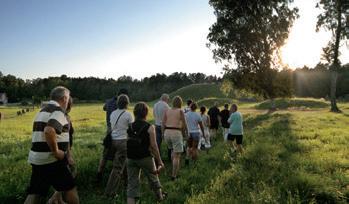
From less stress (Darin’s Mimosa) to hot mess (Zara Larsson’s Pretty Ugly), there’s a decadent array of new Scandipop gems for you to add to your playlist this month.
Swedish music legend Veronica Maggio is back with her first release since 2023 – new single Inte Bra i Grupp. It’s the first song to be taken from her forthcoming eighth album Sciura, which her producer on the record, August Vinberg, is calling her Ray Of Light! As if I wasn’t already excited by that Madonna comparison, this new single absolutely slaps – while simultaneously sounding nothing like anything Veronica has ever put out before.
Darin seems to have a knack for coming out with precisely the song you need, when you need it. Pairing a “sipping on mimosas” hook with a reggaeton-lite beat, I already know that his new single Mimosa is going to be soundtracking the next few weeks of easing nicely into summertime. And that’s going to sound so good!
Double Eurovision champ Loreen has just added a third Eurovision-winning song to her repertoire. Taking Duncan Laurence’s Arcade, which scored victory for the Netherlands in 2019, Loreen has given a beat to the ballad and put it (and the listener) into a deep trance.
Elliot, a new up-and-coming artist in Sweden, has been releasing a steady stream of singles over the past few months, with his debut album pencilled in for the summer. Hands has been the big highlight of the bunch so far – serving up a dreamlike production to complement its wistful lyrics. His latest single Green Mile packs a whole other kind of punch, too, if you fancy following Hands with a downbeat chaser.
Finally, we have a brand-new anthem for anyone around the world who is living their best ‘Hot Mess’ life. And with Zara
We are all enjoying the change of seasons. When I look out my window, people are wandering past in shorts, legs streaky with sunscreen. Children are demanding ice cream every day of the week, and rosé wine is suddenly back on the menu after having been slighted for months on end.
The parks are full of people barbecuing, drinking, and getting terrible sunburns. The outdoor pools are open, the pollen is high, we are all digging out the sandals and cursing ourselves for not keeping the sunglasses somewhere we can actually find them.
So far, we are pretty similar, UK and Scandinavia. If the sun comes out, we go out to enjoy it. The Swedes will plonk themselves down into deckchairs, onto towels in the parks and sit on any available bench with their legs out to work on

their tan. But... I am yet to see a Swede sunbathing by a main road.
This is not as odd a sight in the UK. I am aware that there is not as much space or greenery available to the UK population, and you need to work with what you have. But I would draw the line at roundabouts and car dealerships. There are
By Karl Batterbee

Larsson at the helm, it obviously hits the pop spot even for those with their lives well in order. Check out her new single Pretty Ugly for something a little… different.
www.scandipop.co.uk
By Gabi Froden
many social media posts showing pale Brits on display for cars, trucks and buses going past. These people seem completely oblivious.
I will not judge anyone for seeking out the sun, in fact, I am a little bit jealous of this attitude. But I dare you to find me a swede in swimming trunks in the middle of a roundabout. Even for a tan, there are just some things not worth exposing yourself to. Like pollution and extreme mockery.
Gabi Froden is a Swedish illustrator and writer, living in Glasgow with her husband and two children. Her children’s and YA books are published in Sweden by Bonnier Carlsen and Natur&Kultur. www.gabifroden.com

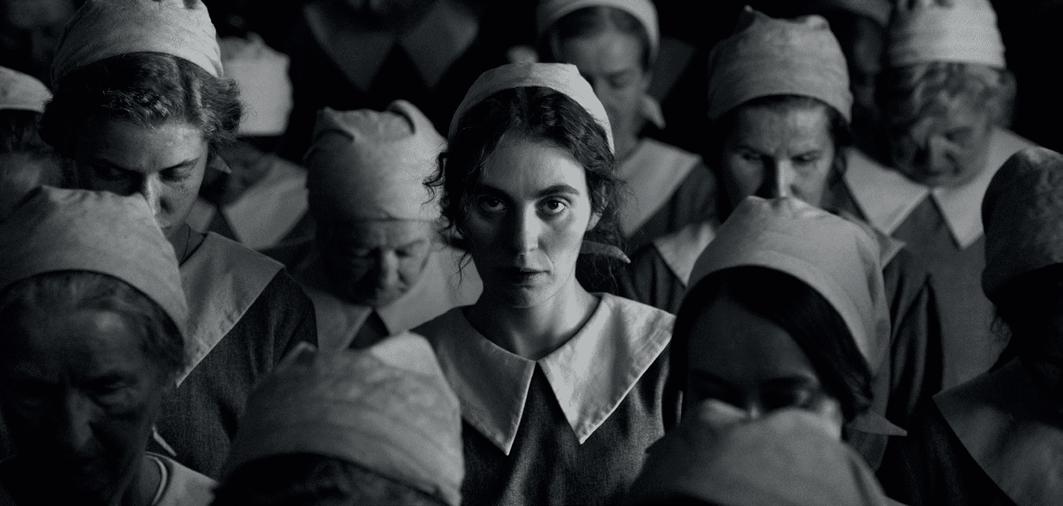
In this month's column, we turn our attention to a topic that may be less glamorous than usual but remains vital to the strength of the Nordic film industry: its overall health.
Across the globe, the screen sector faces mounting pressure from economic slowdowns, the lingering effects of COVID-19, shifting viewing habits, and rapid technological change – most notably the rise of artificial intelligence. The Nordic region is no exception. While each country has its own story, a common theme emerges: instability and uncertainty, especially for those working behind the scenes.
In Denmark, the film sector has seen a recent dip in revenues, despite overall employment remaining steady. A key concern is talent retention, as experienced professionals are increasingly drawn to more attractive opportunities abroad.
Sweden is undergoing a period of recalibration. After years of growth, production volumes are falling, in part due to the exit of key commissioners like Viaplay and a slower greenlighting process. Freelancers dominate the workforce, but a lack of national data makes it hard to assess the full picture. Efforts are now underway to
build a workforce registry to better support industry professionals.
Norway is also feeling the pressure. Freelance work is the norm, and only a third of jobs are full-time. A recent downturn in production led to sharp drops in job availability and active professionals in 2023, with nearly a quarter now holding secondary jobs outside the industry. There's also growing concern over shortages in specific skilled roles, highlighting the need for training and long-term workforce planning.
In Finland, although current data is limited, informal reports suggest that professionals are finding it increasingly difficult to secure consistent work. Redundancy negotiations at production companies have been ongoing for over a year, and the industry is grappling with how to adjust after a recent creative boom.
Iceland, in contrast, has seen growth in both employment and production over
By Anders Lorenzen
the past few years. However, the future is not without concern. While turnover remains strong, public funding is set to decrease significantly, which may impact momentum moving forward.
Together, these snapshots reveal a Nordic industry at a crossroads – resilient but in need of strategic support to ensure long-term sustainability in a rapidly evolving landscape.
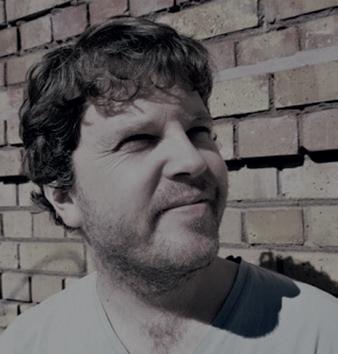

Festival season is upon us once again! And whether it’s music festivals, film festivals, photography festivals or even samba festivals you’re into, there’s plenty of them happening in the Nordic lands this month. Here’s Scan Magazine’s pick of the bunch, plus a few other cultural highlights taking place across the month of June.
By Karl Batterbee


Copenhagen's biggest street party and electronic music festival is once again set to attract 100,000 Copenhageners outside throughout the various neighbourhoods of the city. Each summer, the Distortion party tsunami rolls through the Danish capital, organising all sorts of gatherings in the city's public spaces, all while paying tribute to Copenhagen itself. Each day, Distortion moves the party from one area of the city to the next. And when the daytime parties in the capital’s streets end, the night parties take over in some of Copenhagen's most popular venues. The event culminates in style on the Friday and Saturday, when the vibrant island of Refshaleøen transforms into Scandinavia's biggest electronic music festival, Distortion Ø.
Copenhagen, Denmark www.cphdistortion.dk
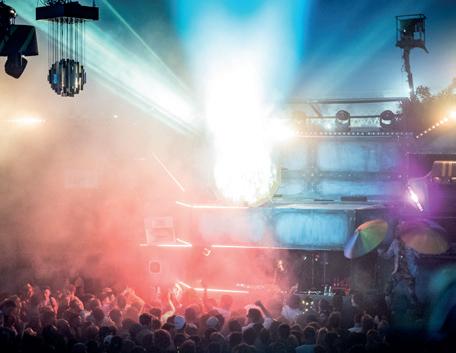
For 11 days in June, as has become tradition now, the city of Copenhagen is going to be filled with a montage of photos and plenty of photo exhibitions, too. Copenhagen Photo Festival has been going since 2010 and is one of the leading events of its kind. Every year, 250 to 300 photographers from all over the world take part in the festival programme. The festival comes with more than 55 exhibitions happening all over Copenhagen and the south of Sweden, so there is plenty to experience and see from both Danish and international photographers. The festival’s central hub is located in Copenhagen’s old industrial neighbourhood turned cultural hotspot, Refshaleøen. There, visitors will be able to attend many of the organised talks and photography exhibitions taking place throughout the festival. Copenhagen, Denmark www.copenhagenphotofestival.com
Helsinki Samba Carnaval (9-15 June)
The streets of the Finnish capital rarely look as colourful as they do when this event comes to town! Helsinki Samba Carnaval is one of the largest annual summer events in Helsinki and takes place every June. The event is growing in popularity, attracting up to 40,000 spectators every year. It has become the biggest carnival event in Finland and in addition to locals flocking to it, it’s now seeing tourists from all over the world descend upon Helsinki to soak up the spirited atmosphere. The event offers a packed programme open to all and free of charge, including workshops, celebrations and, of course, the vibrant carnival parades! The carnival is suitable for everyone, from young children to adults.
Helsinki, Finland www.helsinkisambacarnaval.fi
GENERATION (19-22 June)
GENERATION is returning again in 2025 as Copenhagen's new film festival, centred on the most distinctive and courageous talents in film art. This year, the festival will once again spread throughout the city, when Empire Bio, Cinemateket,
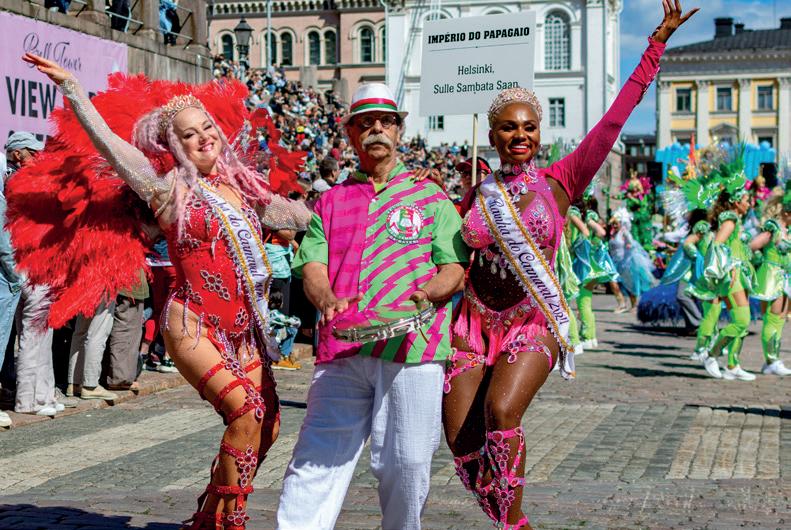
and
collaborate to invite the public to attend film screenings, parties, artist meetings and agenda-setting debates. Over four days in June, GENERATION 2025 will be presenting innovative works from a new generation of young filmmakers, each of whom has the potential to shape the fu-
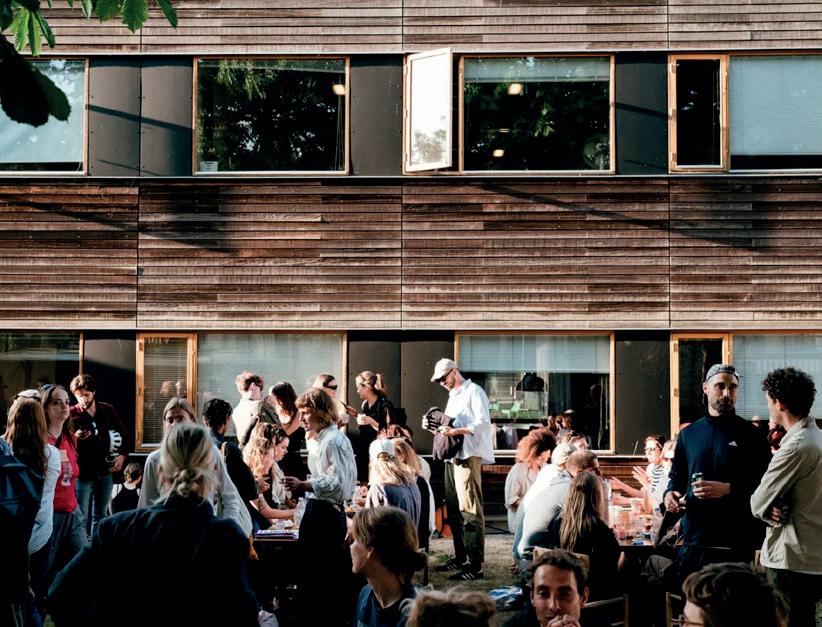

ture of both Danish and international film. The event is supplemented with talks and debates with filmmakers, artists and opinion leaders, providing new perspectives on the films and on the great conversations of the time.
Copenhagen, Denmark www.generationfestival.dk
Kylie Minogue’s Tension Tour is the international pop icon’s biggest tour since 2011, and she’s taking it to the Nordics in June. The Australian artist will take the stage at Metro Areena in Espoo, Finland on 23 June, at the Avicii Arena in Stockholm, Sweden on 25 June and at the Tinderbox Festival in Odense, Denmark on 27 June. Kylie Minogue concerts have earned a reputation for being a top-tier night of fun, from which you’ll leave with good vibes only. Well, and perhaps also a hoarse throat from singing along to so many of her beloved hits.
Espoo, Finland / Stockholm, Sweden / Odense, Denmark www.kylie.com/live
STHLM Fields is an outdoor stage that opens every summer at Gärdet in the heart of Stockholm, where a series of concerts with an outdoor festival vibe will be held in late June inside the idyllic urban park. Over the past few years, its popularity has attracted many Swedish and international stars to its stage, and this year is no different. The 2025 series of live shows will take place over four days, with a stellar lineup that boasts the likes of Green Day, Weezer, Muse and Mando Diao. Stockholm, Sweden www.sthlmfields.se
Tuska Music Festival, the biggest heavy metal festival in Northern Europe, is back for another outing this summer. The annual gathering of metalheads has been organised since 1998, and in 2025 it will take place at Suvilahti in Helsinki, which has served as its venue since 2011. Last year’s edition of Tuska Music Festival boasted 60,000 visitors
that gathered during the three festival days. The acts that are performing at this year’s event might cause that number to jump even further, however; the 2025 lineup reads like a who’s who of heavy metal legends, while also adding in some of the genre’s most exciting upand-comers.
Helsinki, Finland www.tuska.fi



Scan Magazine Issue 179 June 2025
Published 06.2025
ISSN 1757-9589
Published by
Scan Client Publishing Print
Stibo Complete
Executive Editor
Thomas Winther
Creative Director
Mads E. Petersen
Editor
Signe Hansen
Copy-editor
Malin Norman
Graphic Designers
Mercedes Moulia
Mauro Salerno
Cover Photo
Simon Meyer
Contributors
Anders Lorenzen
Celina Tran
Emma Rödin
Eva-Kristin Urestad Pedersen
Karl Batterbea
Sofia Nordgren
Malin Norman
Gabi Froden
Maria Sødal Vole
Molly McPharlin
Ndéla Faye
Brett Xander
Sales & Key Account Managers
Emma Fabritius Nørregaard
Johan Enelycke Mette Tonnessen
Advertising marketing@scanmagazine.co.uk
To Subscribe scanmagazine.co.uk/subscribe
Scan Magazine Ltd
3rd floor, News Building, 3 London Bridge Street, London SE1 9SG, United Kingdom www.scanclientpublishing.com info@scanmagazine.co.uk www.scanmagazine.co.uk
© All rights reserved. Material contained in this publication may not be reproduced, in whole or in part, without prior permission of Scan Magazine Ltd.
Scan Magazine® is a registered trademark of Scan Magazine Ltd.
This magazine contains advertorials/promotional articles
